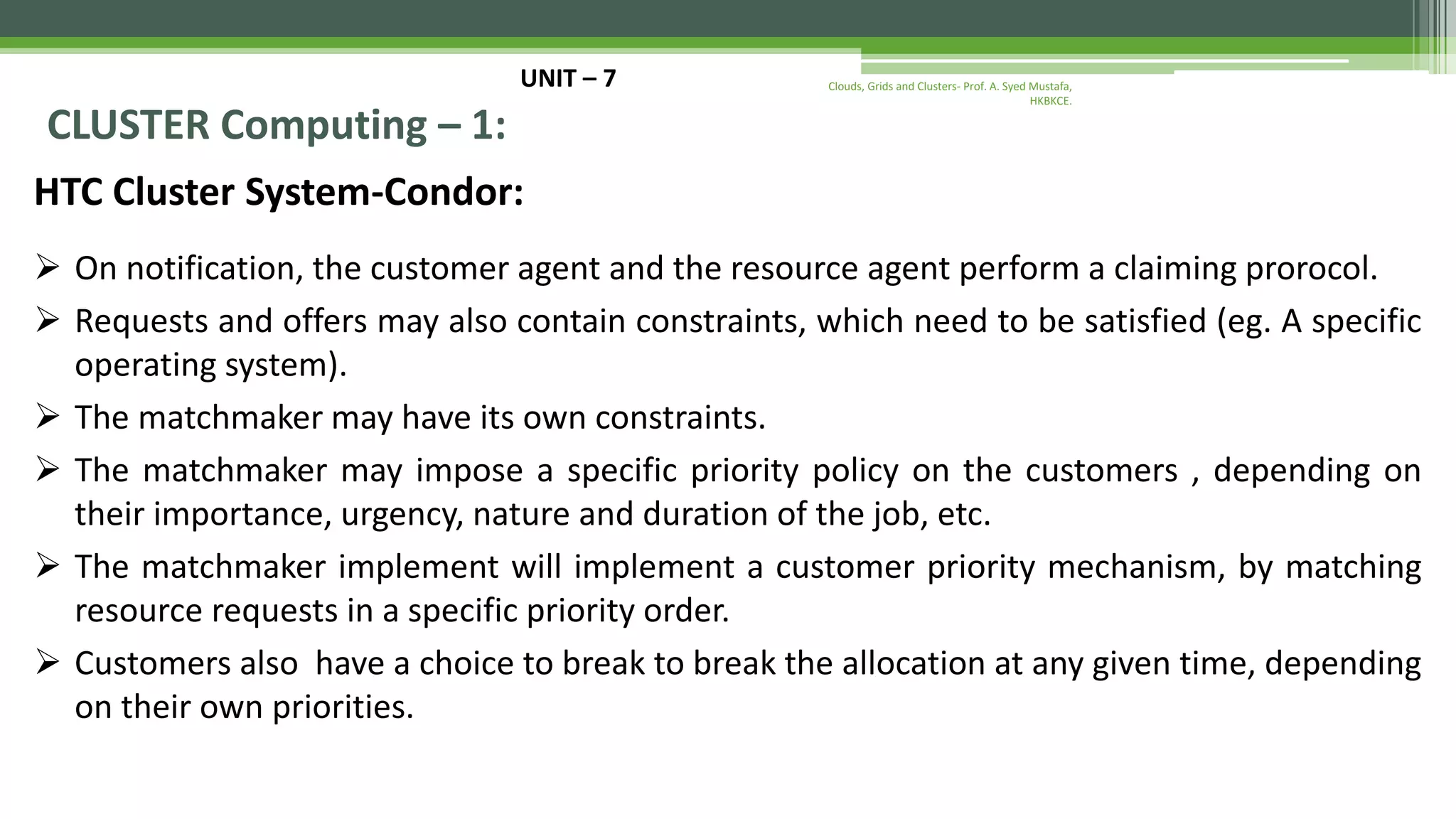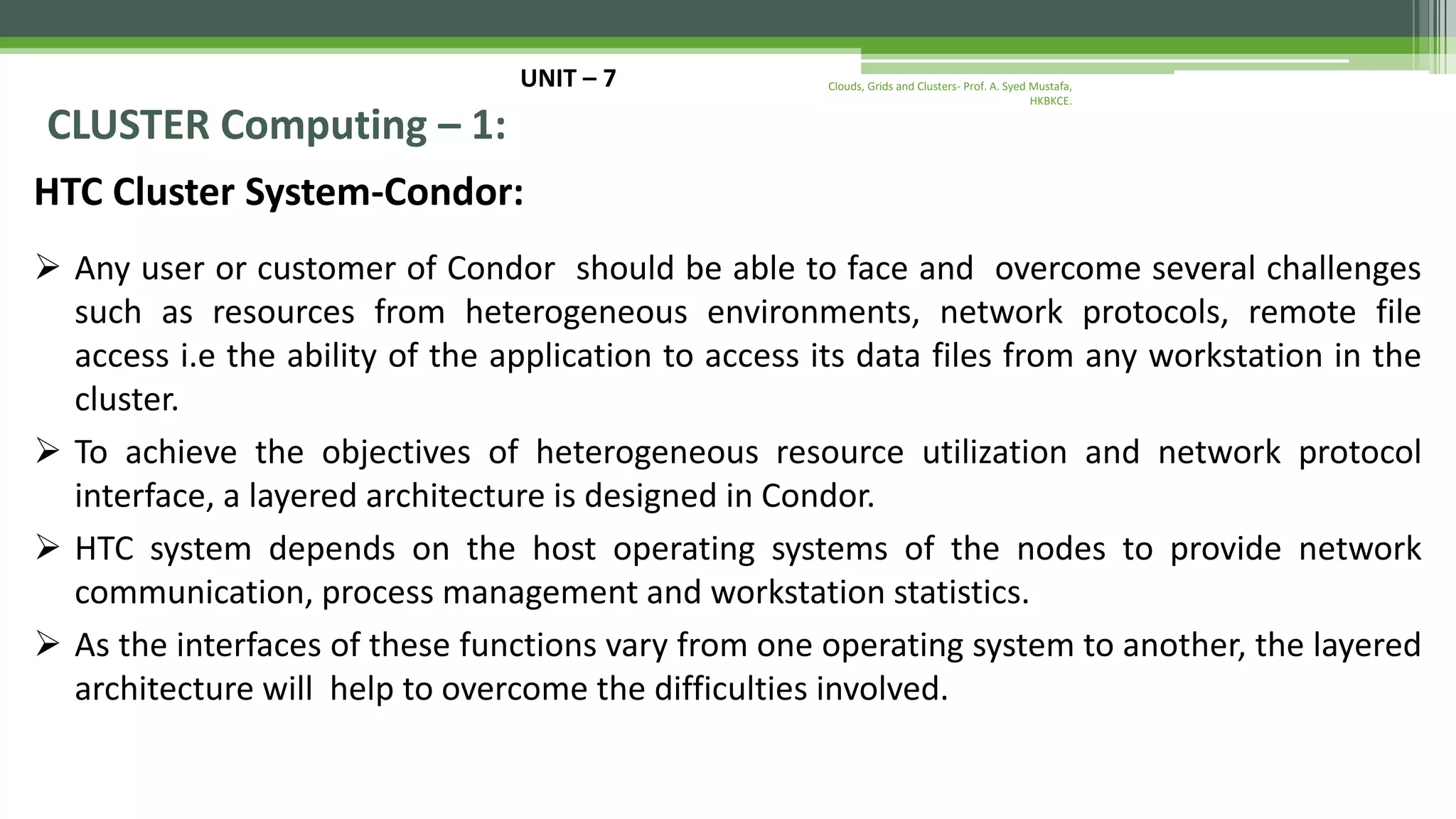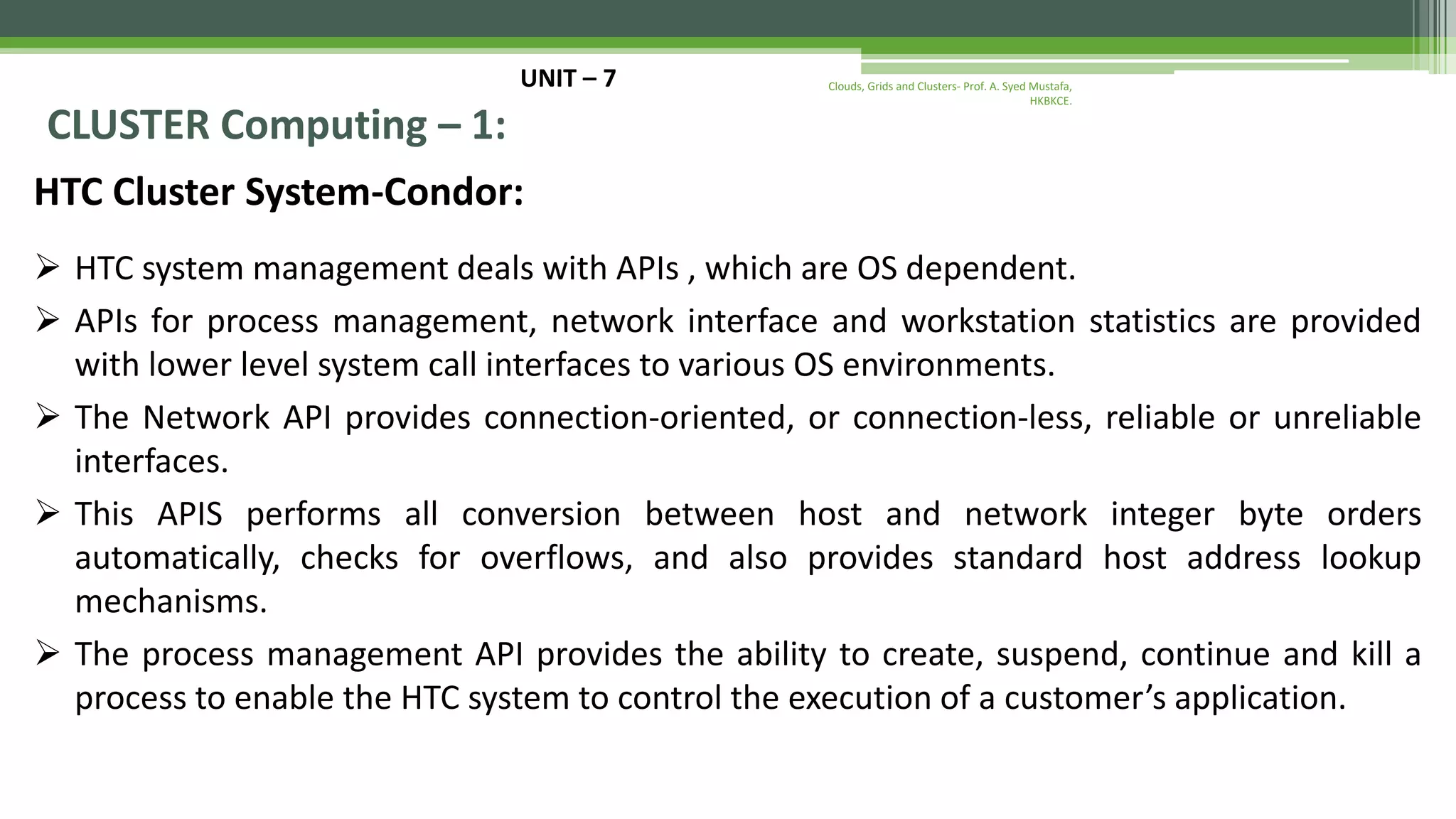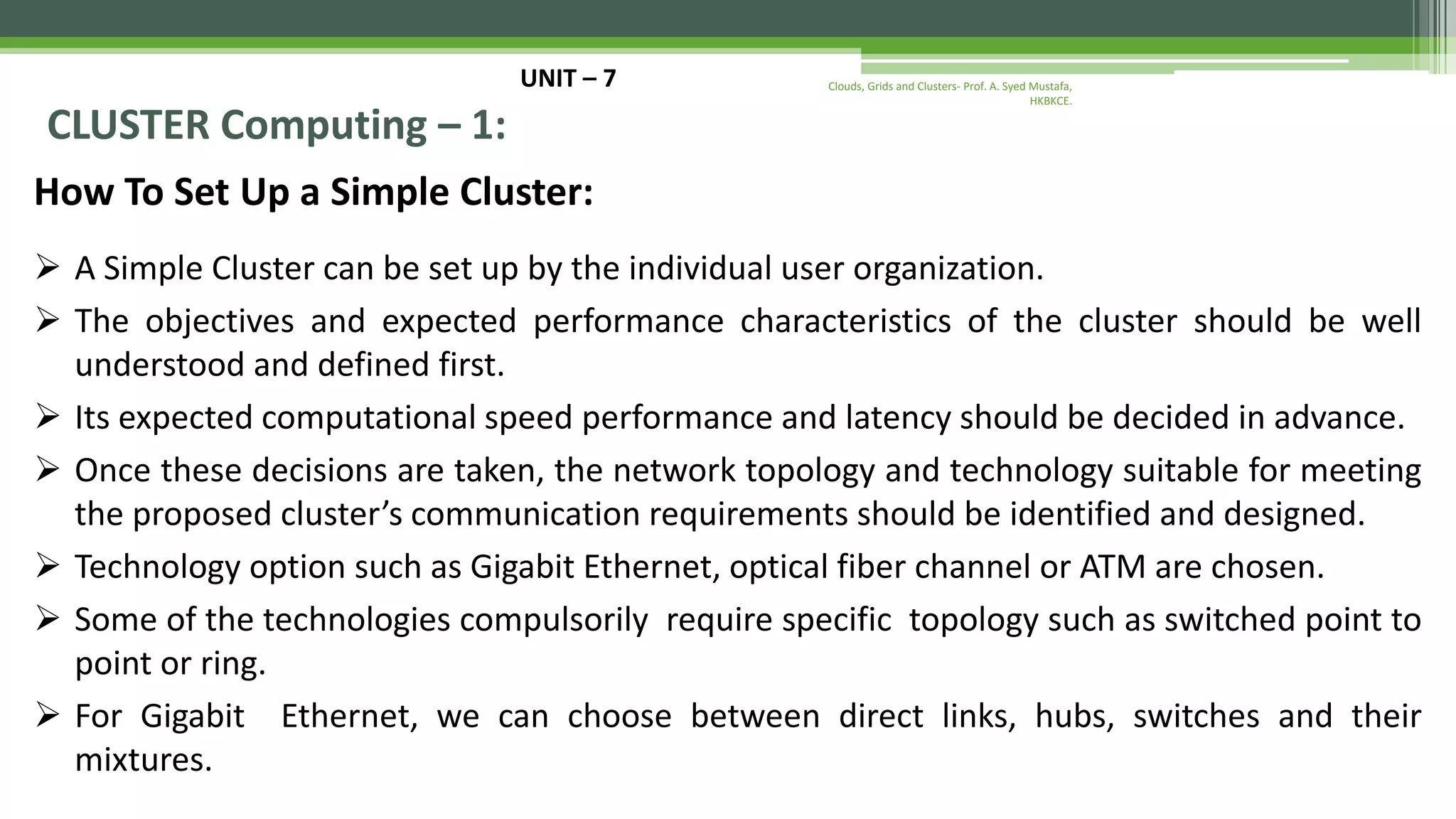1. Grid computing is a distributed computing approach that allows users to access computational resources over a network. It aims to dynamically allocate resources like processing power, storage, or software according to user demands. 2. Grid computing provides a utility-like model for accessing computing resources. Users can access resources from a grid in the same way users access utilities like power or water grids. 3. Key benefits of grid computing include maximizing resource utilization, providing fast and cheap computing services, and enabling collaboration through secure resource sharing across organizations. Grid computing has applications in scientific research, businesses, and e-governance.



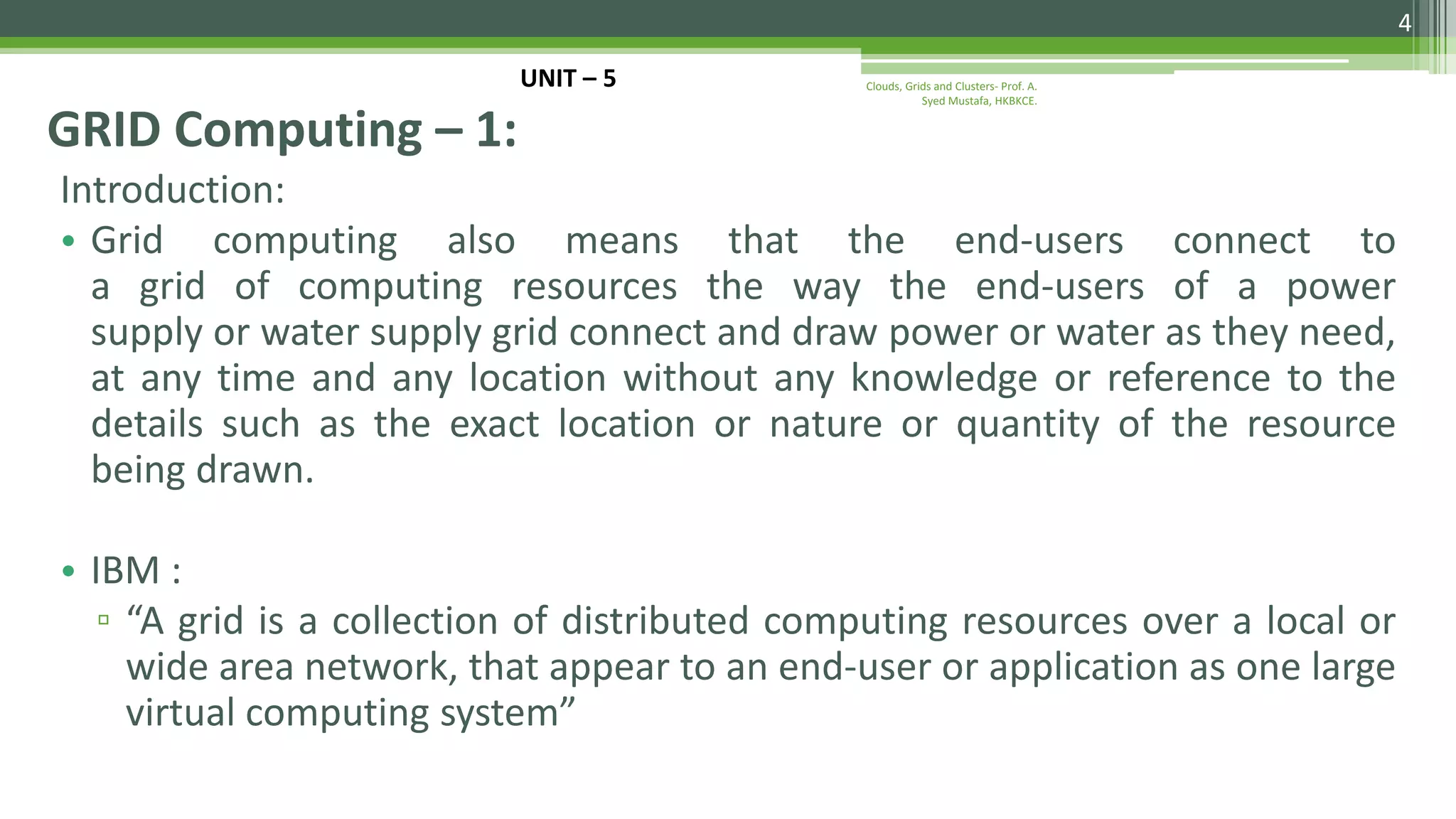
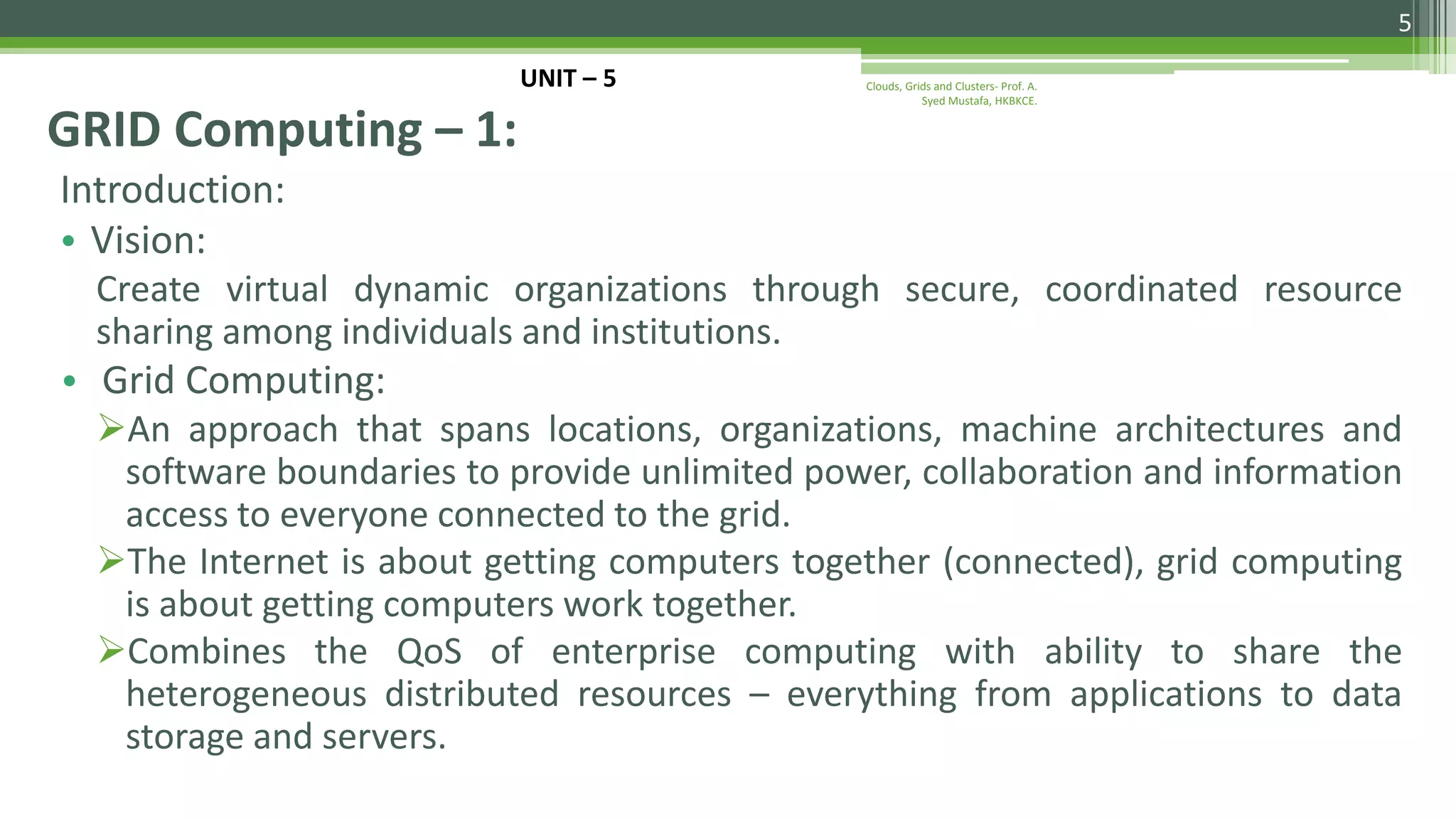
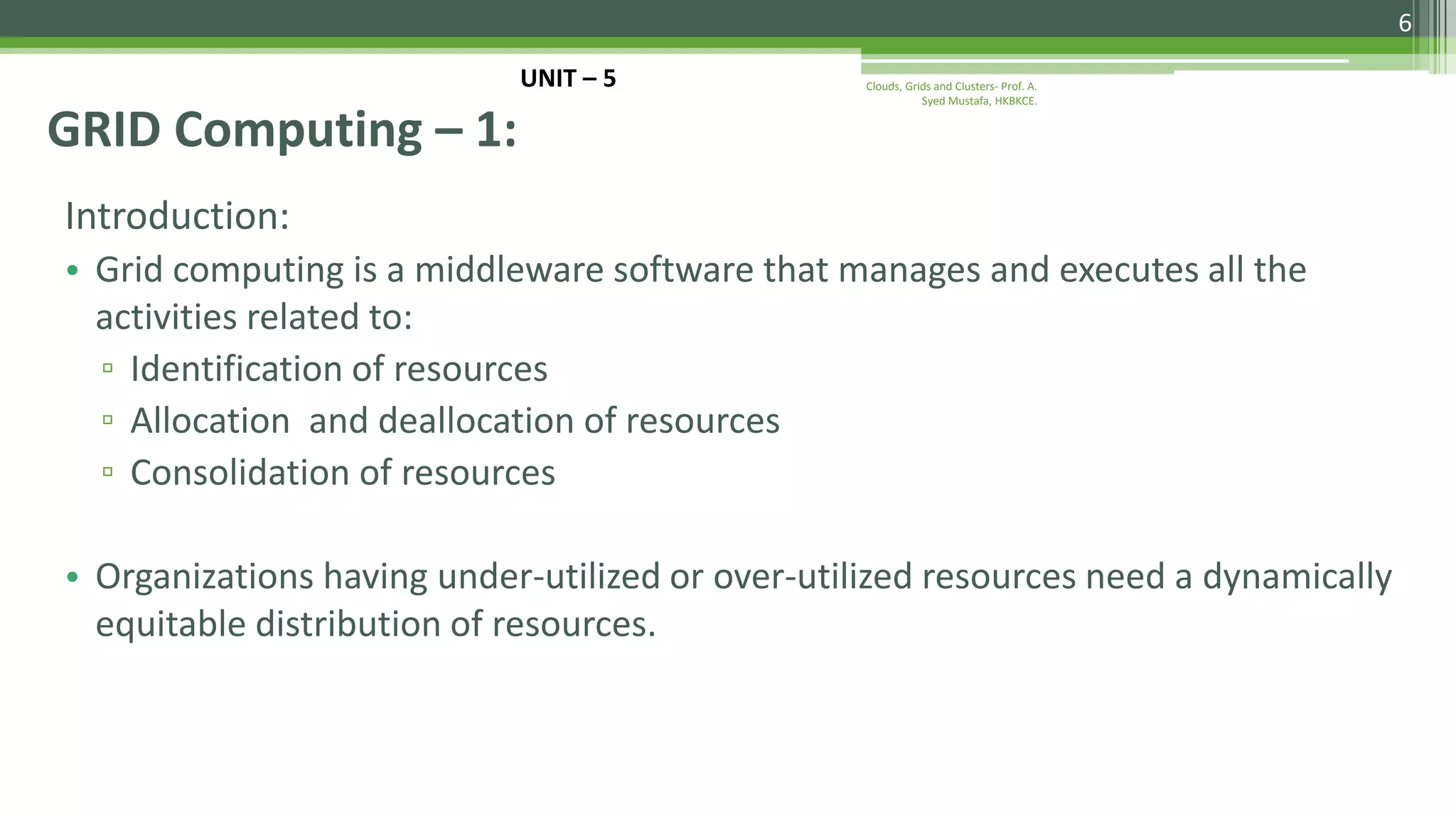
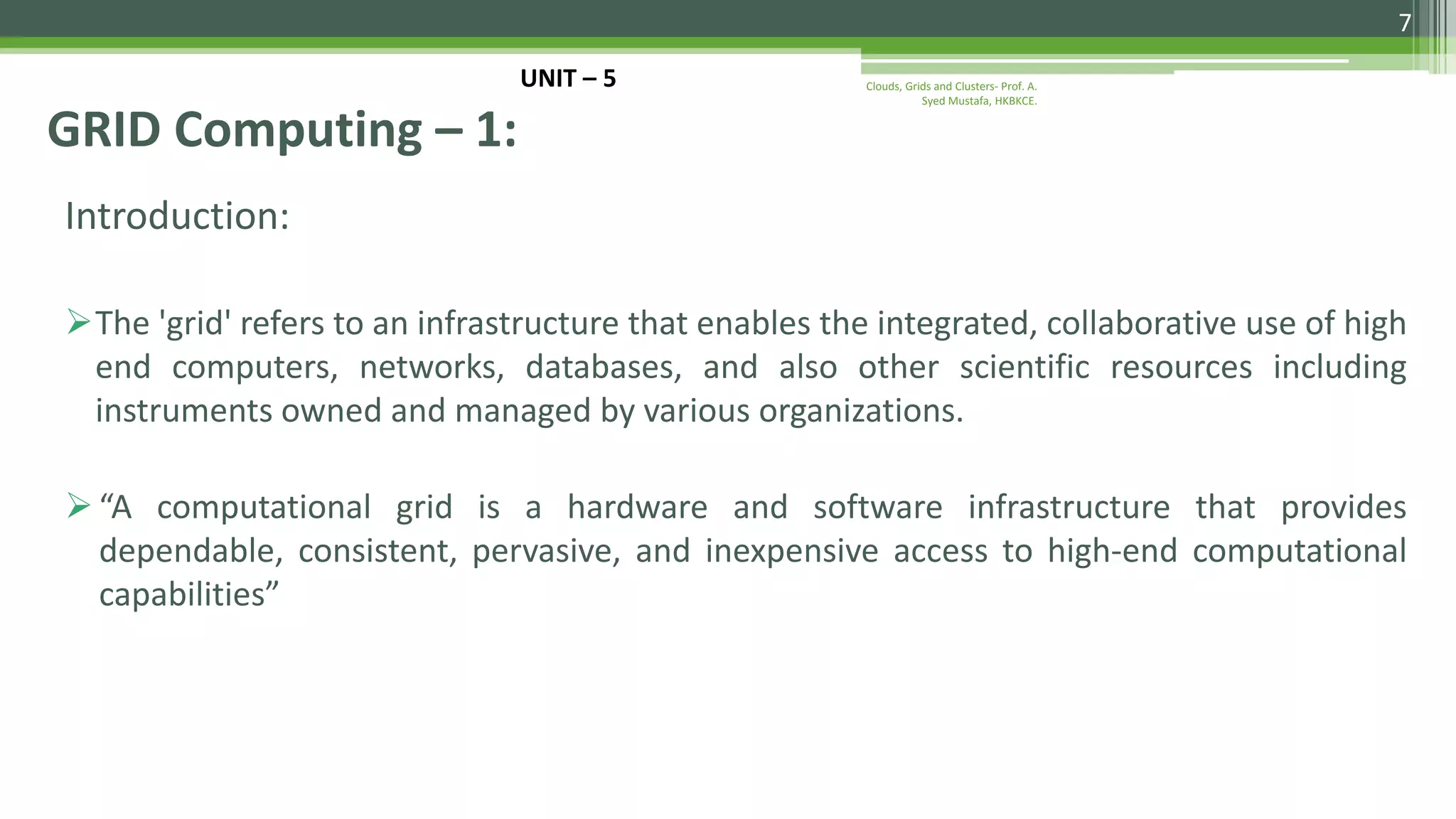
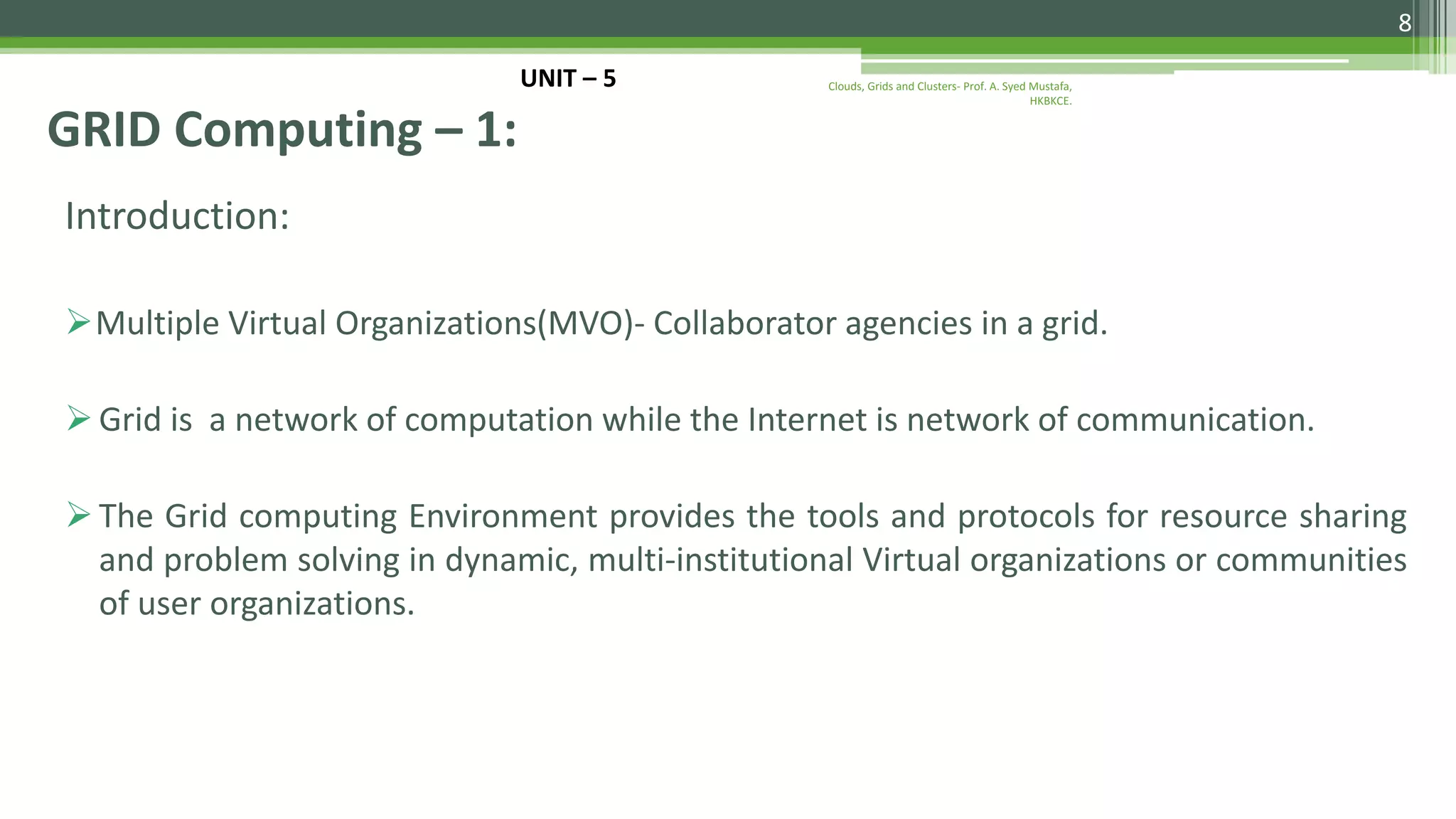
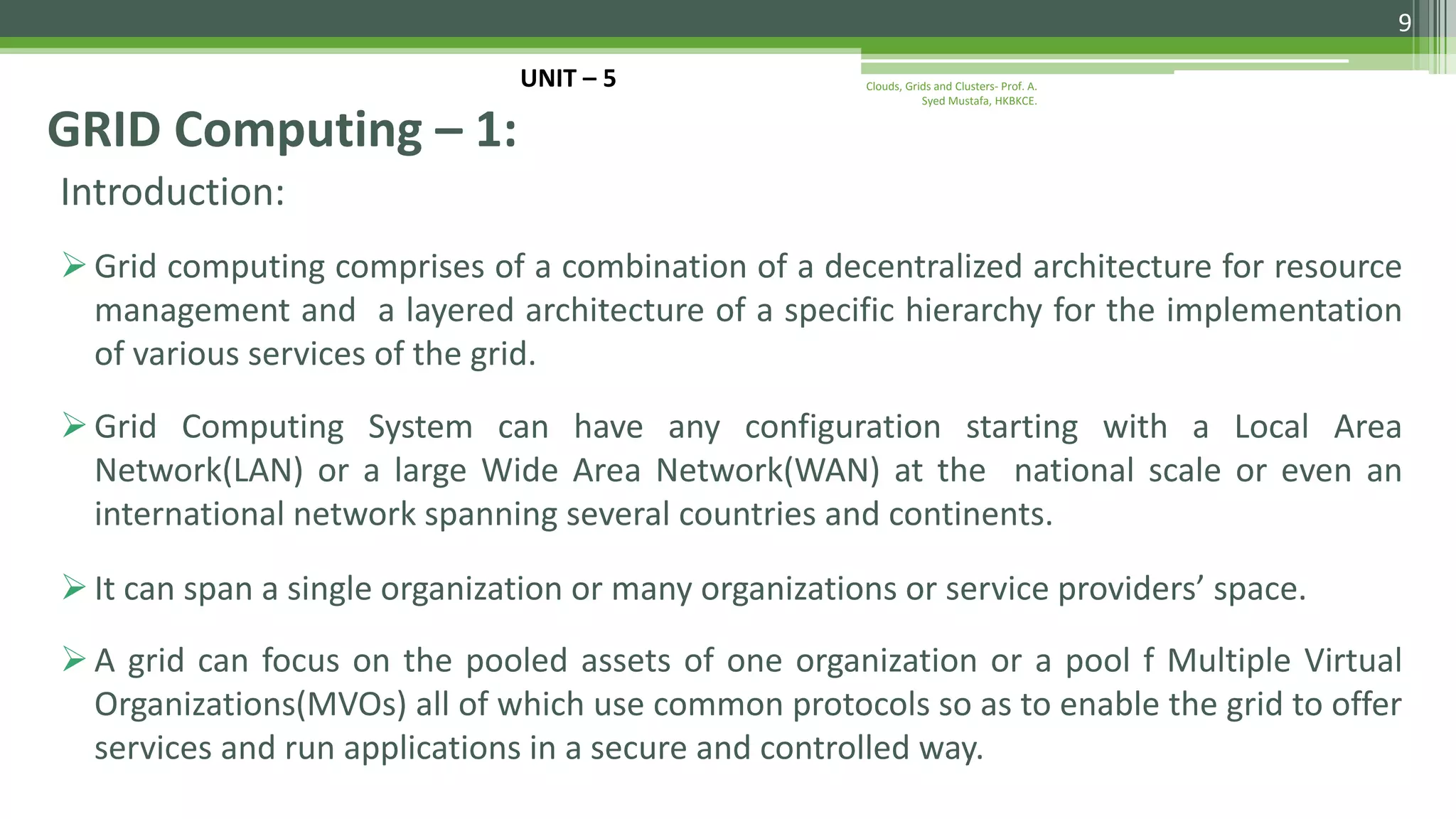

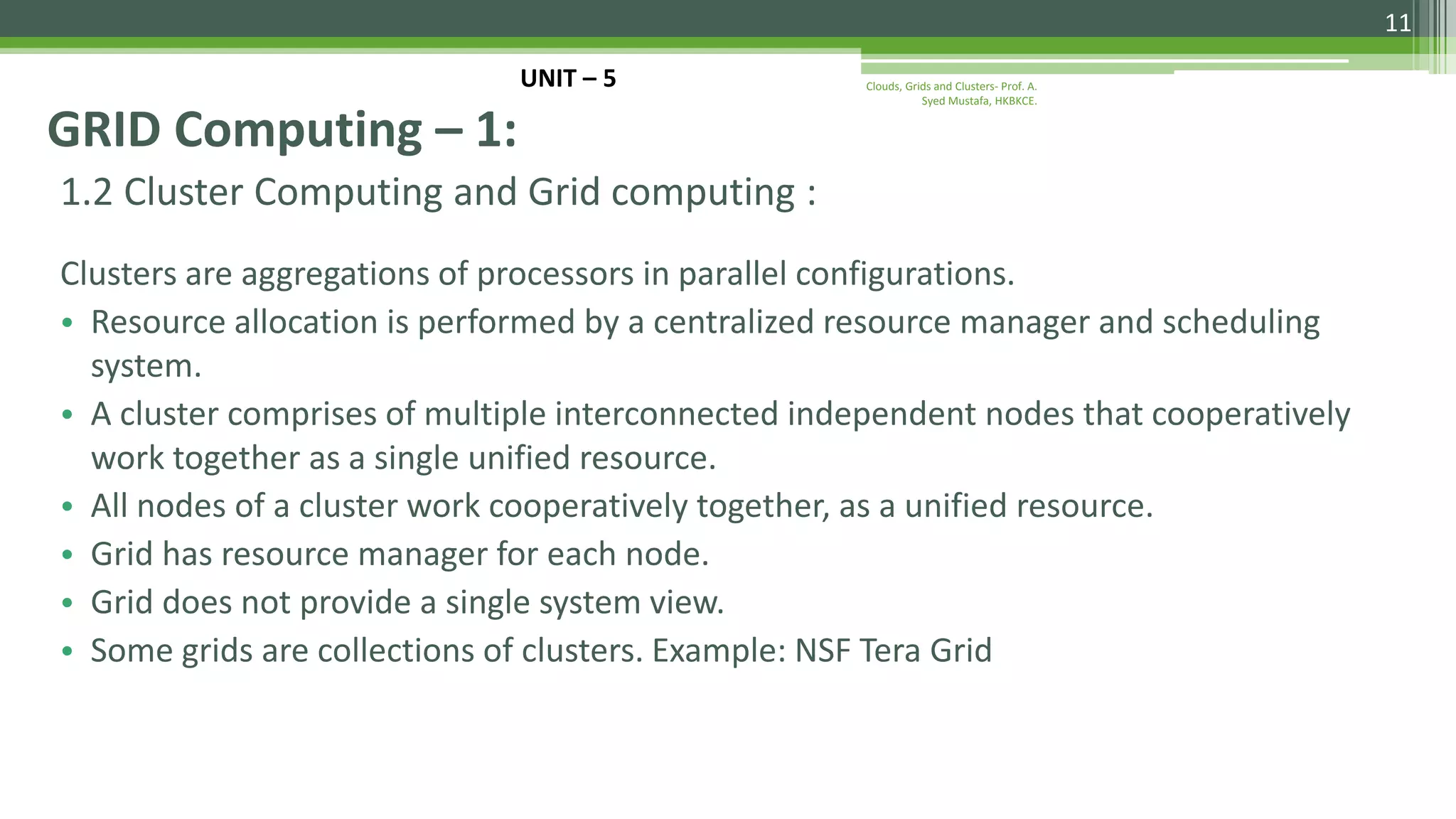


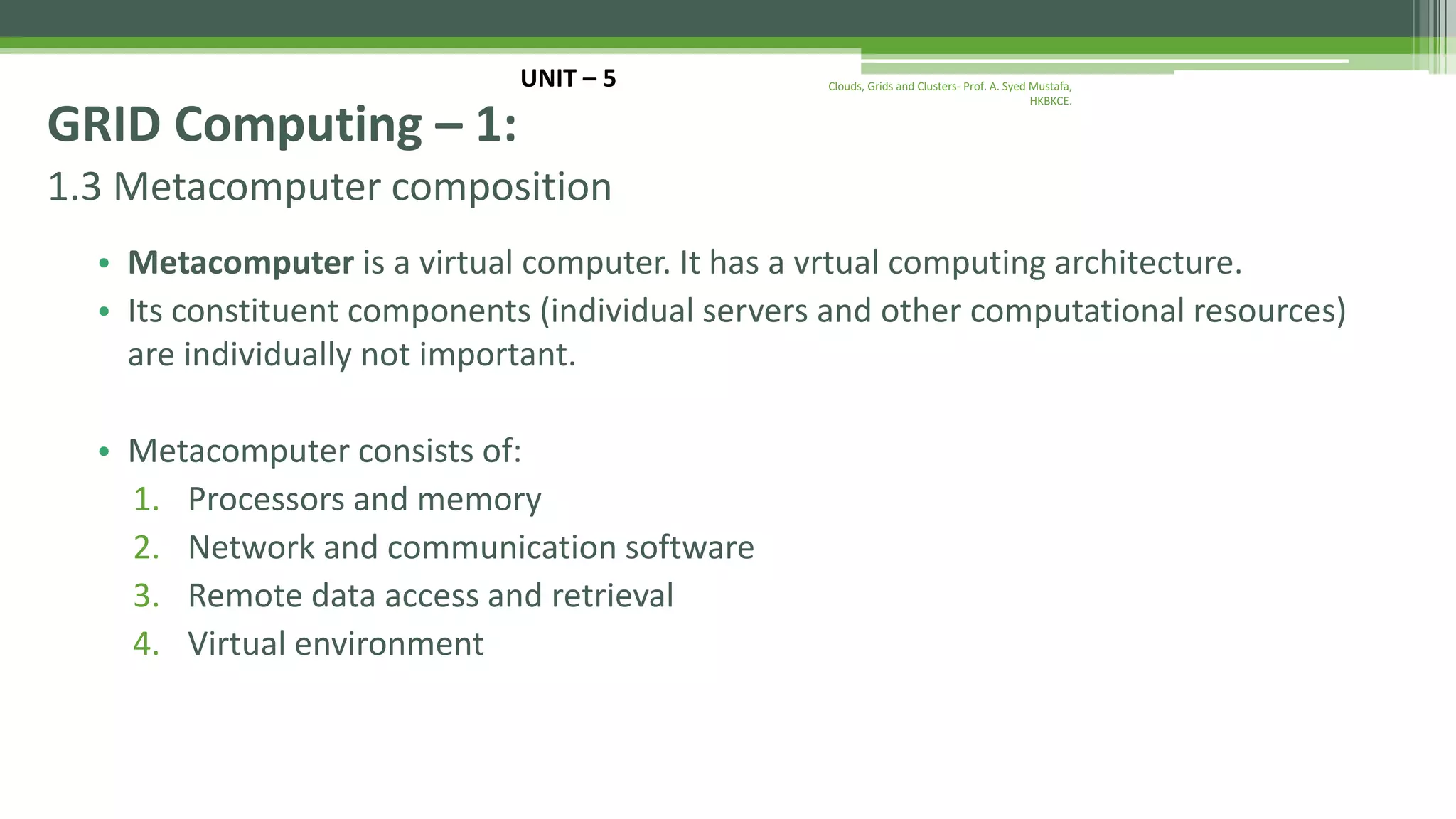

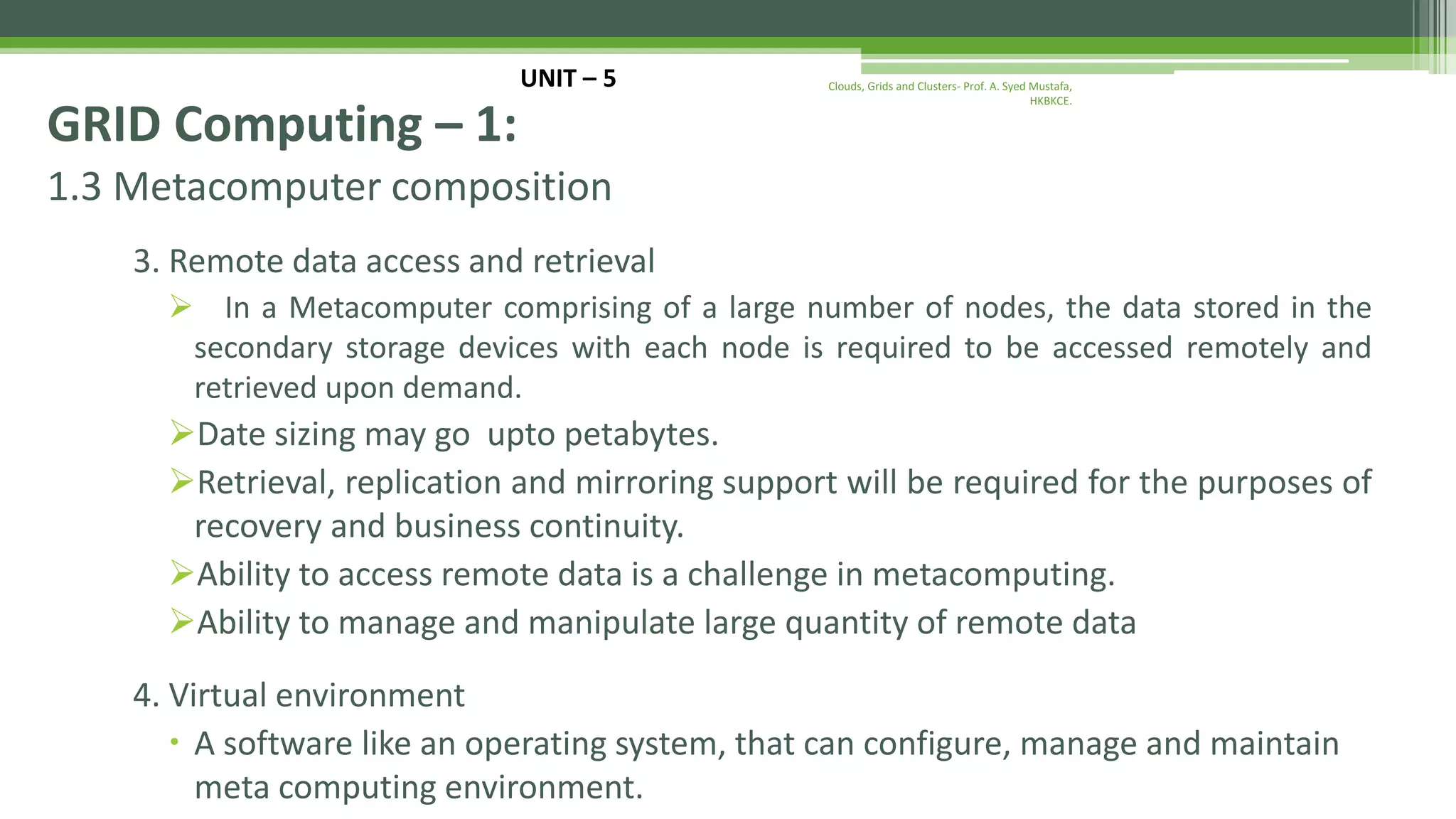
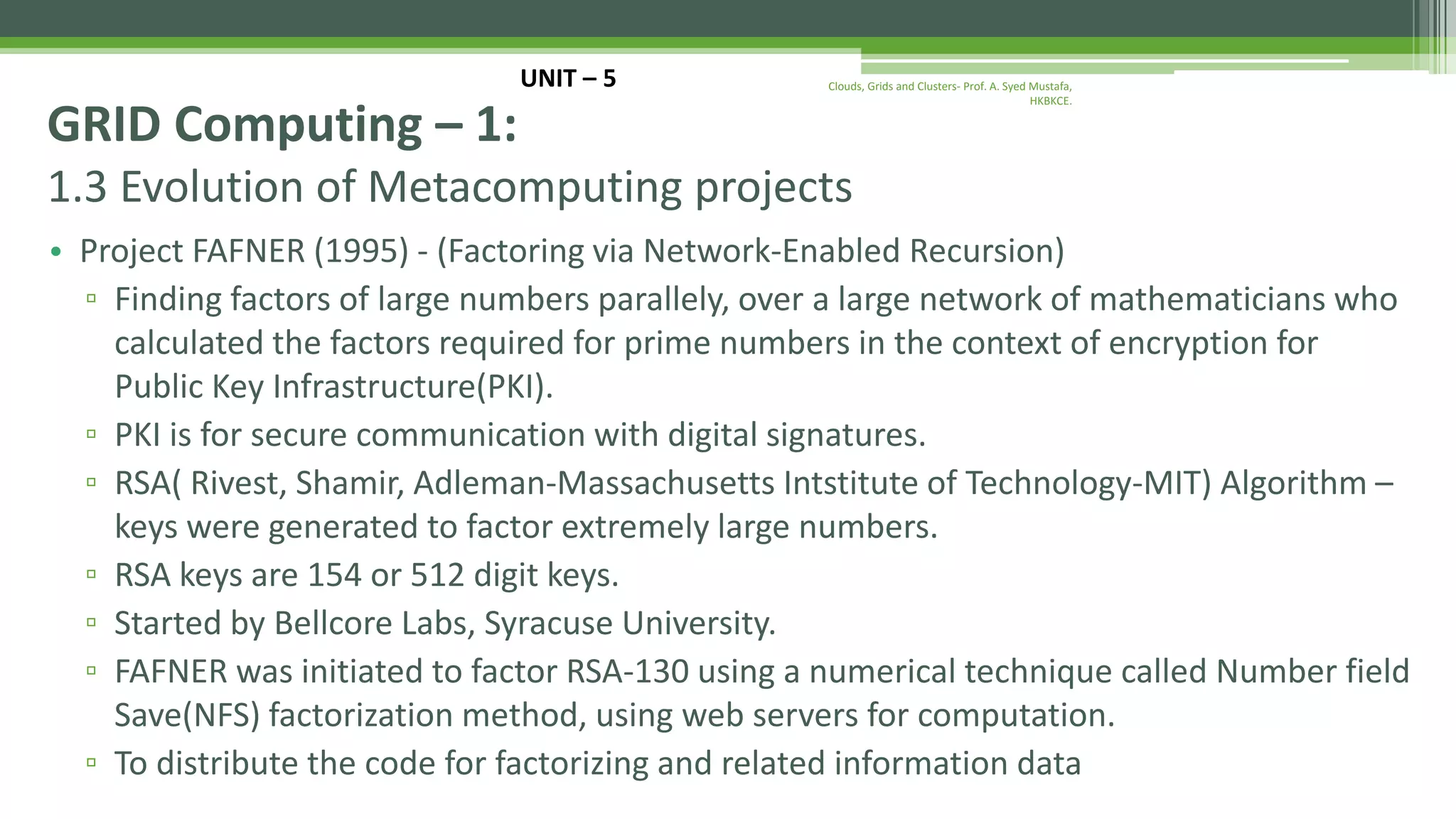
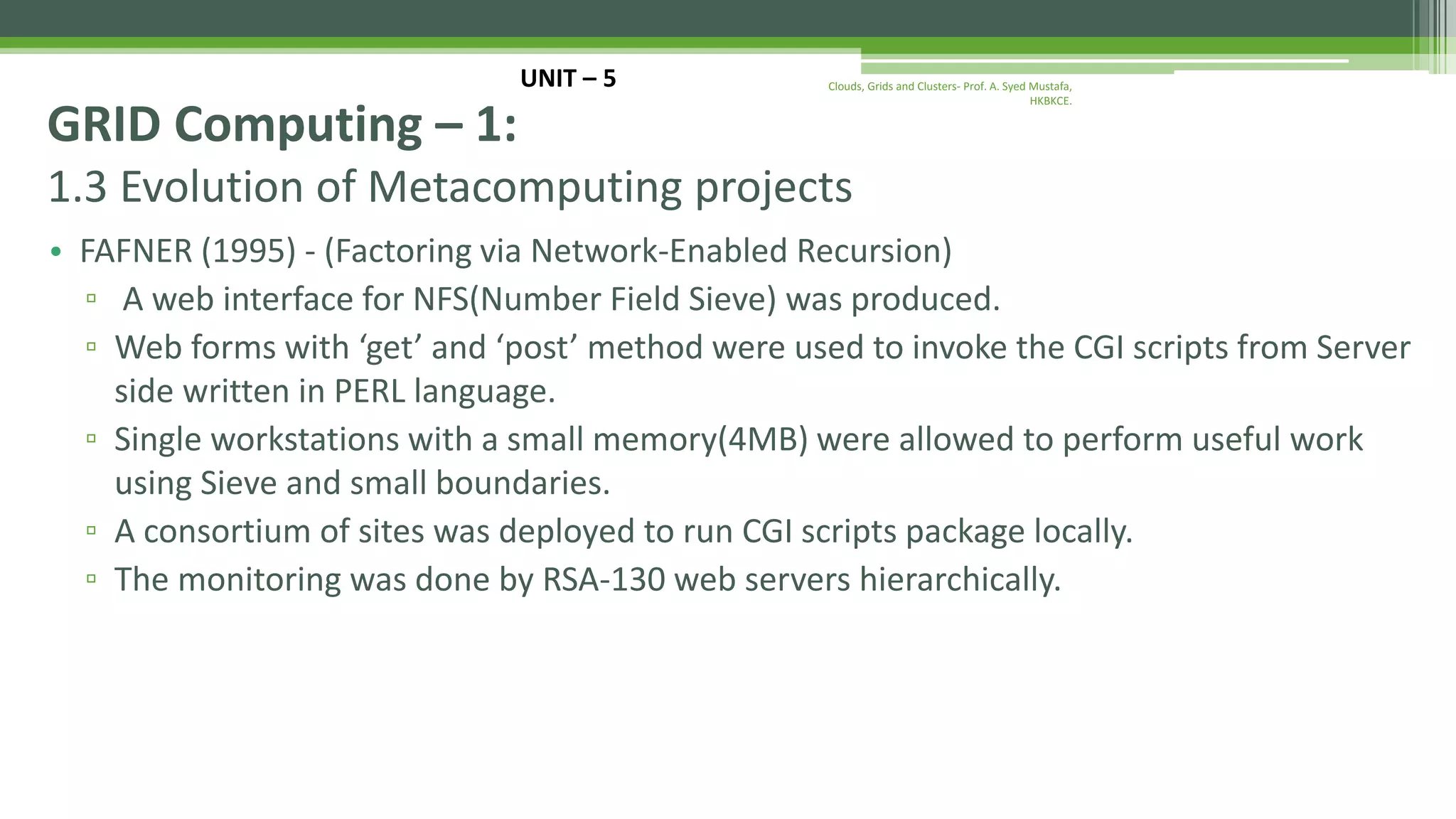
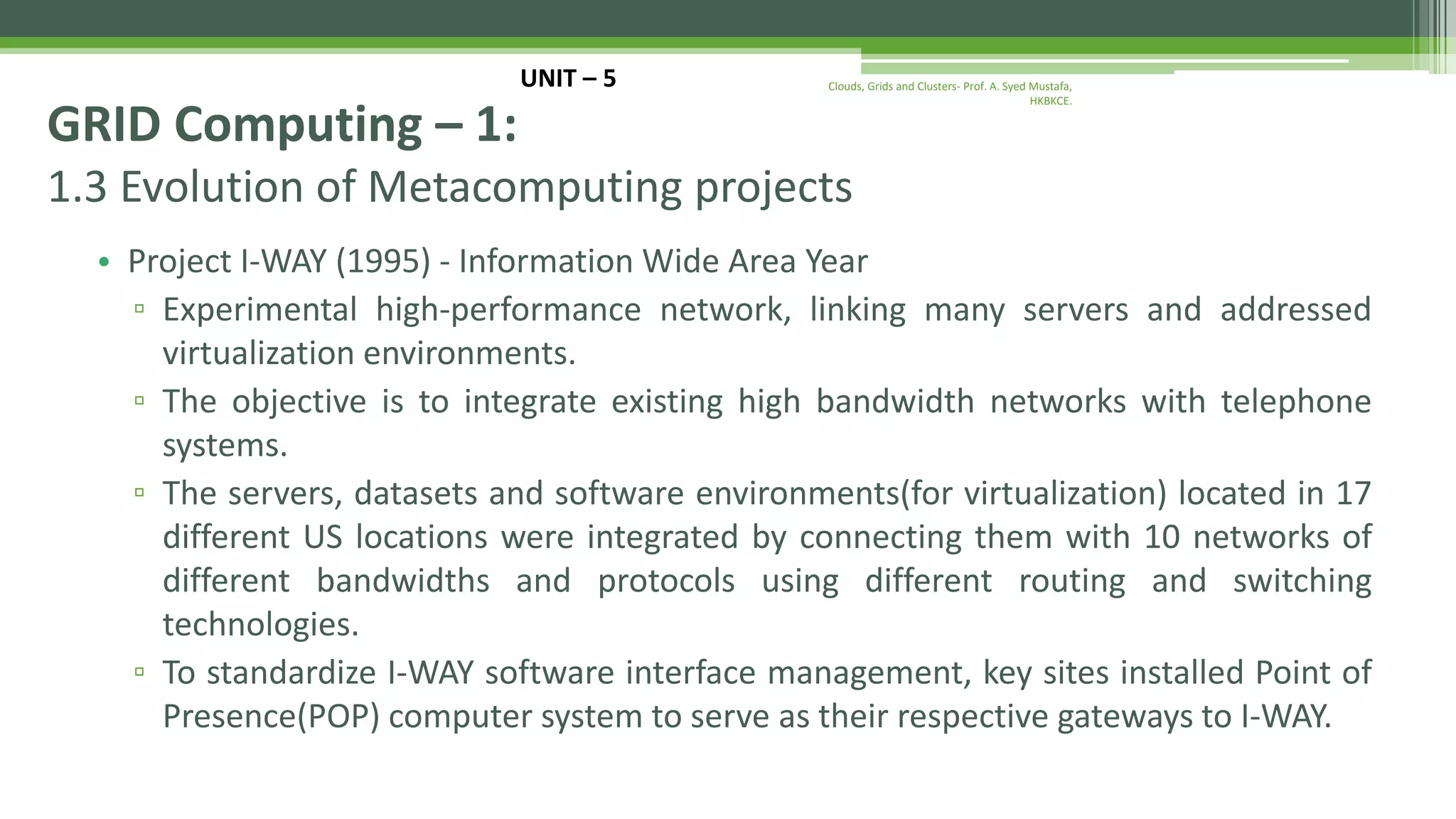
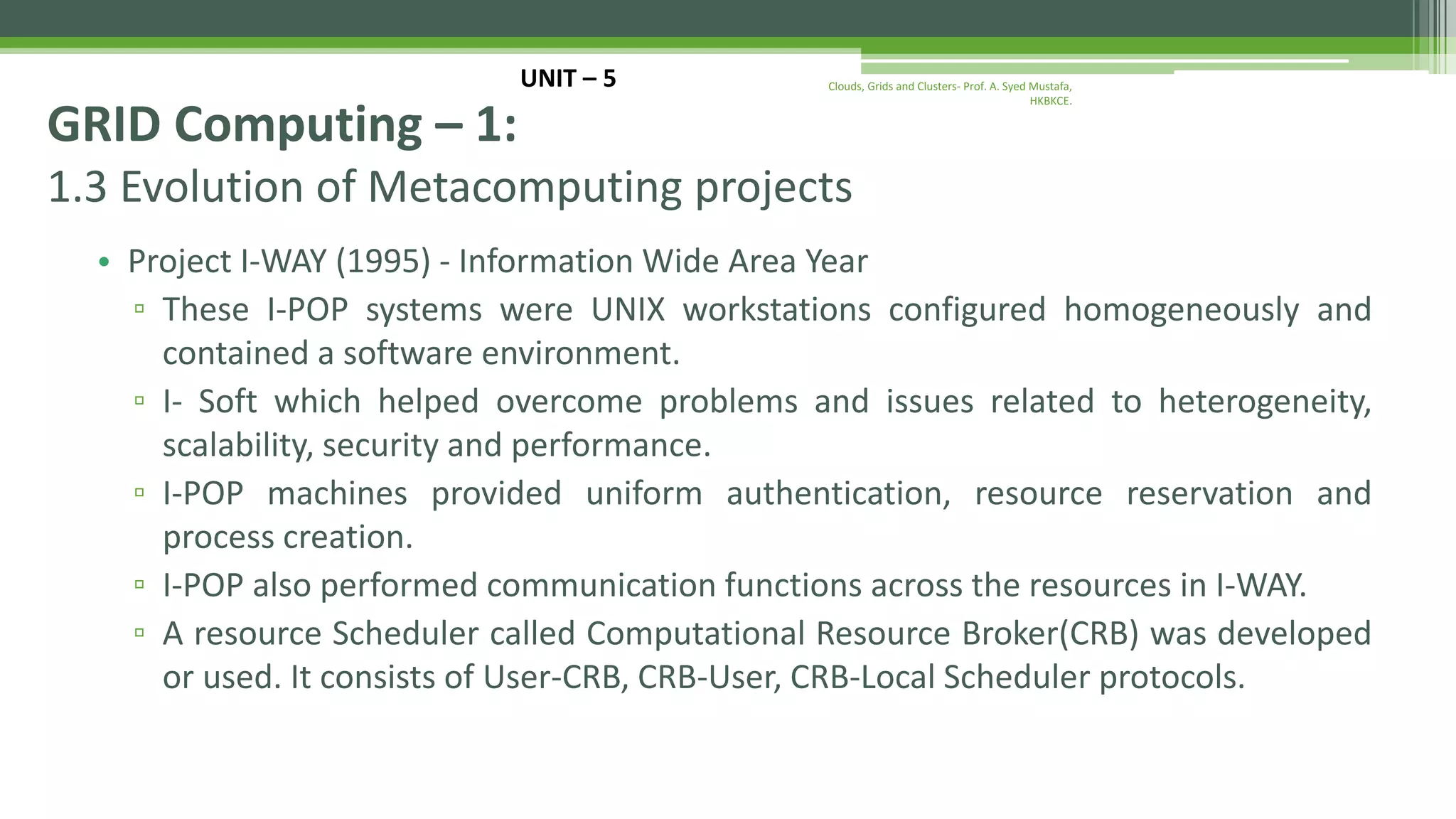
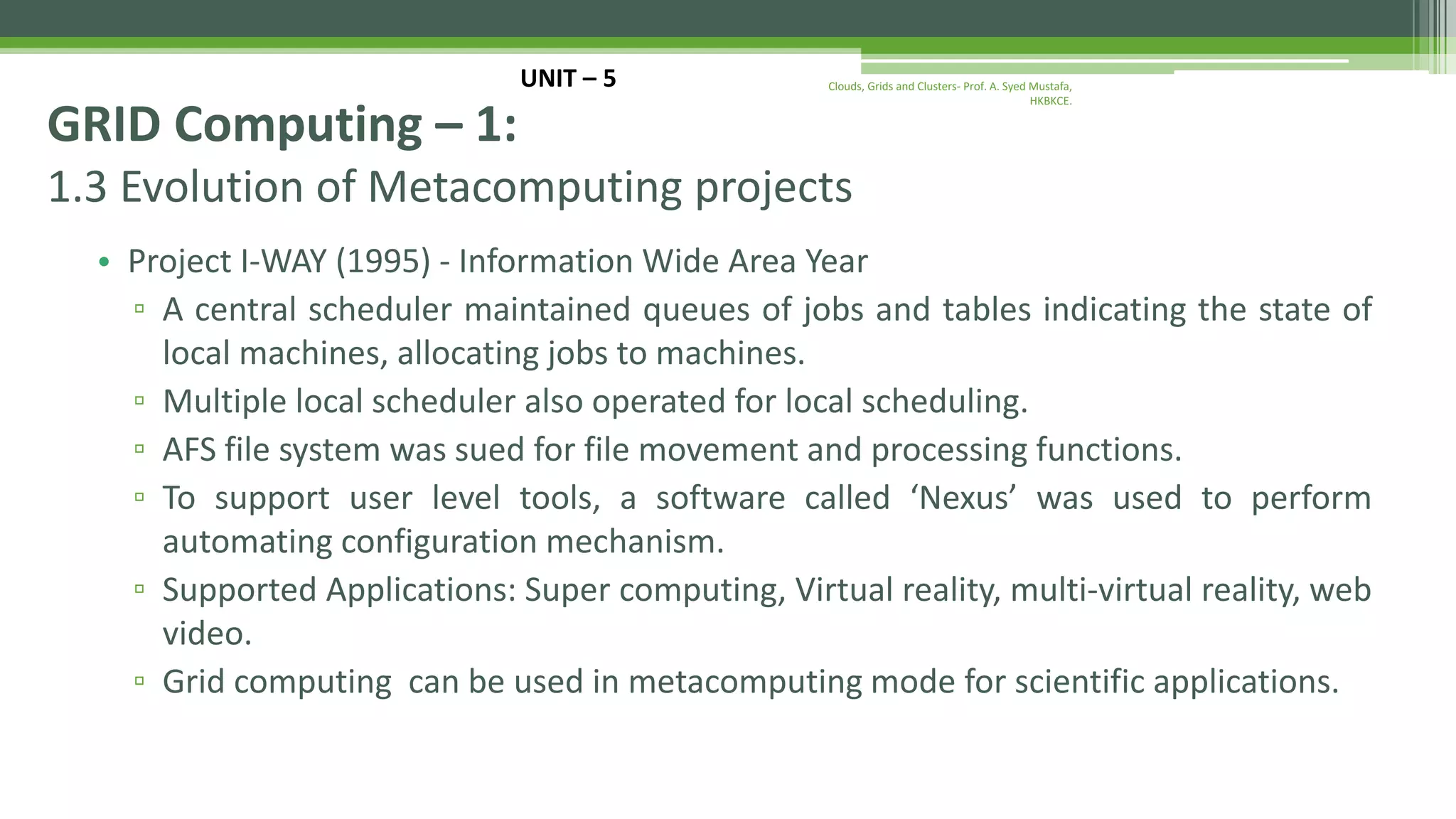
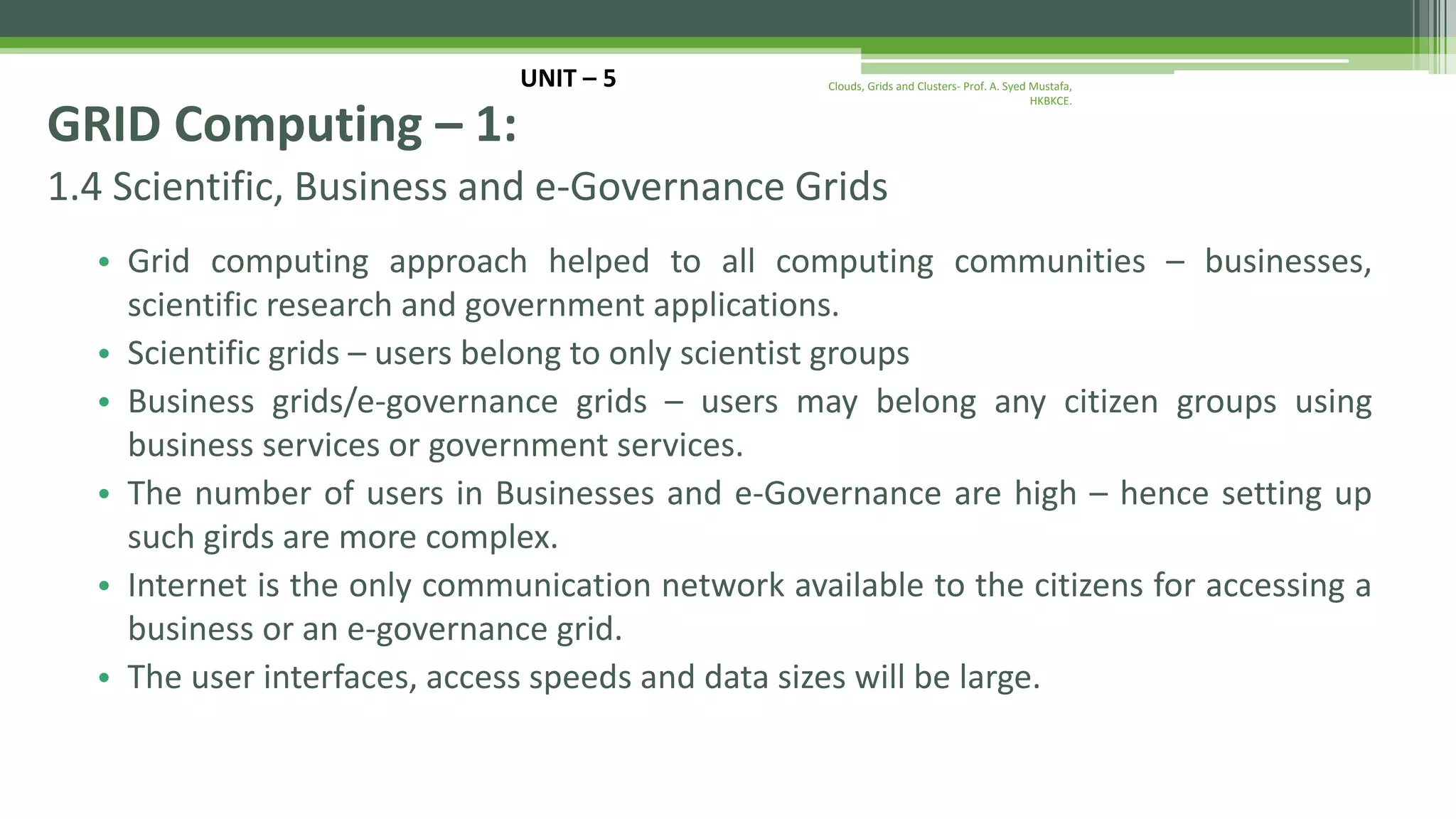
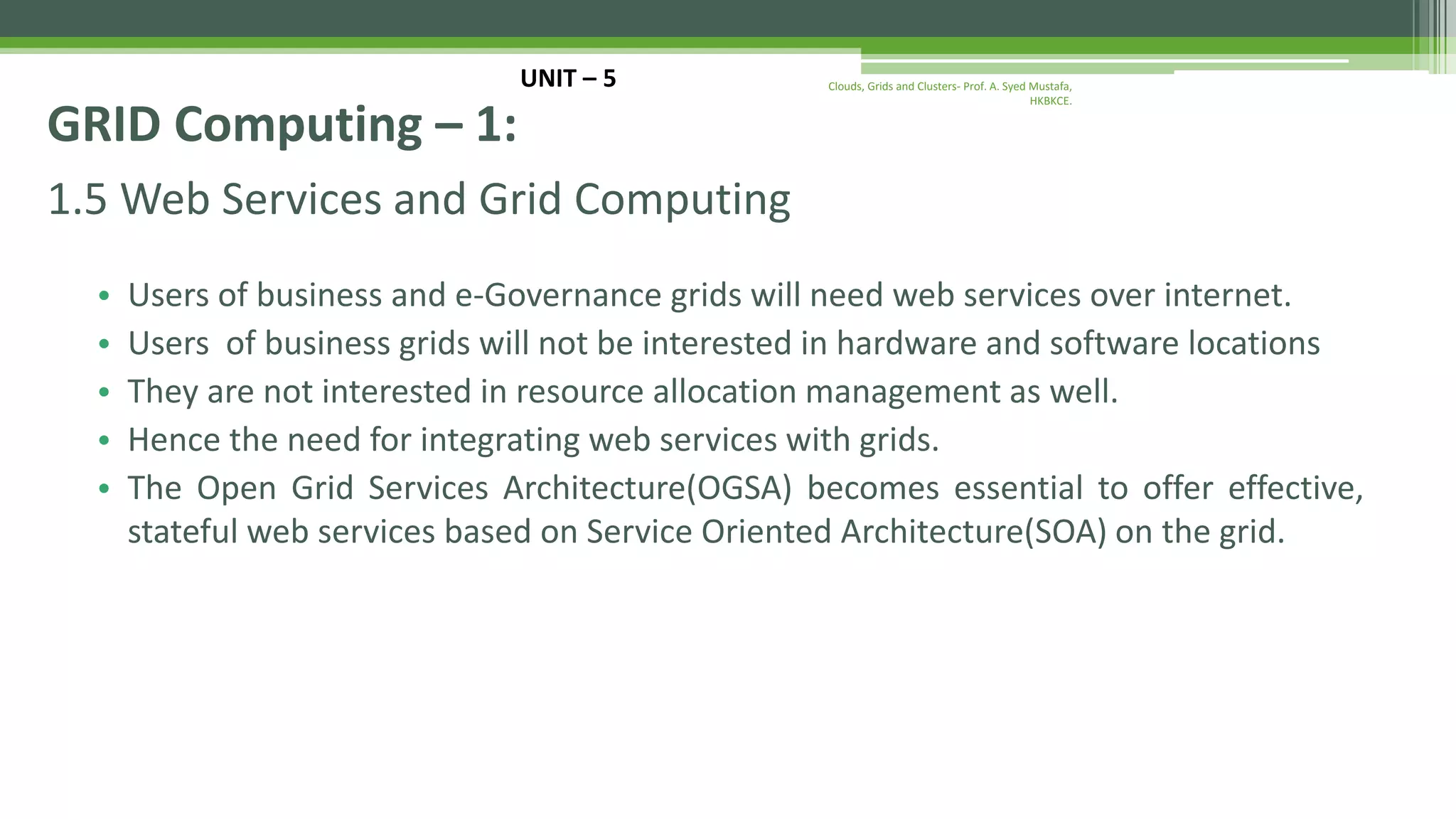
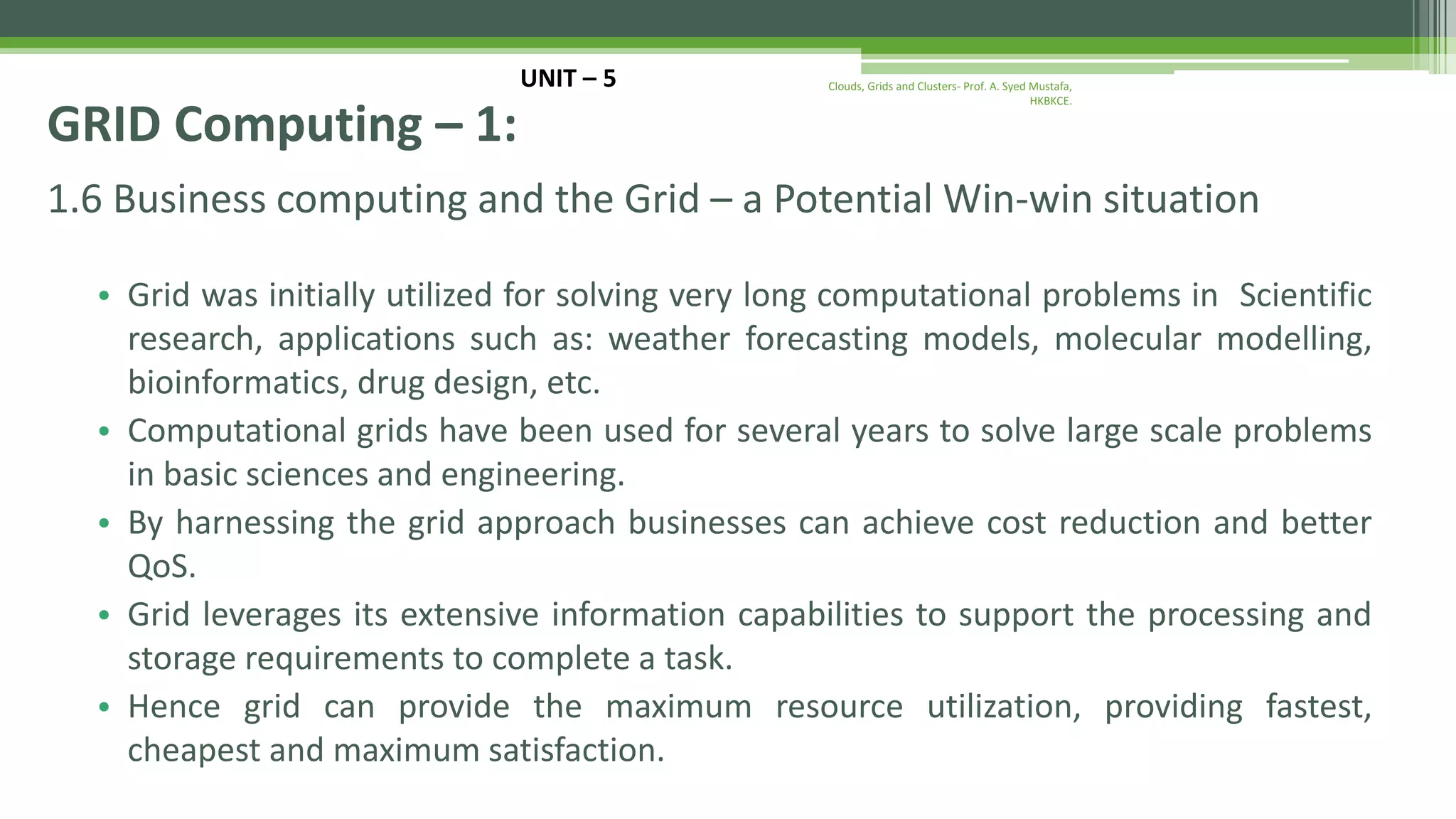
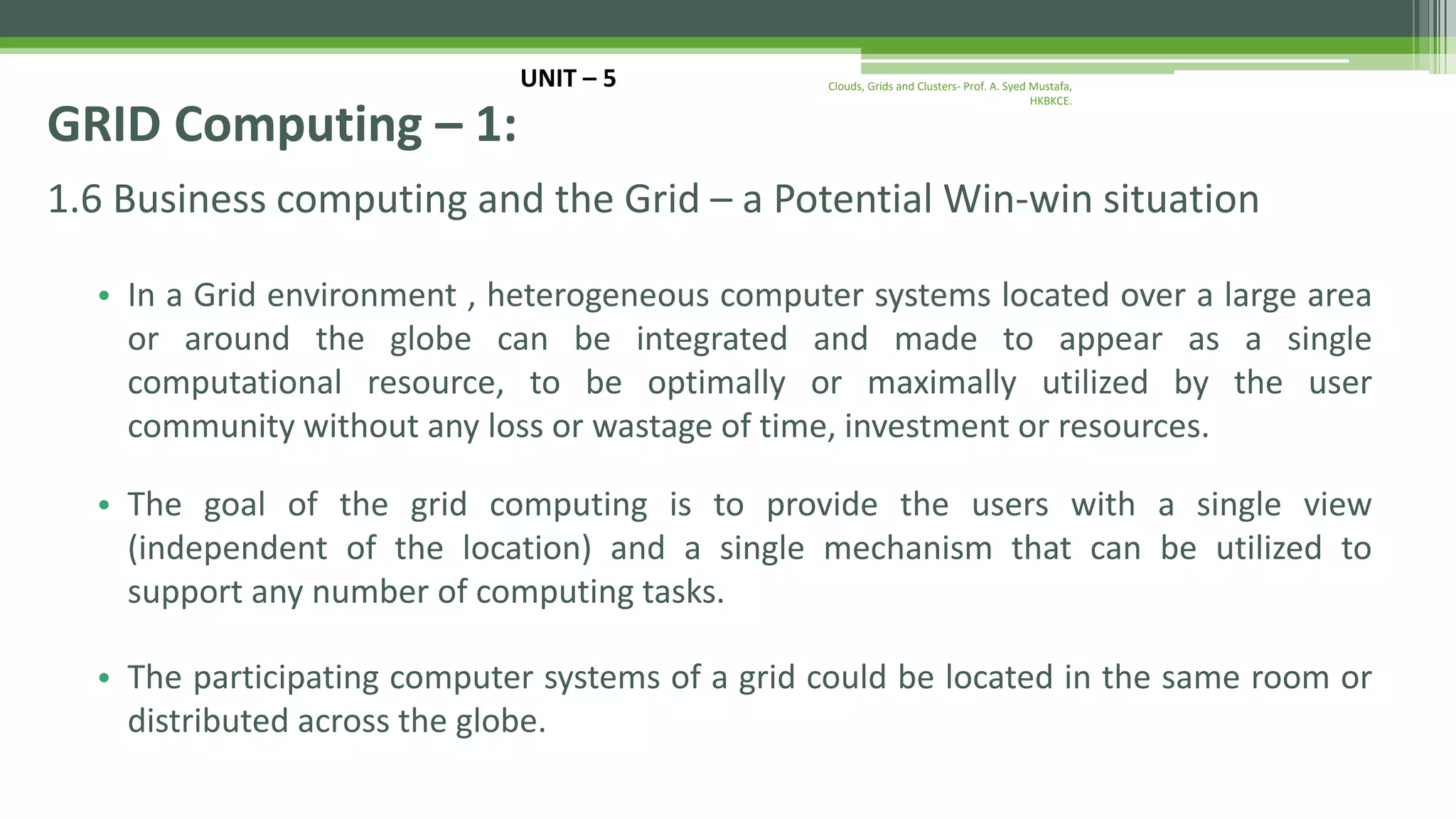
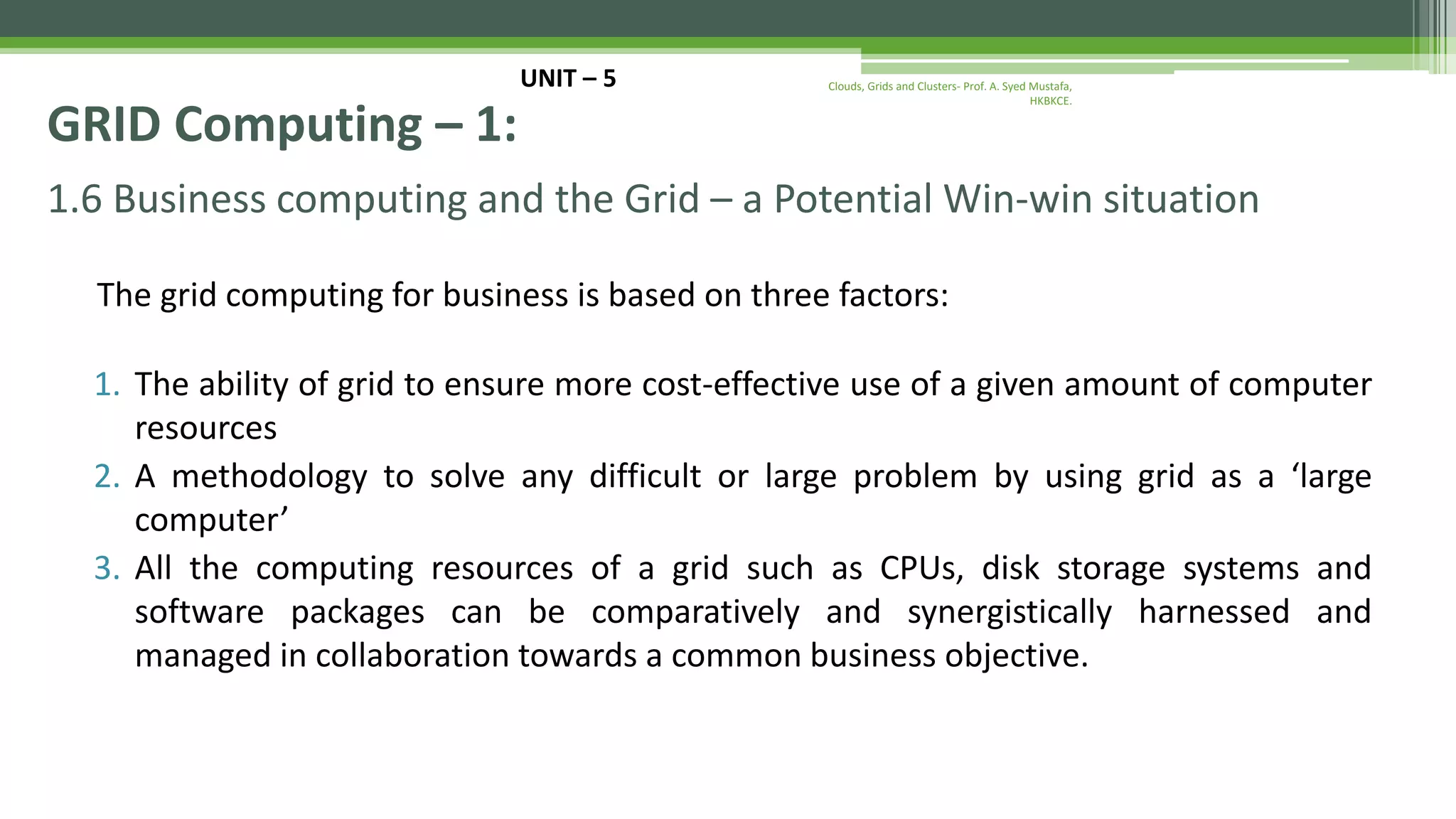

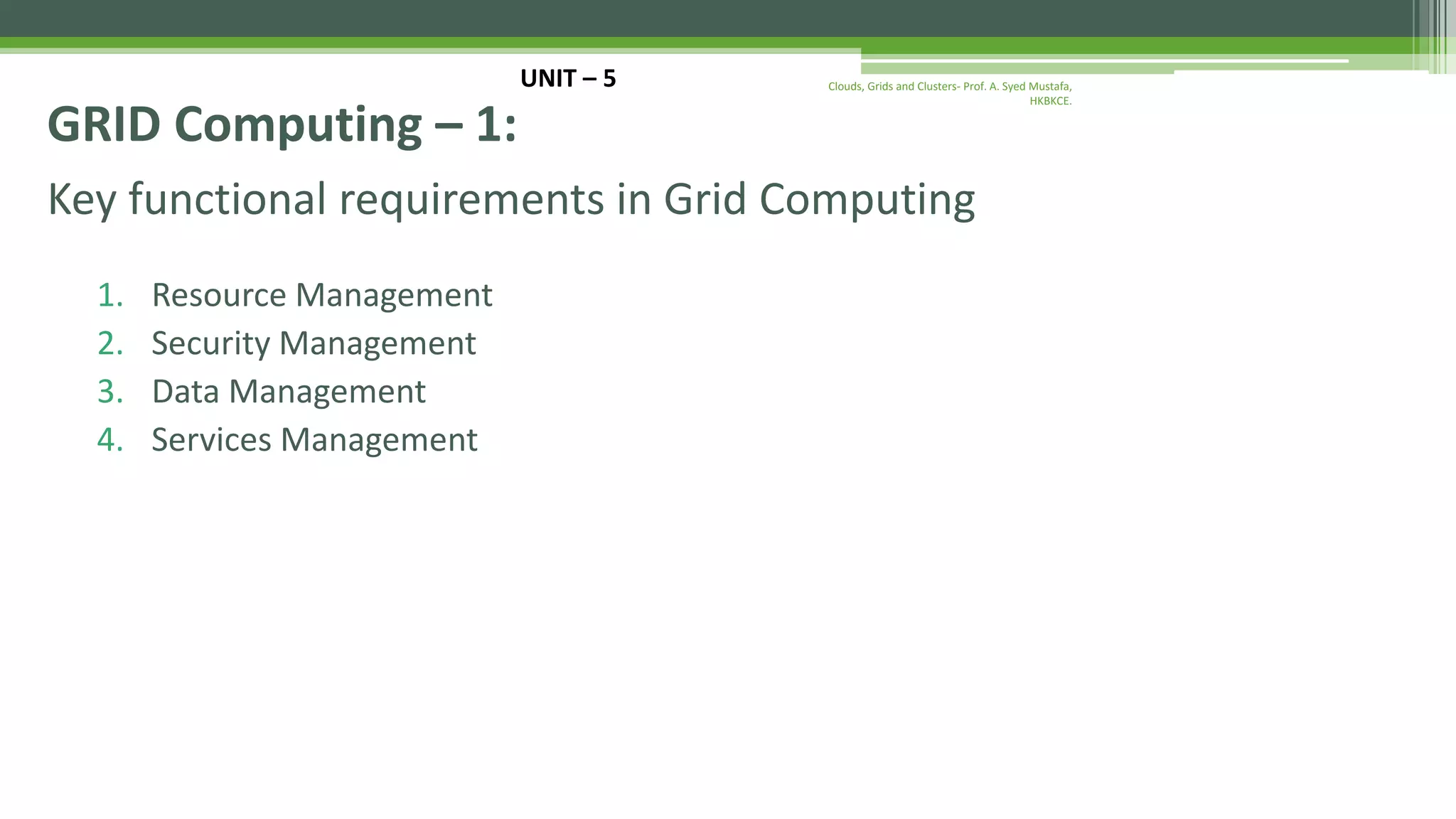
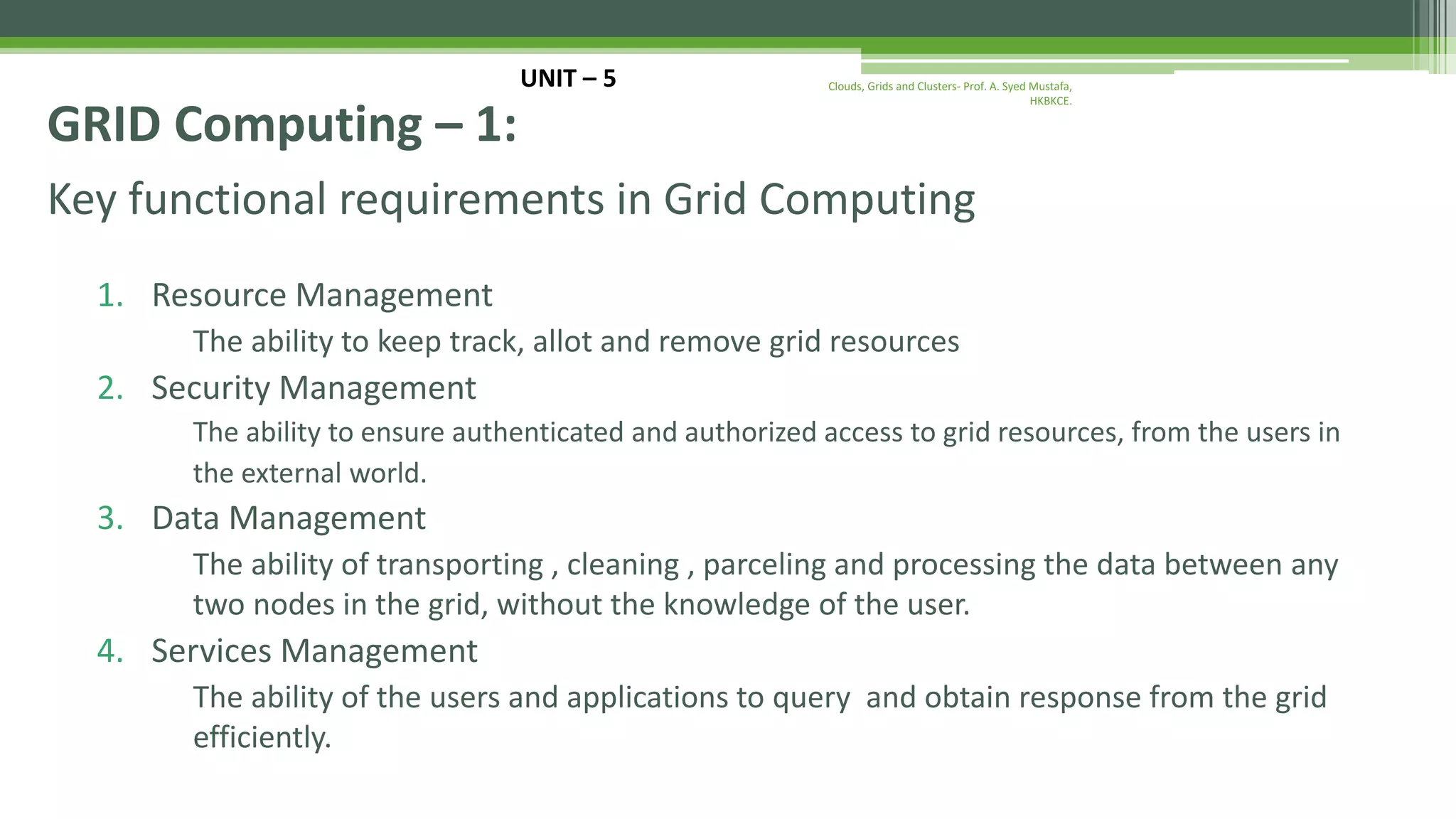


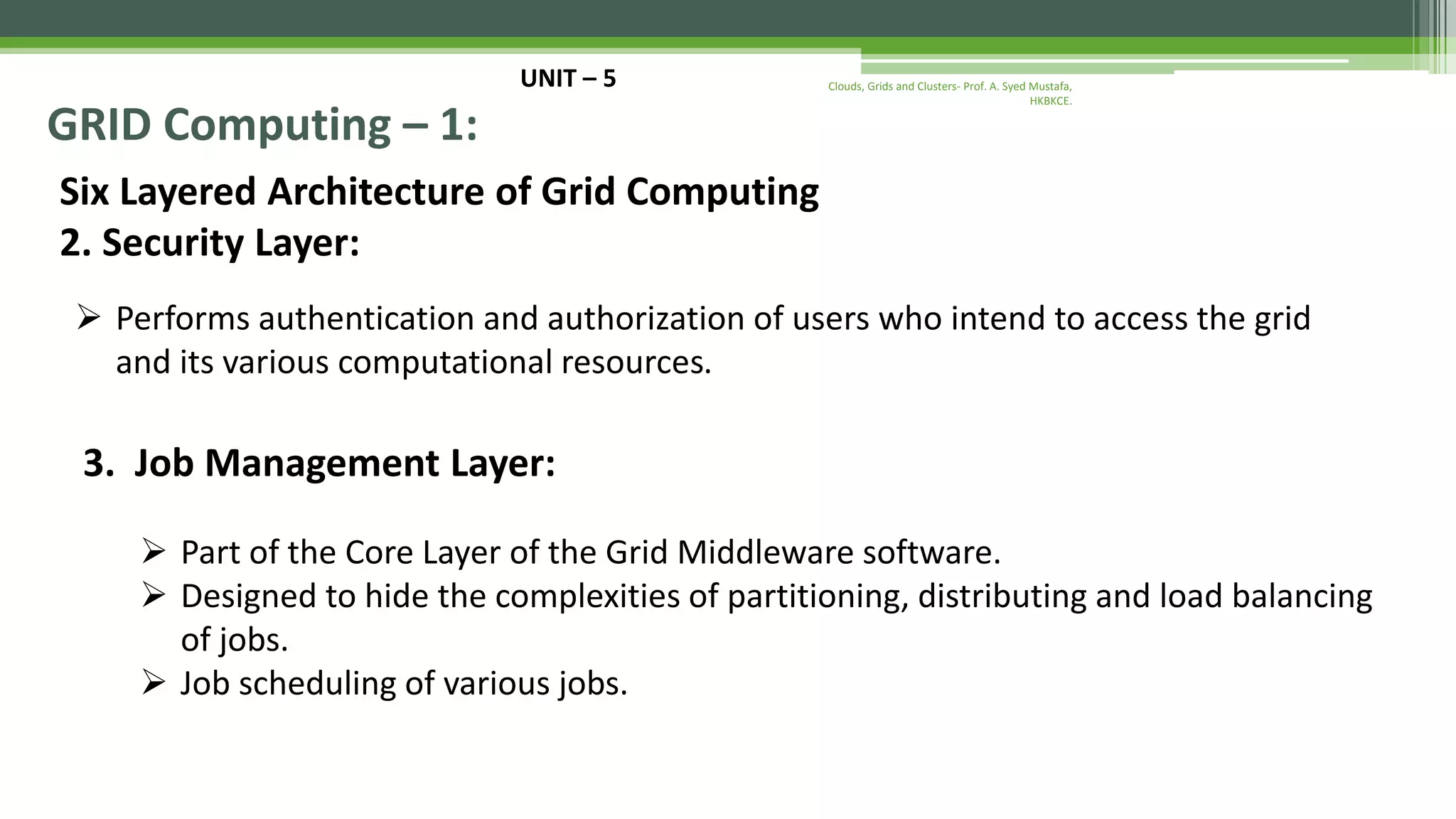



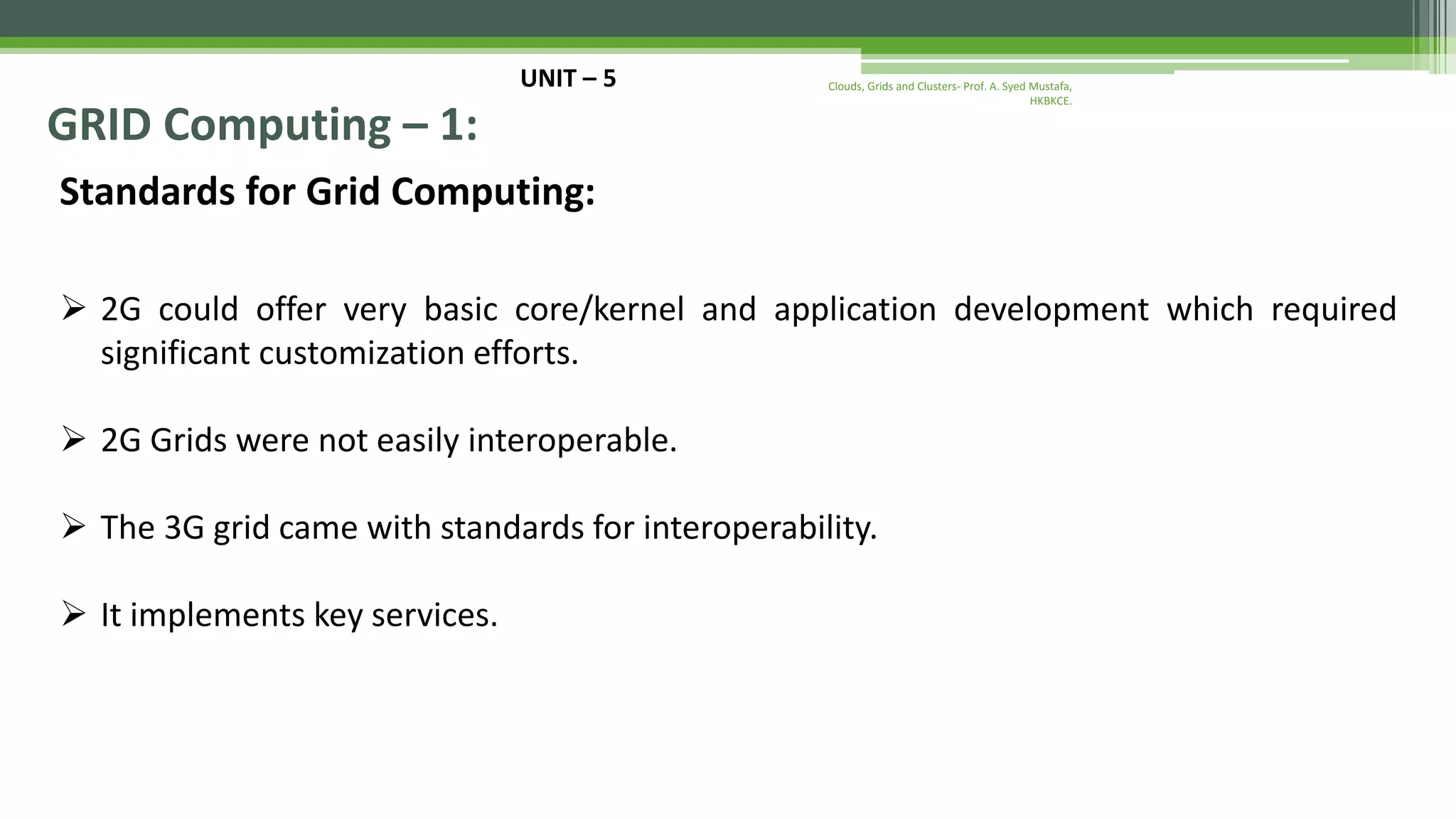
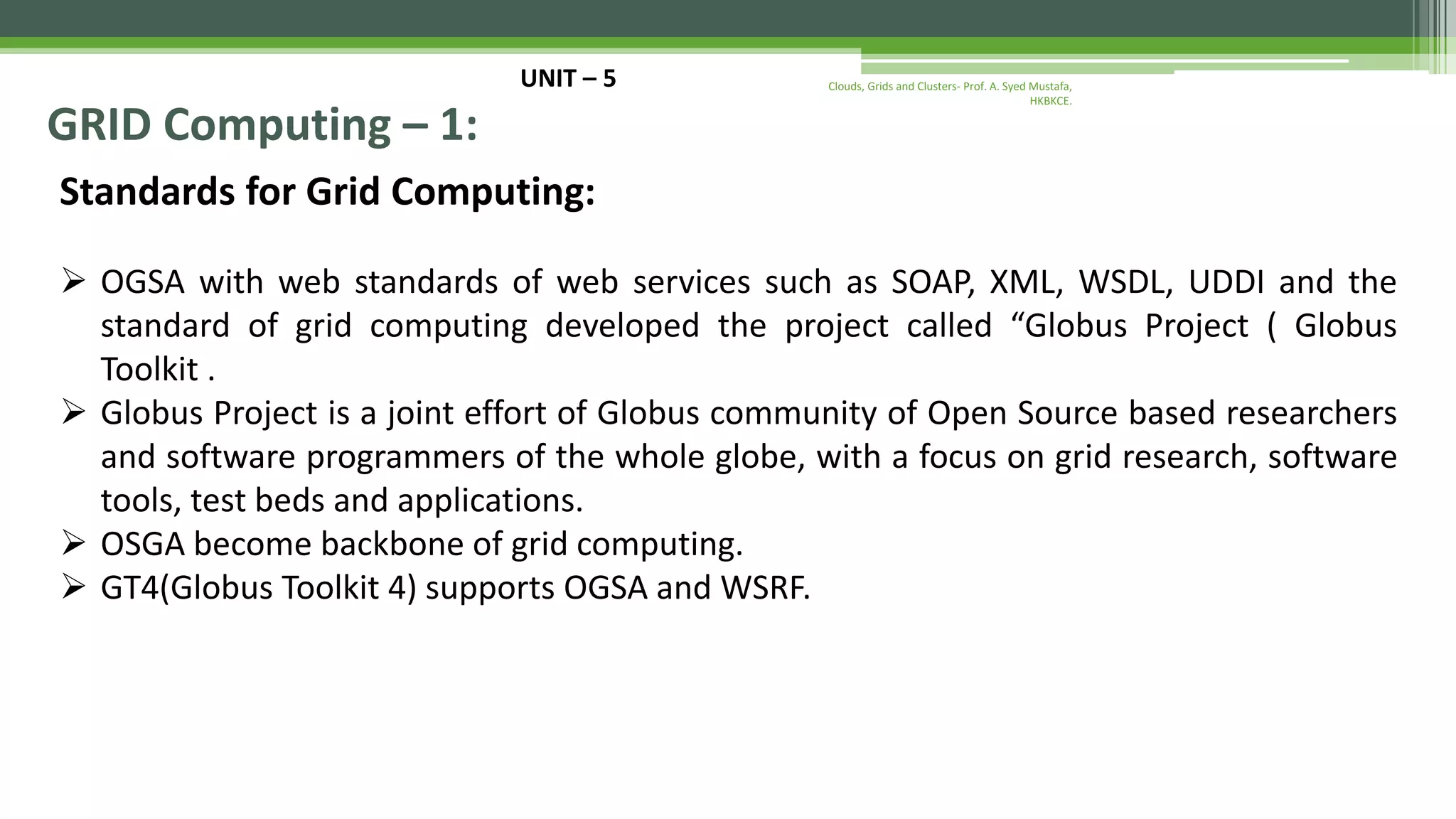
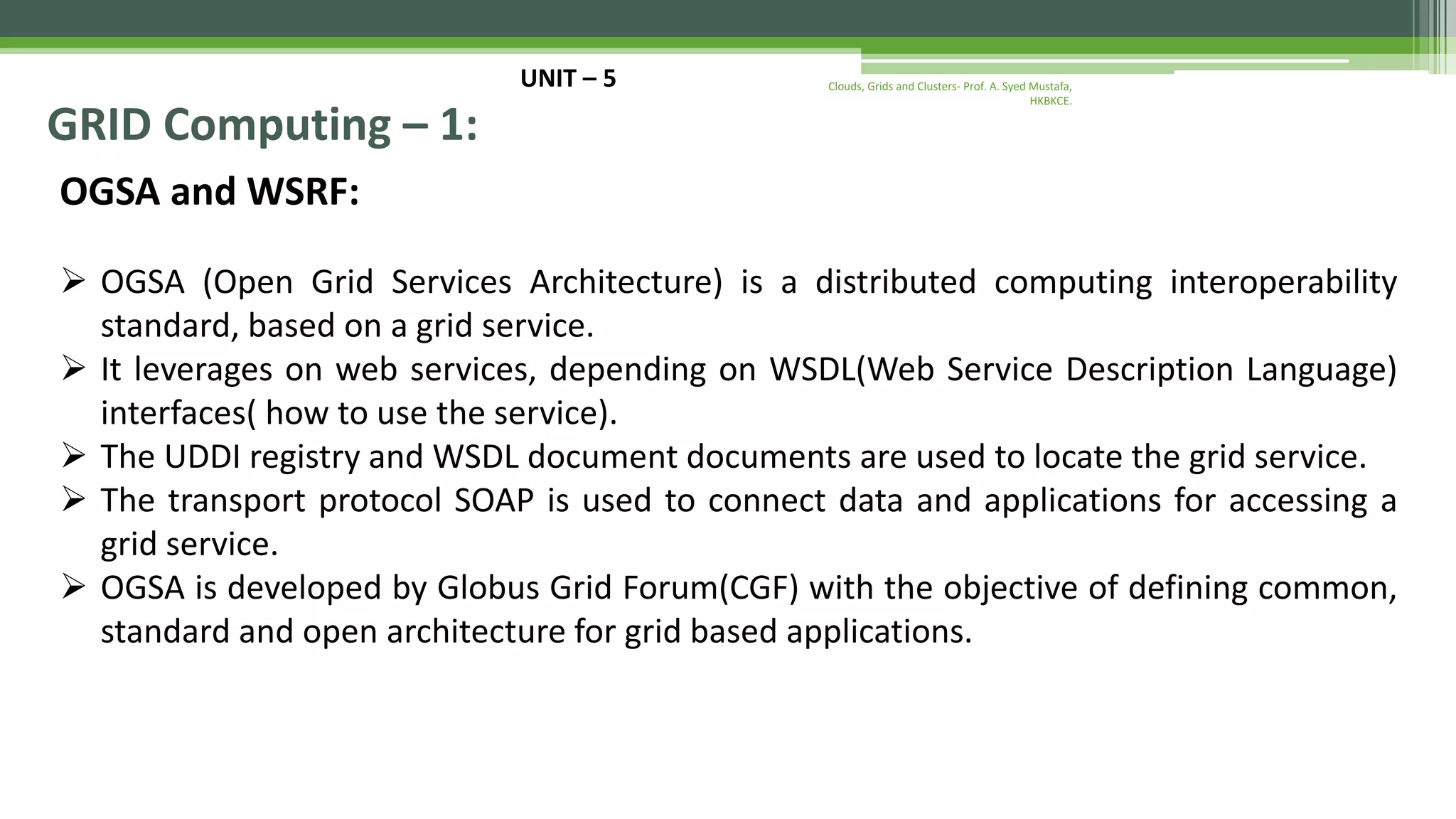
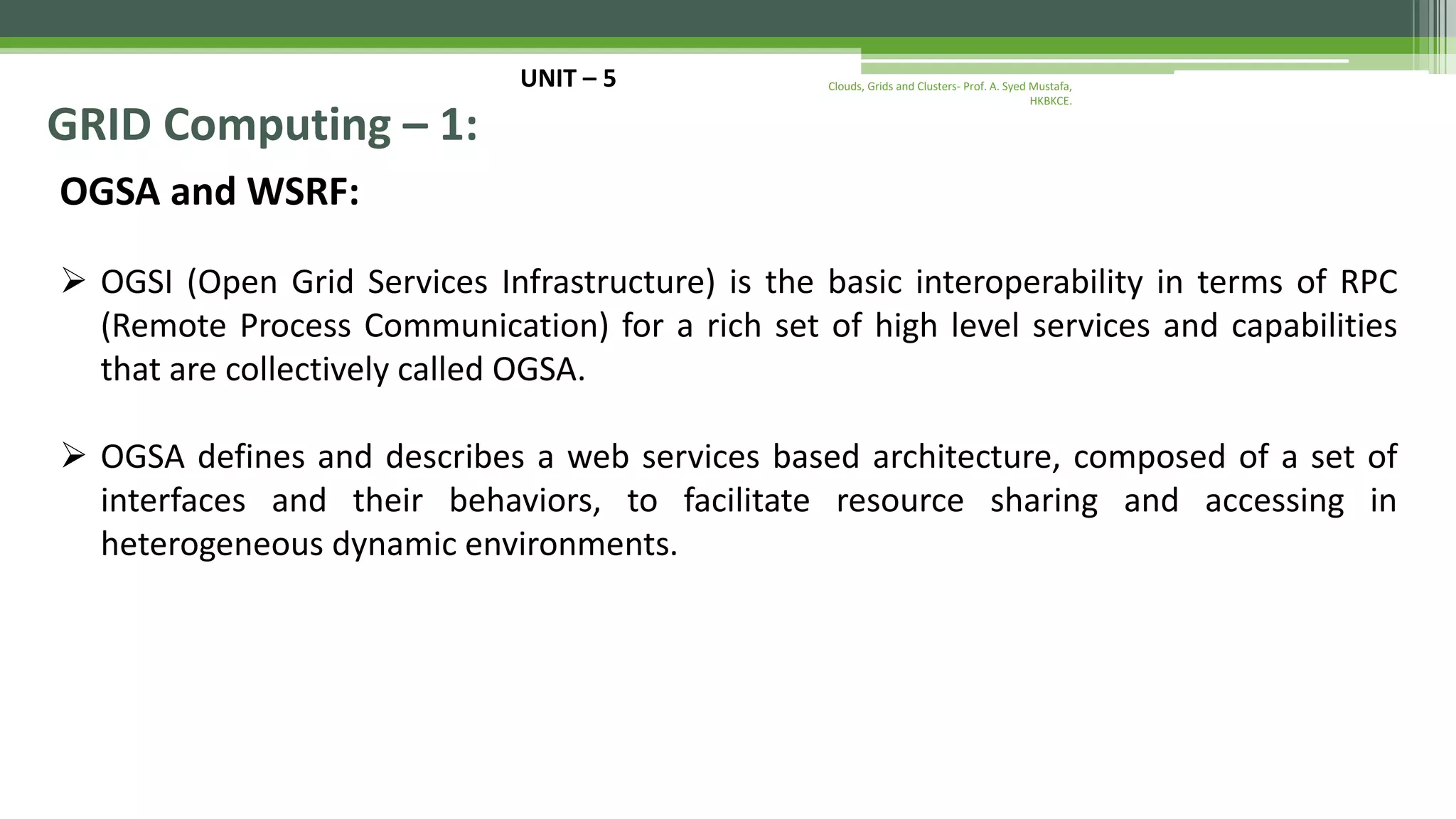
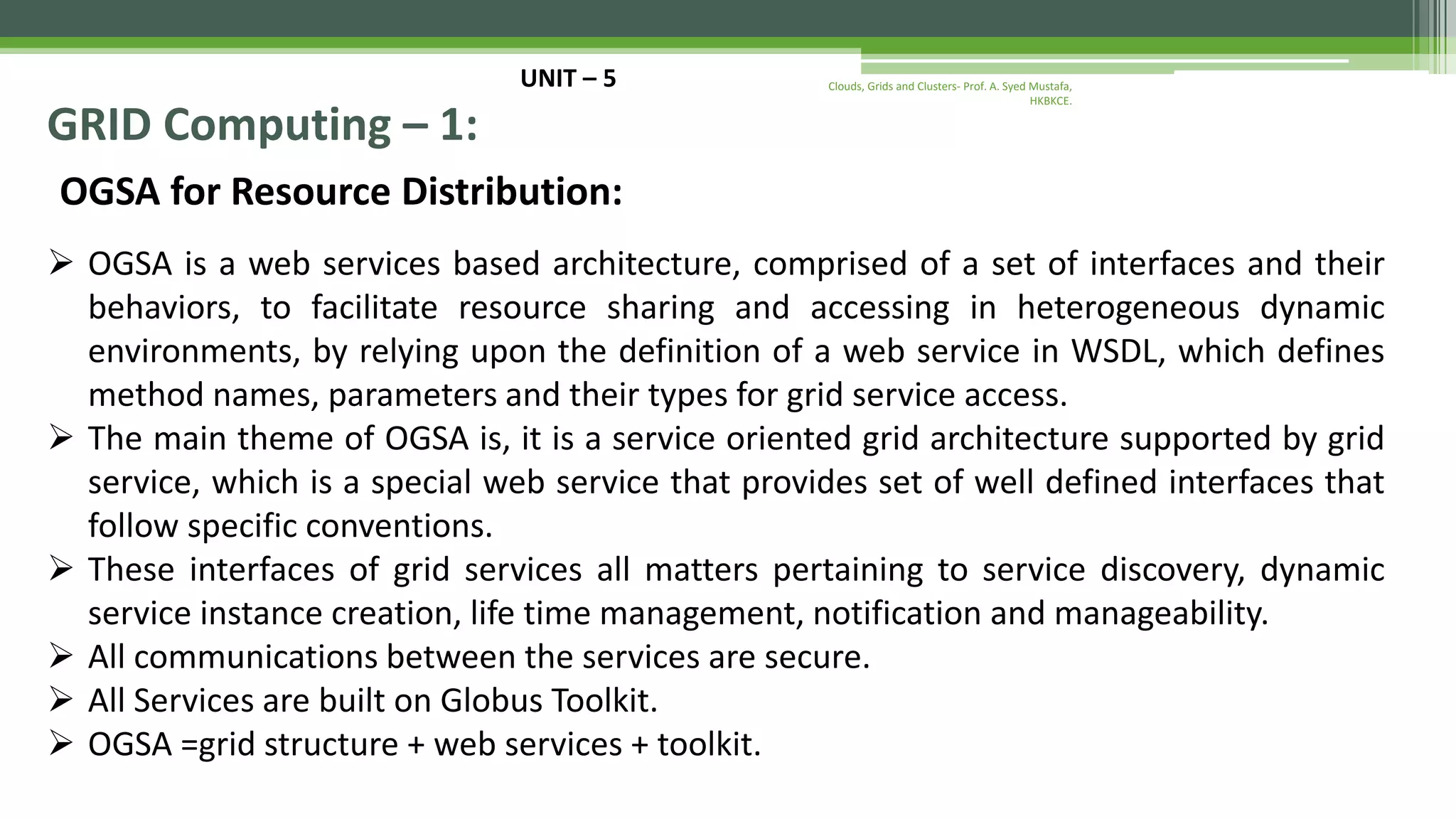
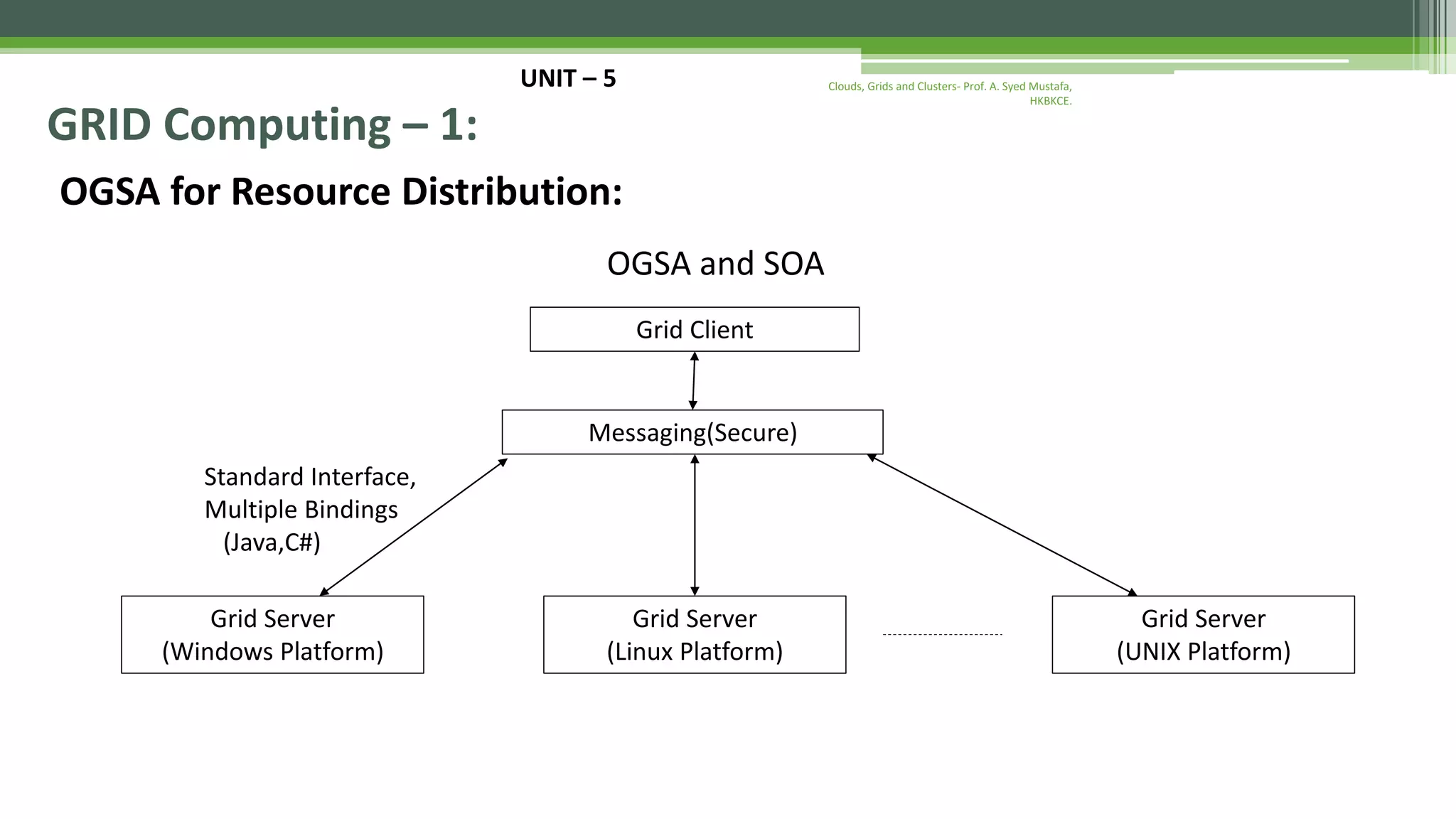

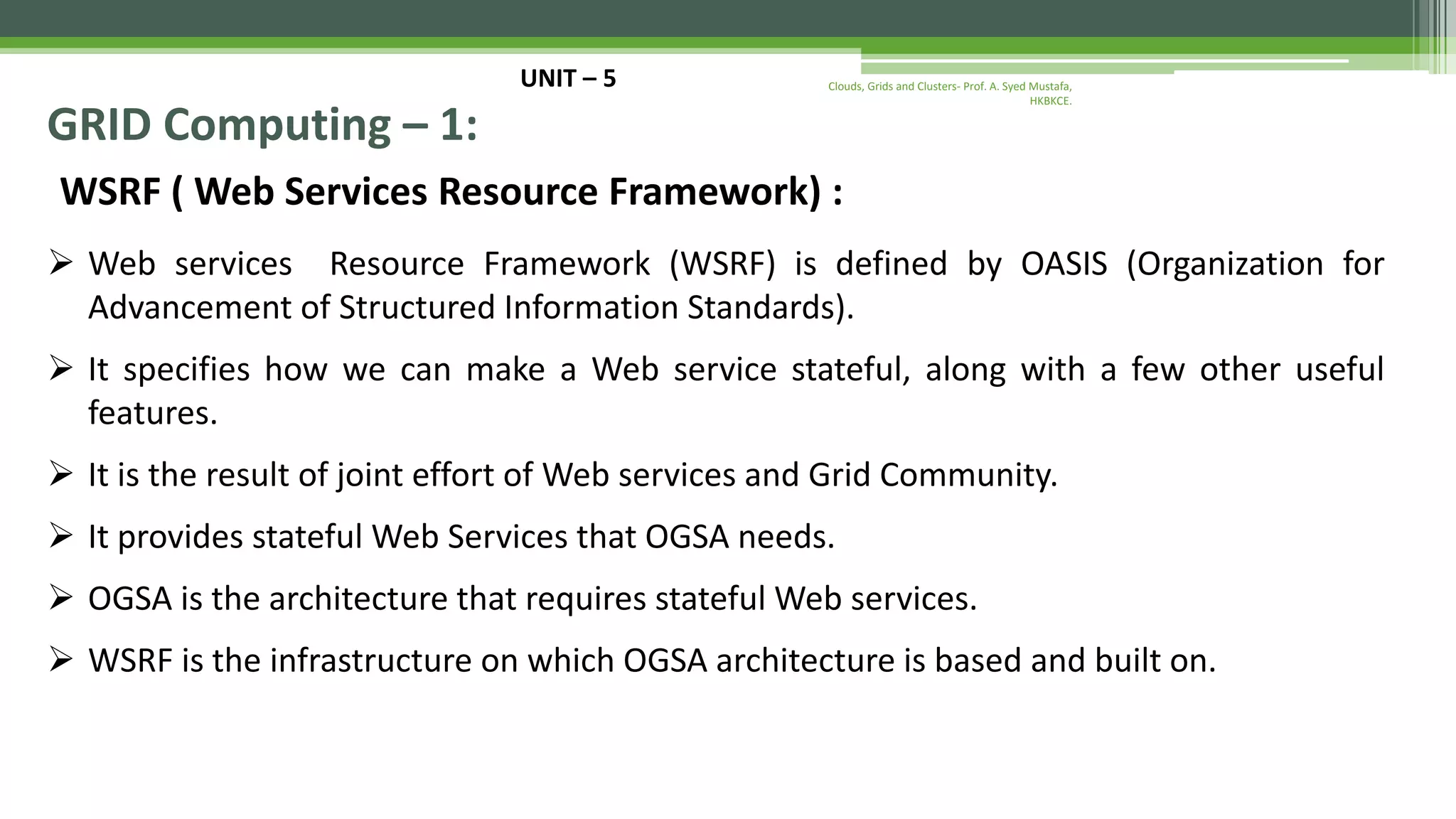
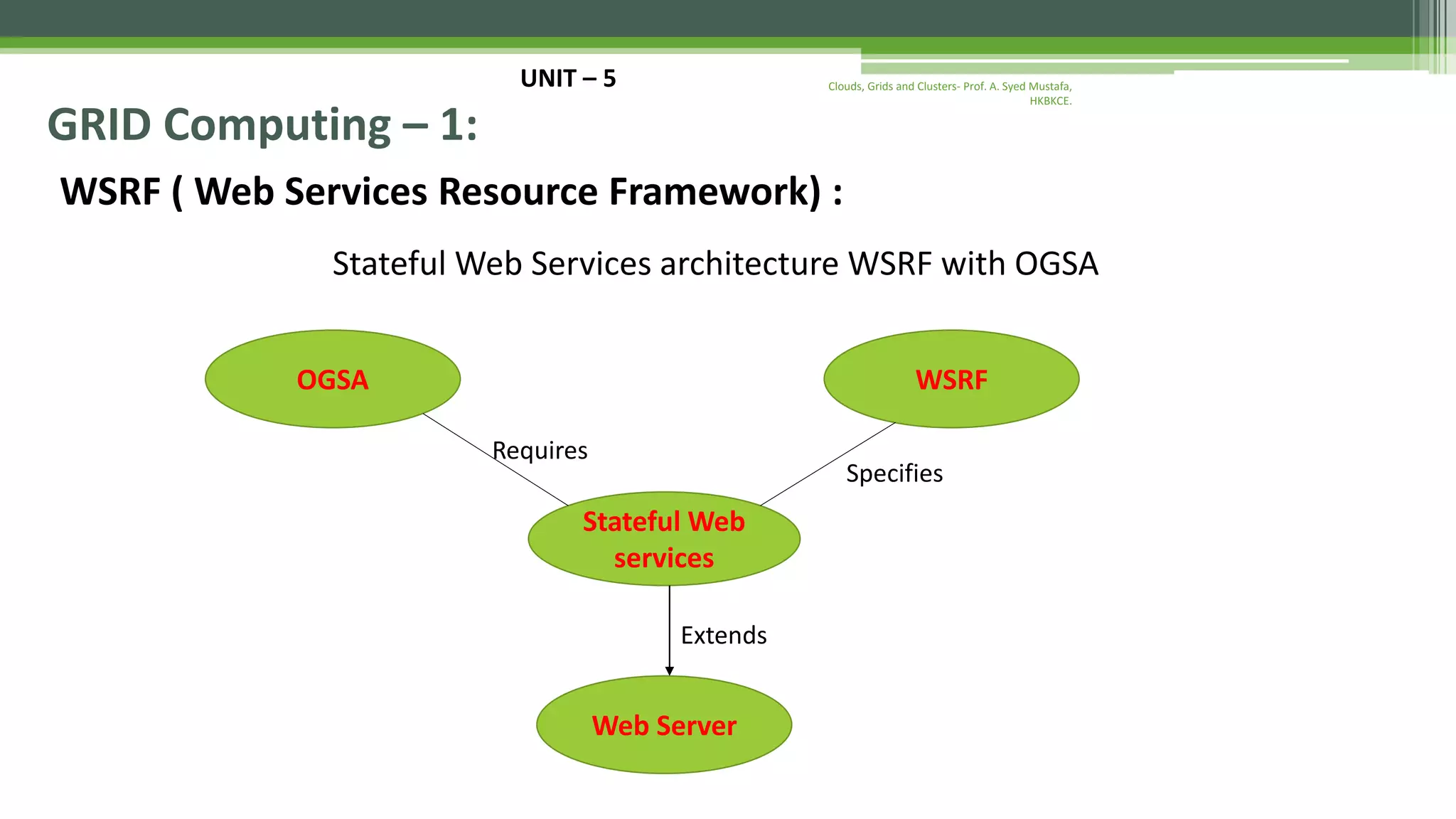
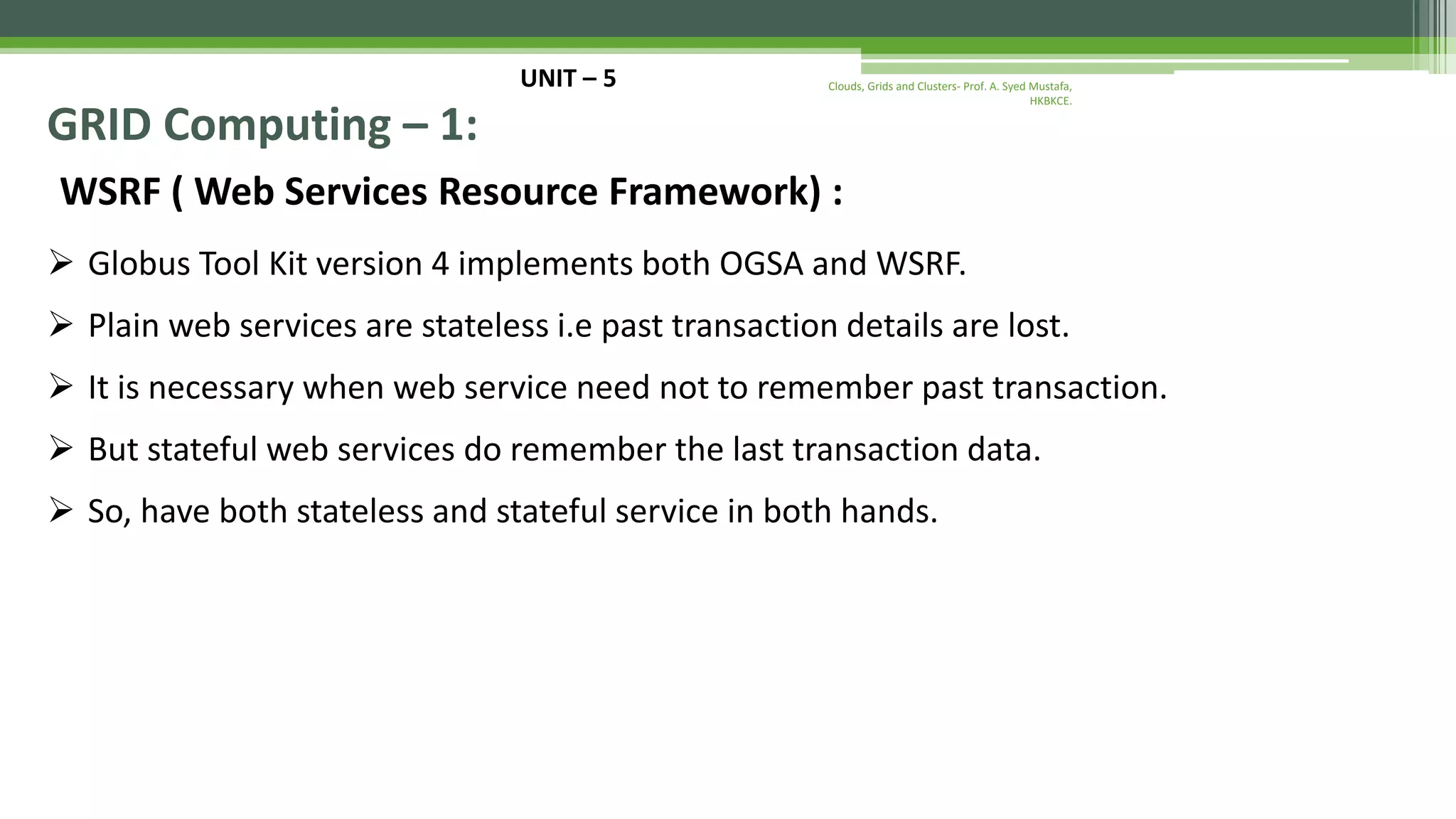
![UNIT – 5 GRID Computing – 1: WSRF ( Web Services Resource Framework) Specifications : WSRF is a set of 5 specifications, all to be used in the management of WS-Resources. 1. WS-Resource Properties: A resource may have 0 more resource properties. A resource file may have 3 properties[ File name/No., Size and Description ]. It specifies clearly how the properties or attributes are defined in WSDL. 2. WS- Resource Lifetime: Beginning and end –lifetime It supplies information to manage lifecycle of resurces. Clouds, Grids and Clusters- Prof. A. Syed Mustafa, HKBKCE.](https://image.slidesharecdn.com/gridcomputingnotes-160415161217/75/Grid-computing-notes-46-2048.jpg)
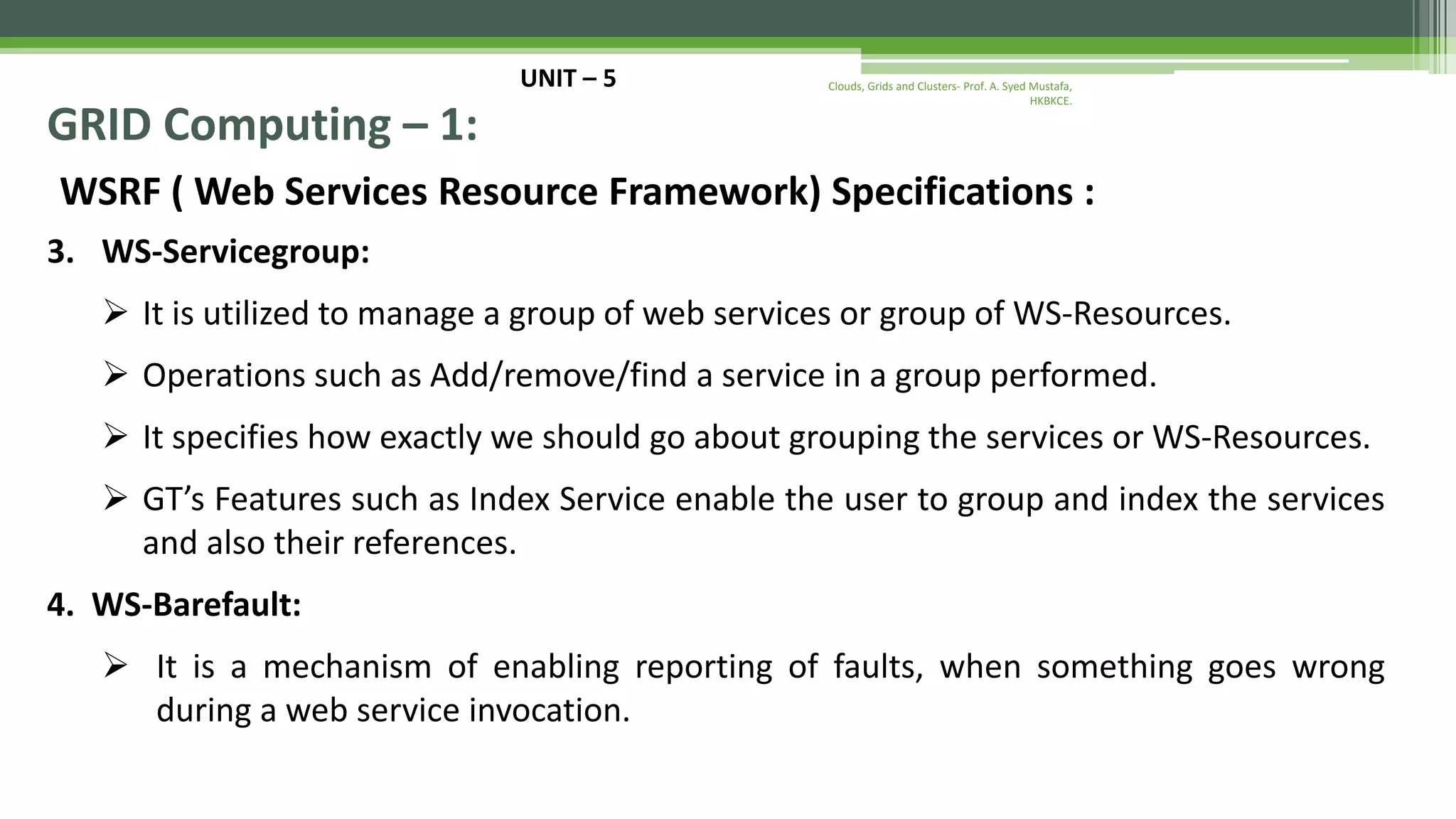
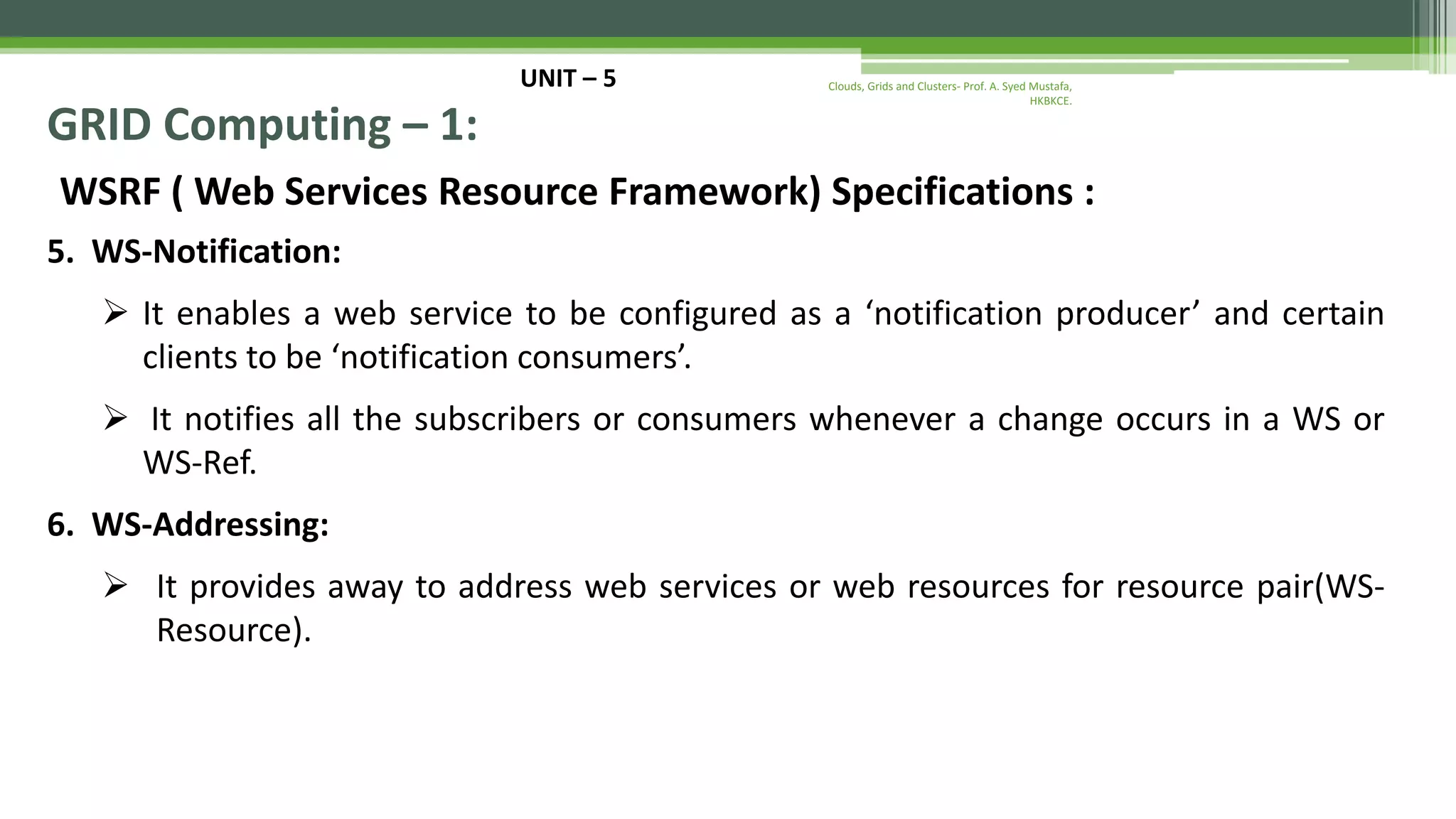
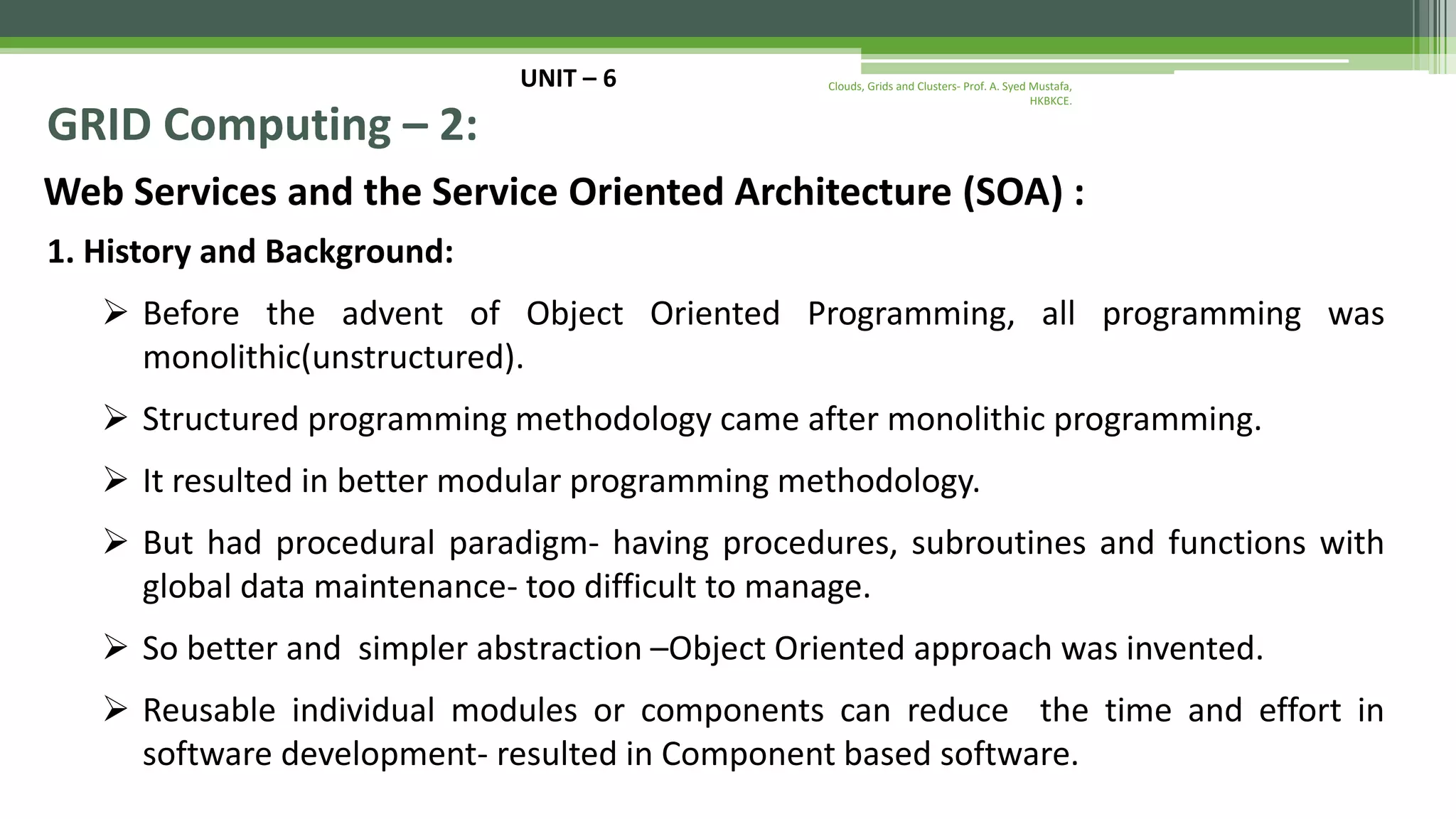
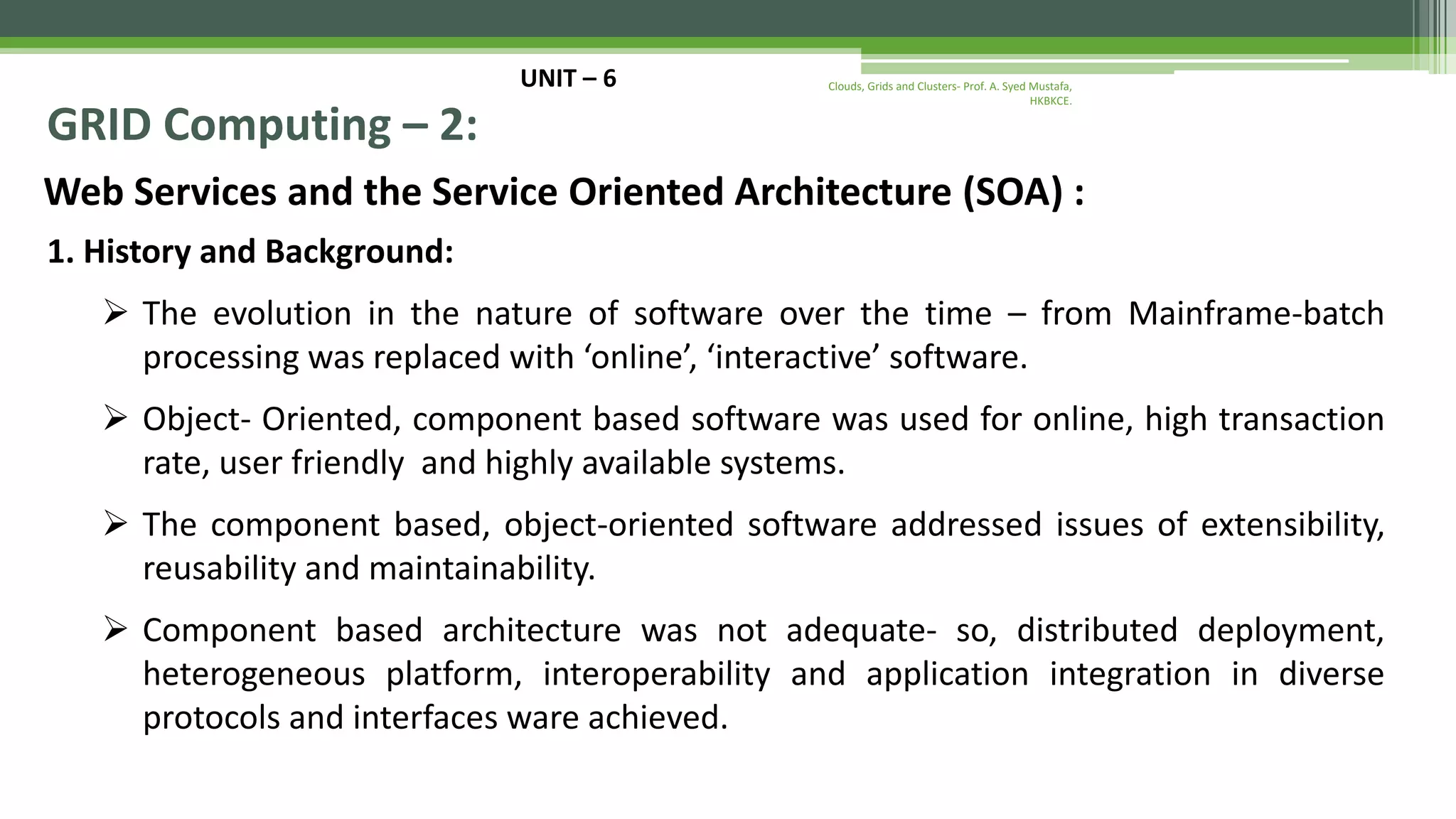

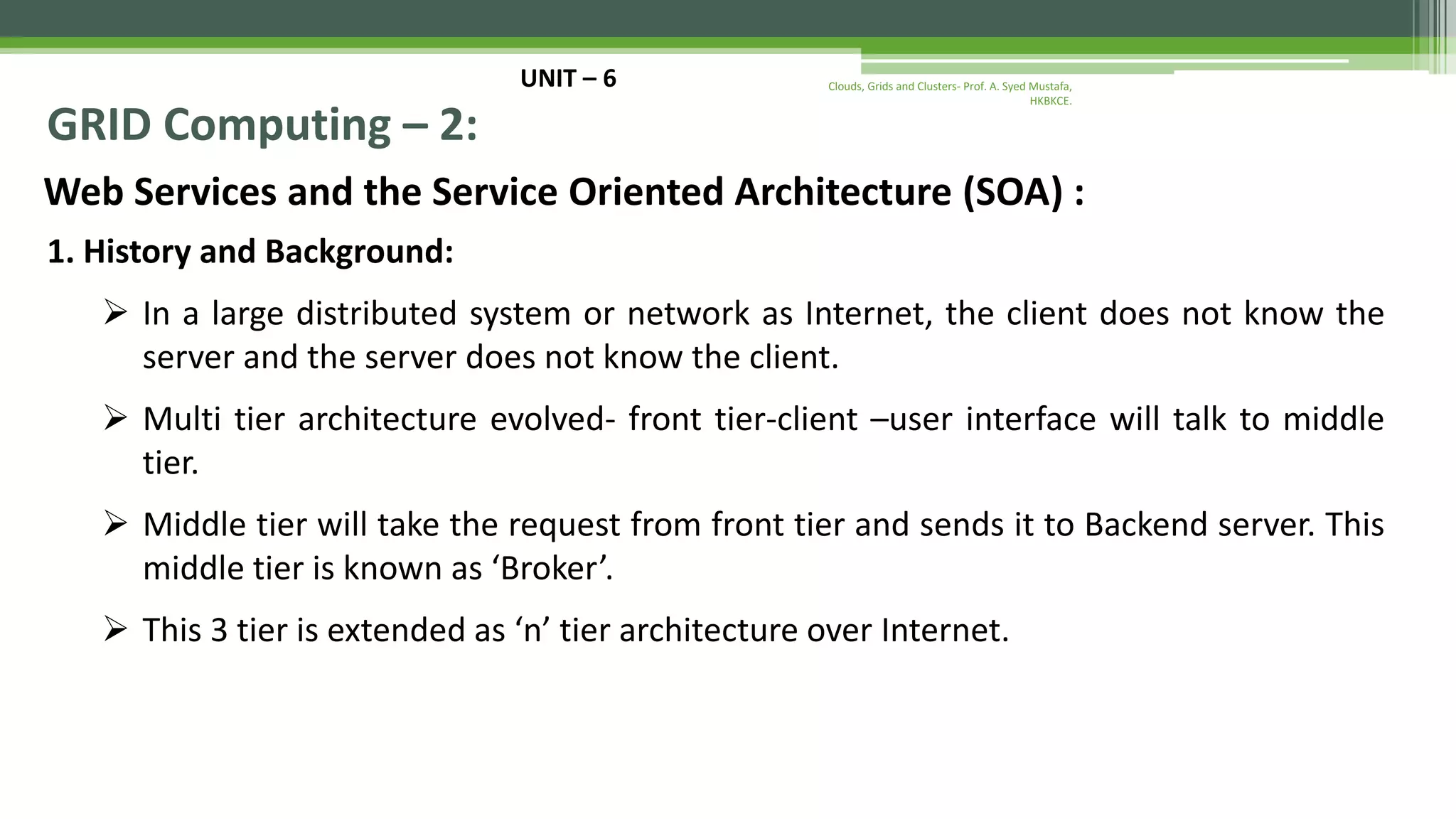
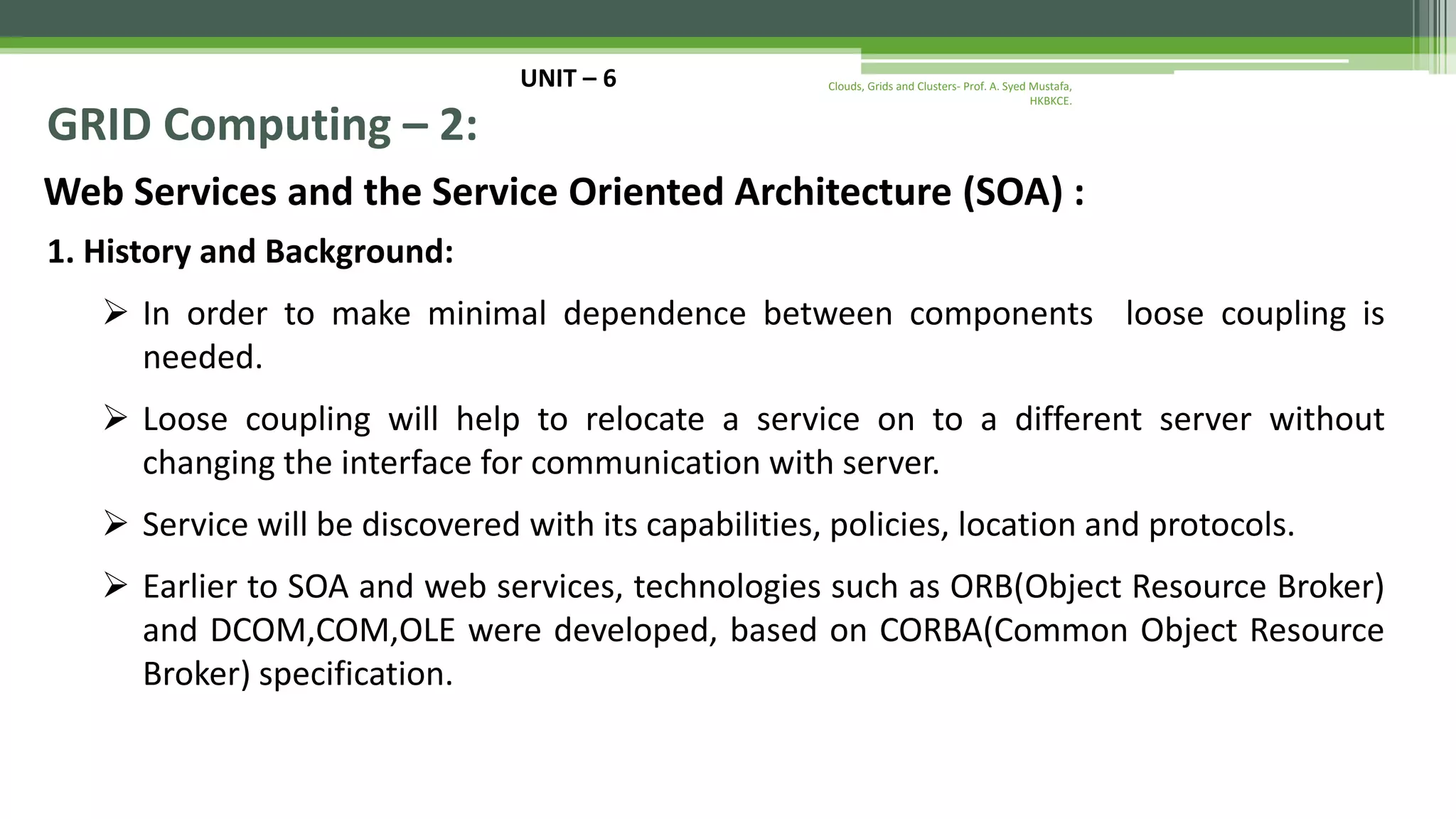
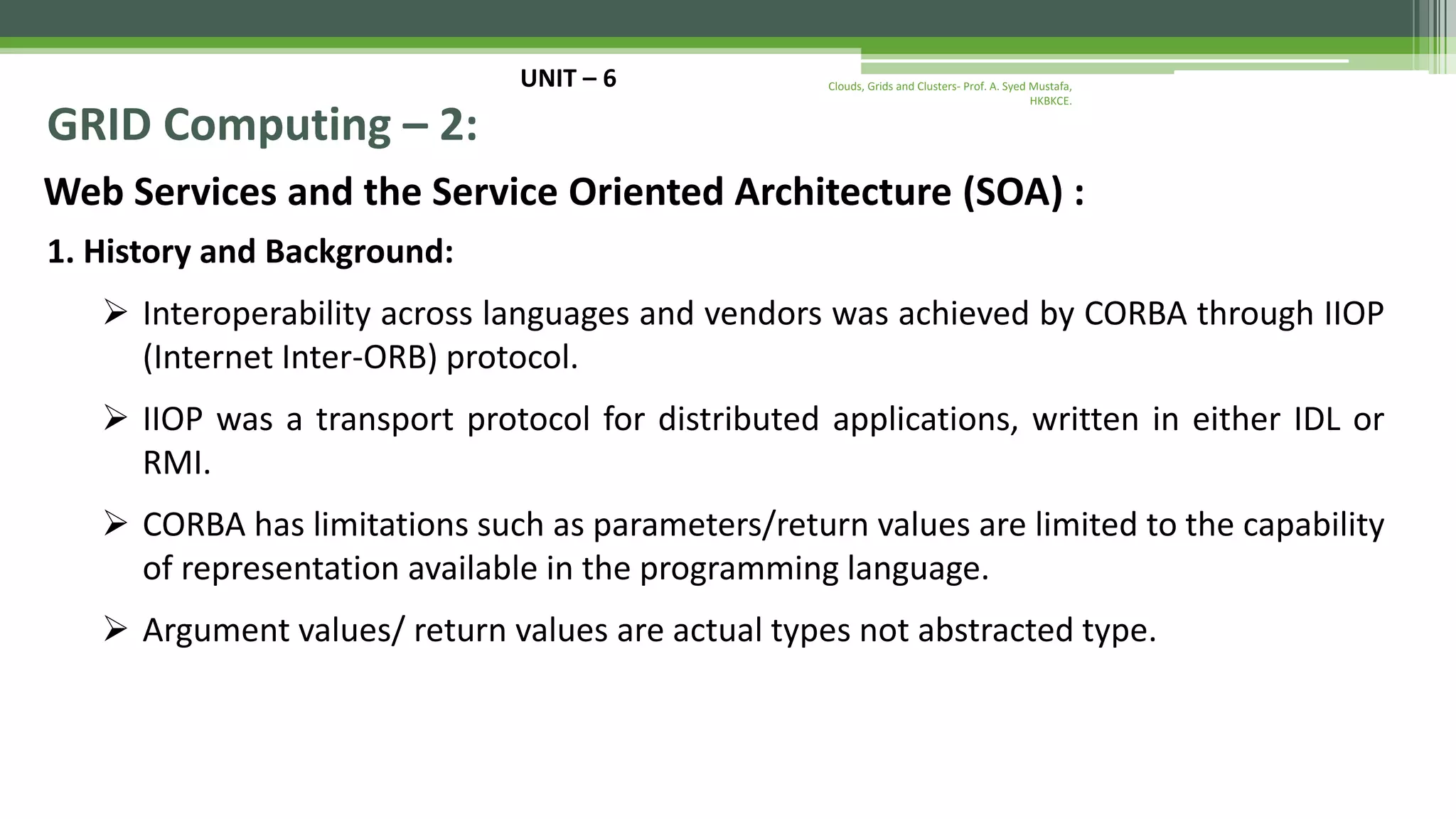
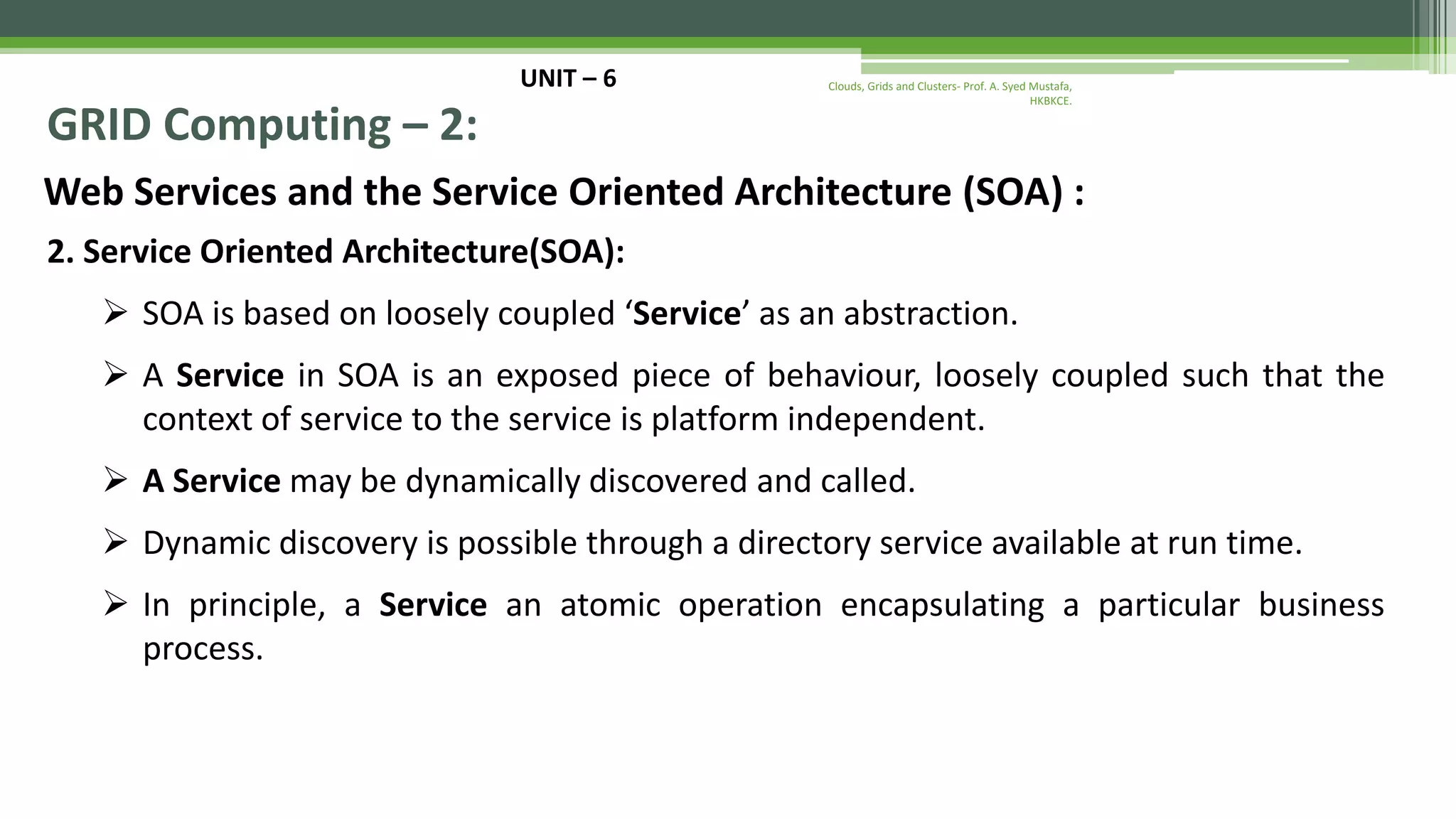




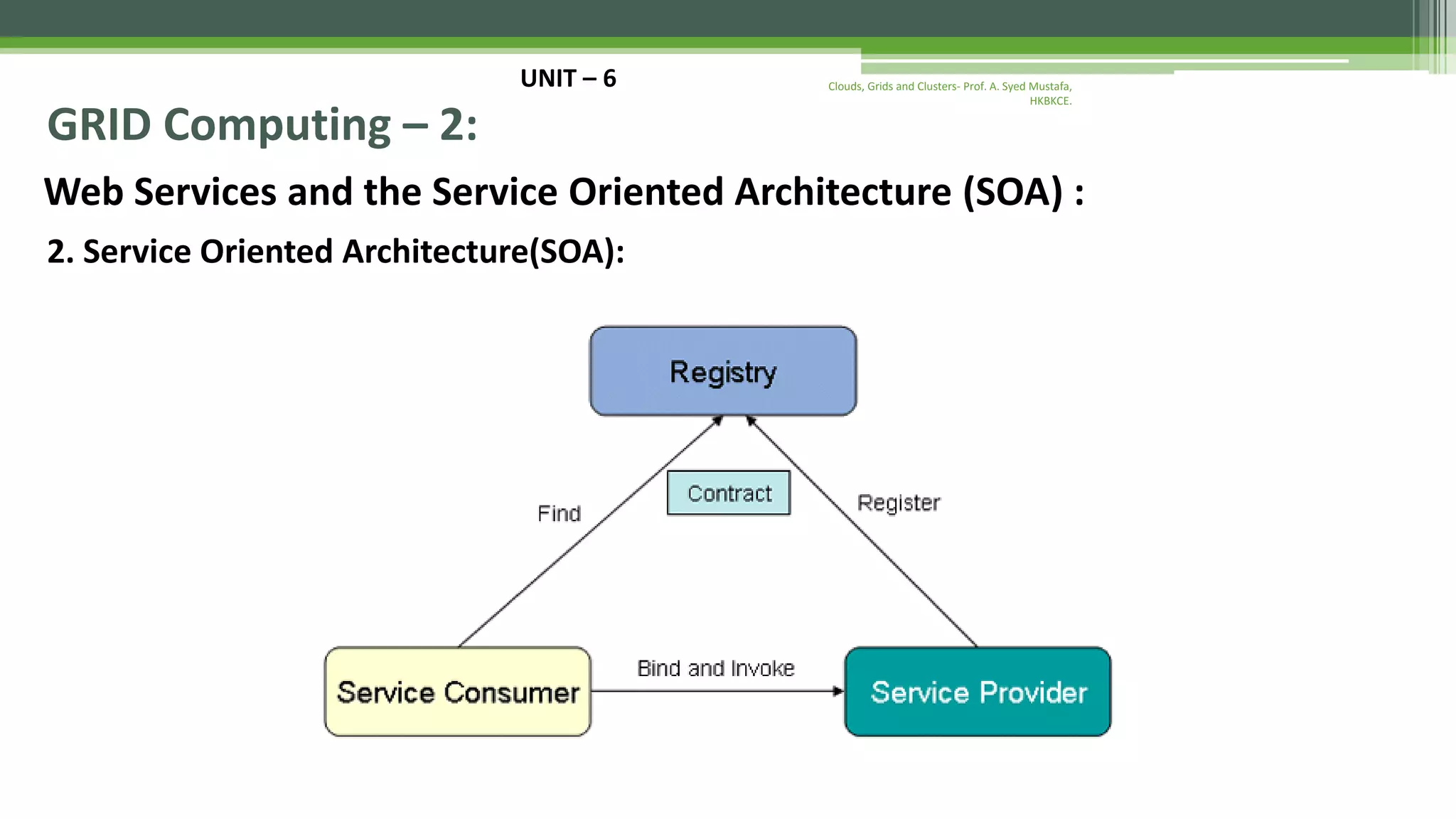
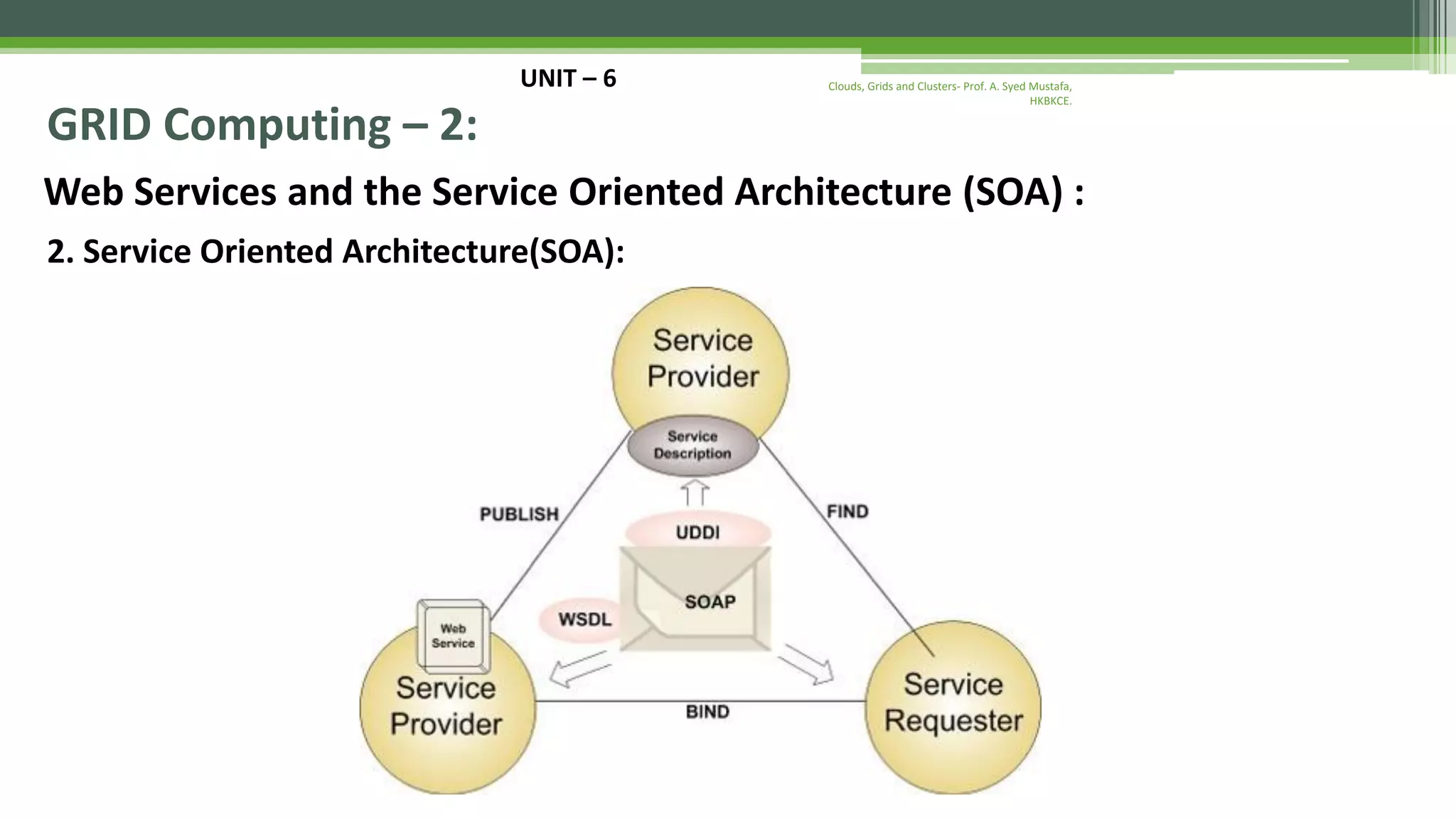

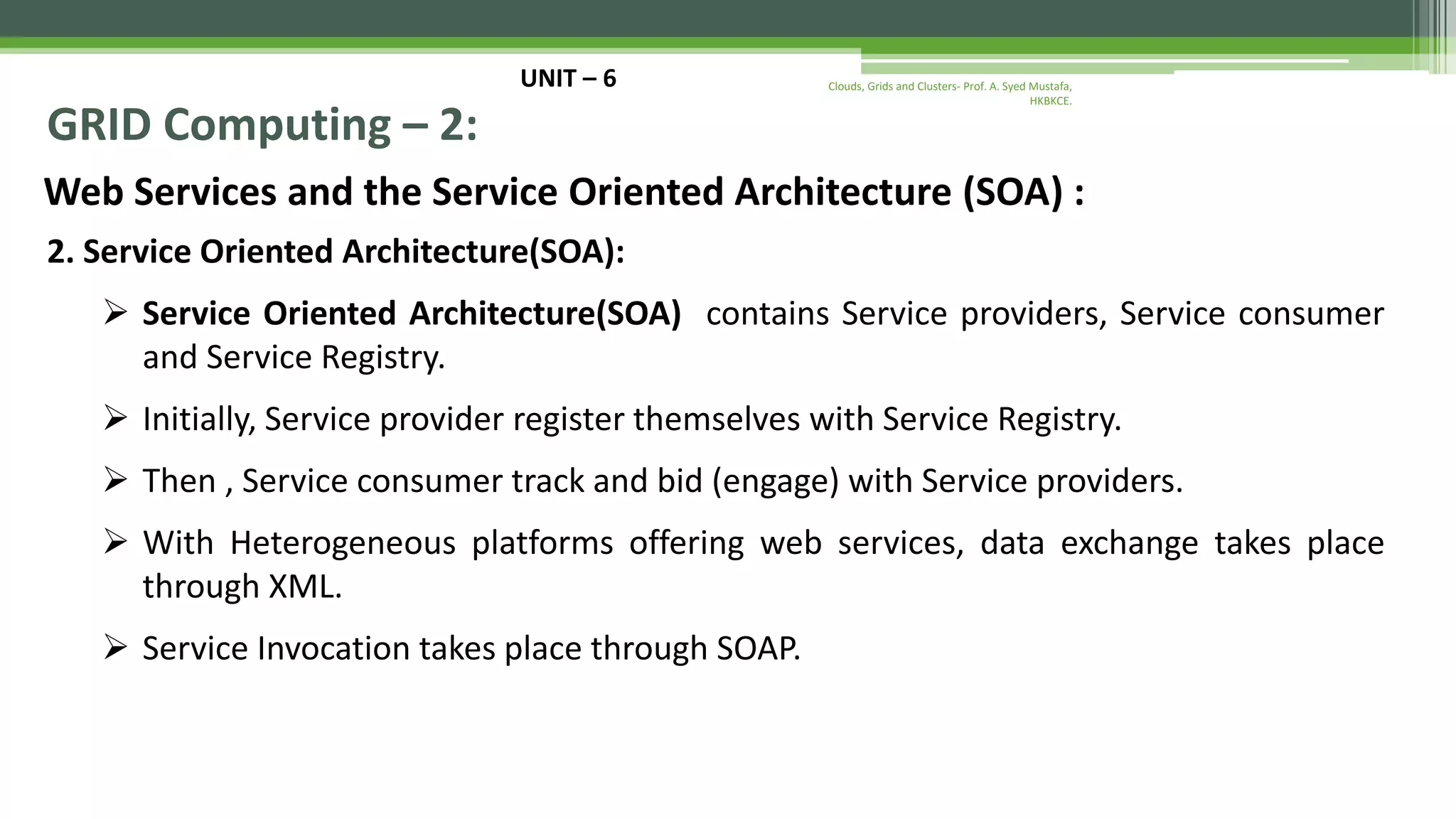
![• A Web service is a software system designed to support interoperable system-to- system interaction over a network. • “self-contained, modular business applications that have open, Internet- oriented, standards-based interfaces” - [ UDDI consortium ] • “A software application identified by a URI, whose interfaces and bindings are capable of being defined, described, and discovered as XML artifacts. A Web service supports direct interactions with other software agents using XML-based messages exchanged via Internet- based protocols” - [ W3C ] Web service 64](https://image.slidesharecdn.com/gridcomputingnotes-160415161217/75/Grid-computing-notes-64-2048.jpg)
![• A Web-Service is an interface that describes a collection of operations that are network accessible through standardized XML messaging - [ Microsoft ] • Web services are a new breed of Web applications. They are self-contained, self-describing, modular applications that can be published, located, and invoked across the Web. Web services perform functions, which can be anything from simple request to complicated business processes… Once a Web service is deployed, other applications (and other Web services) can discover and invoke the deployed service. [IBM] Web service 65](https://image.slidesharecdn.com/gridcomputingnotes-160415161217/75/Grid-computing-notes-65-2048.jpg)
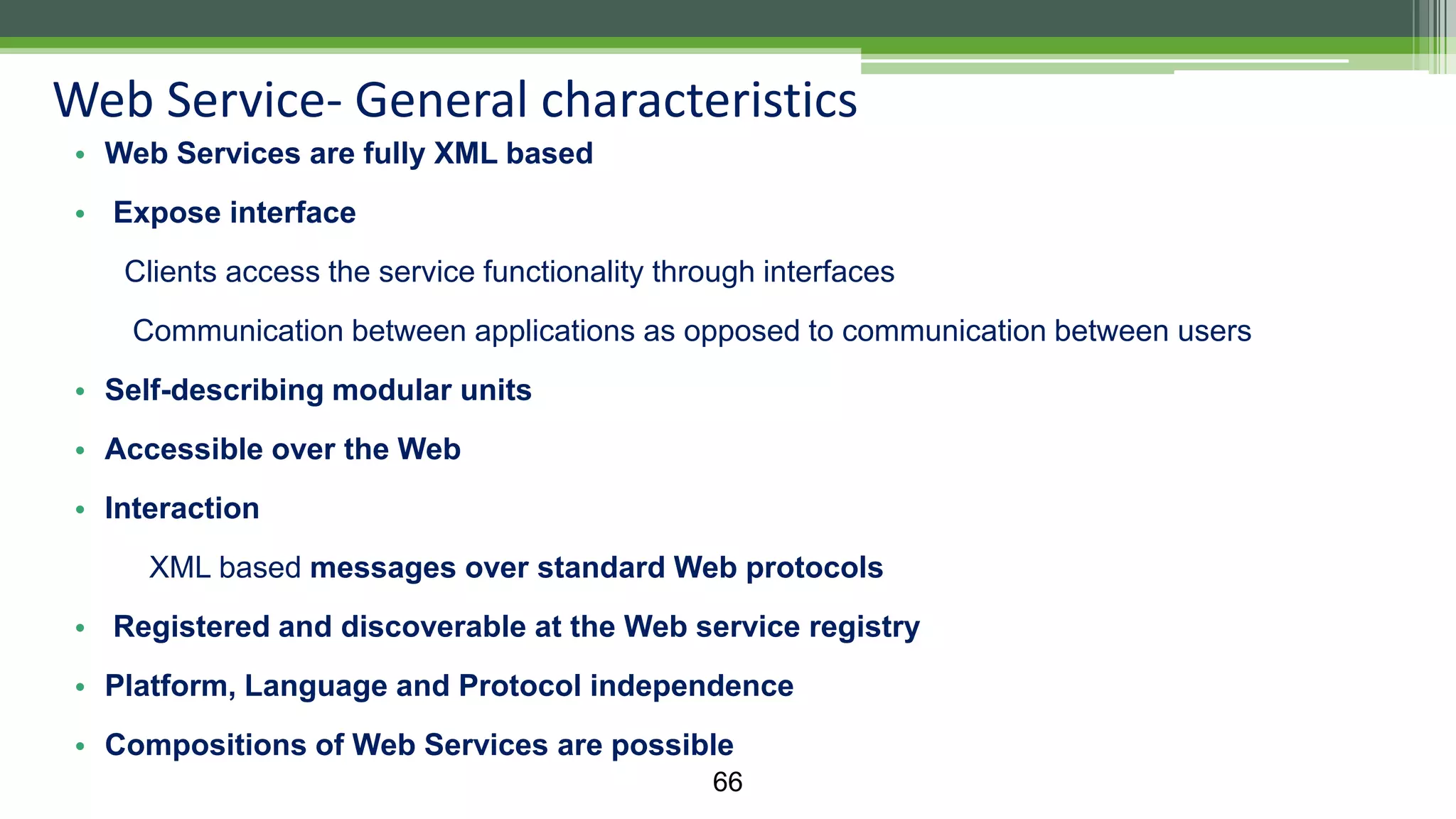
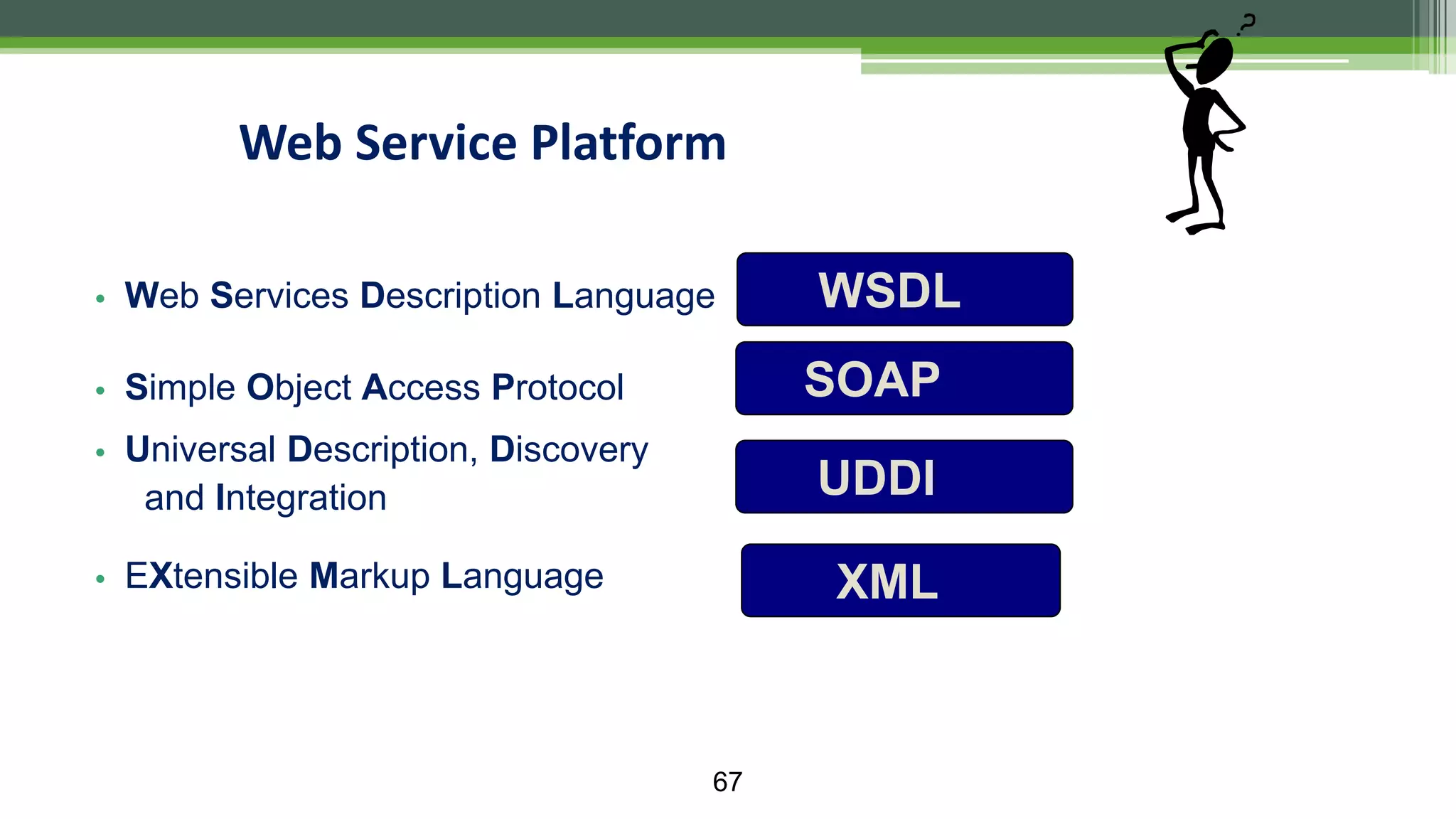
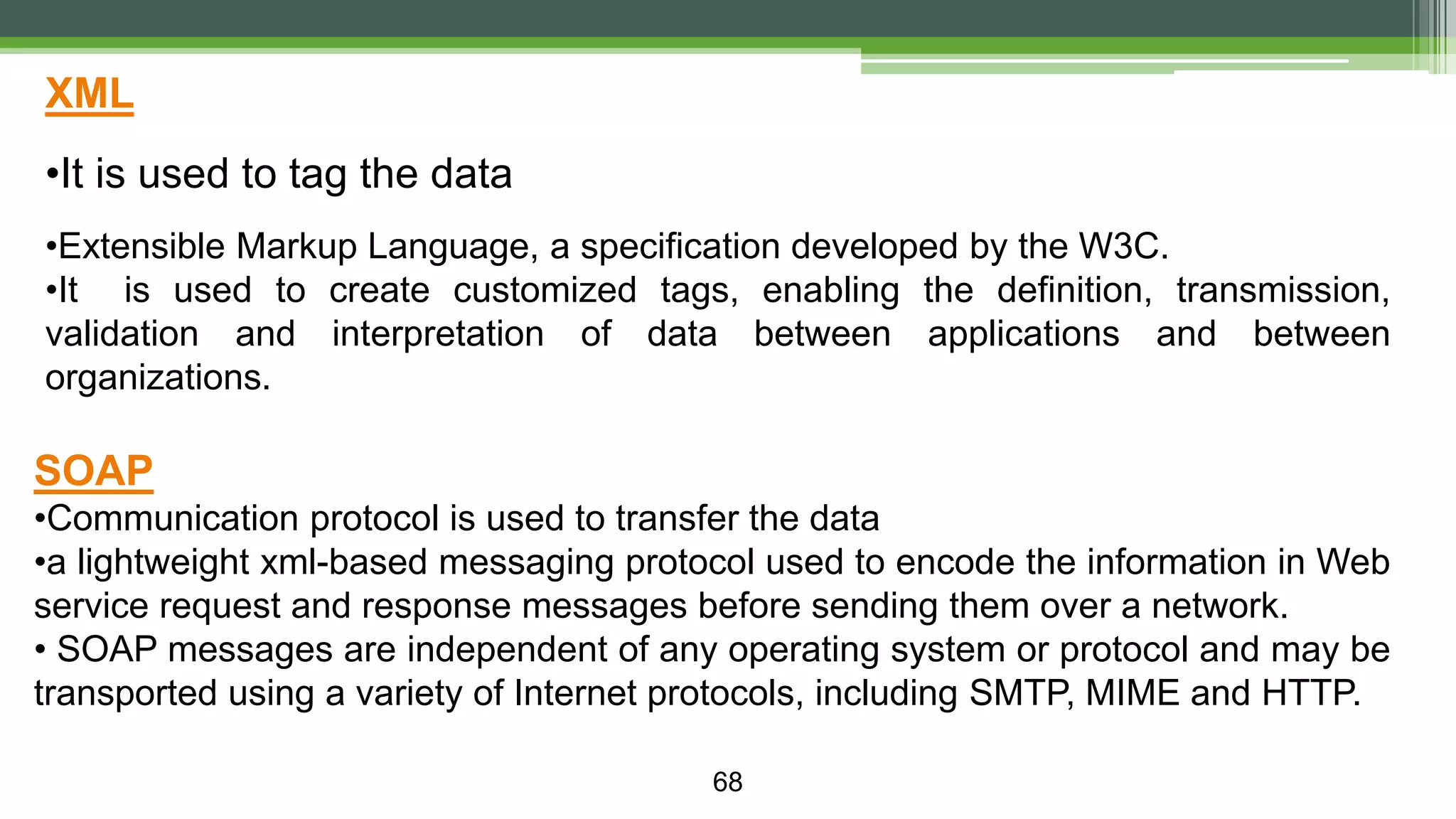
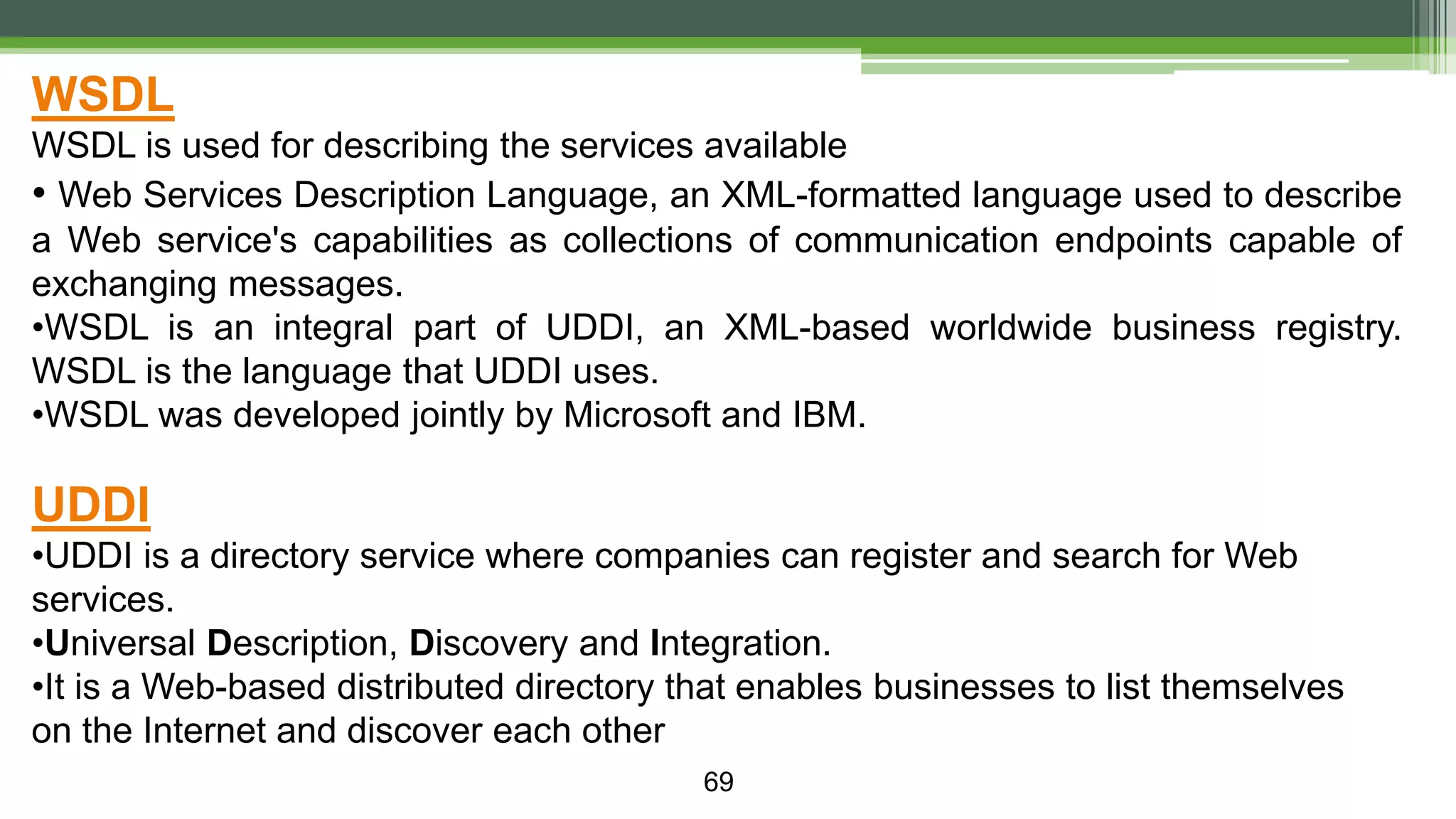
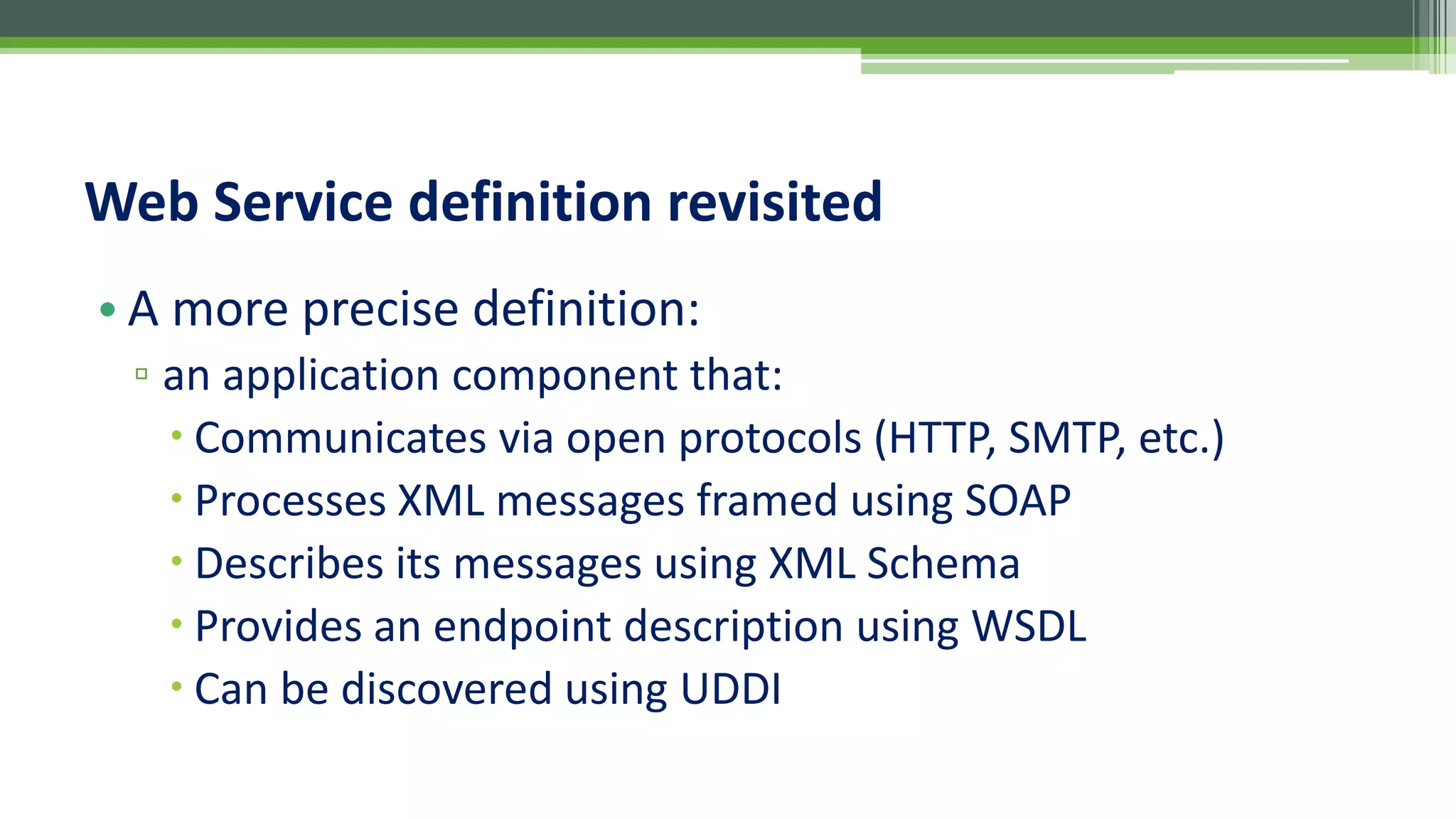

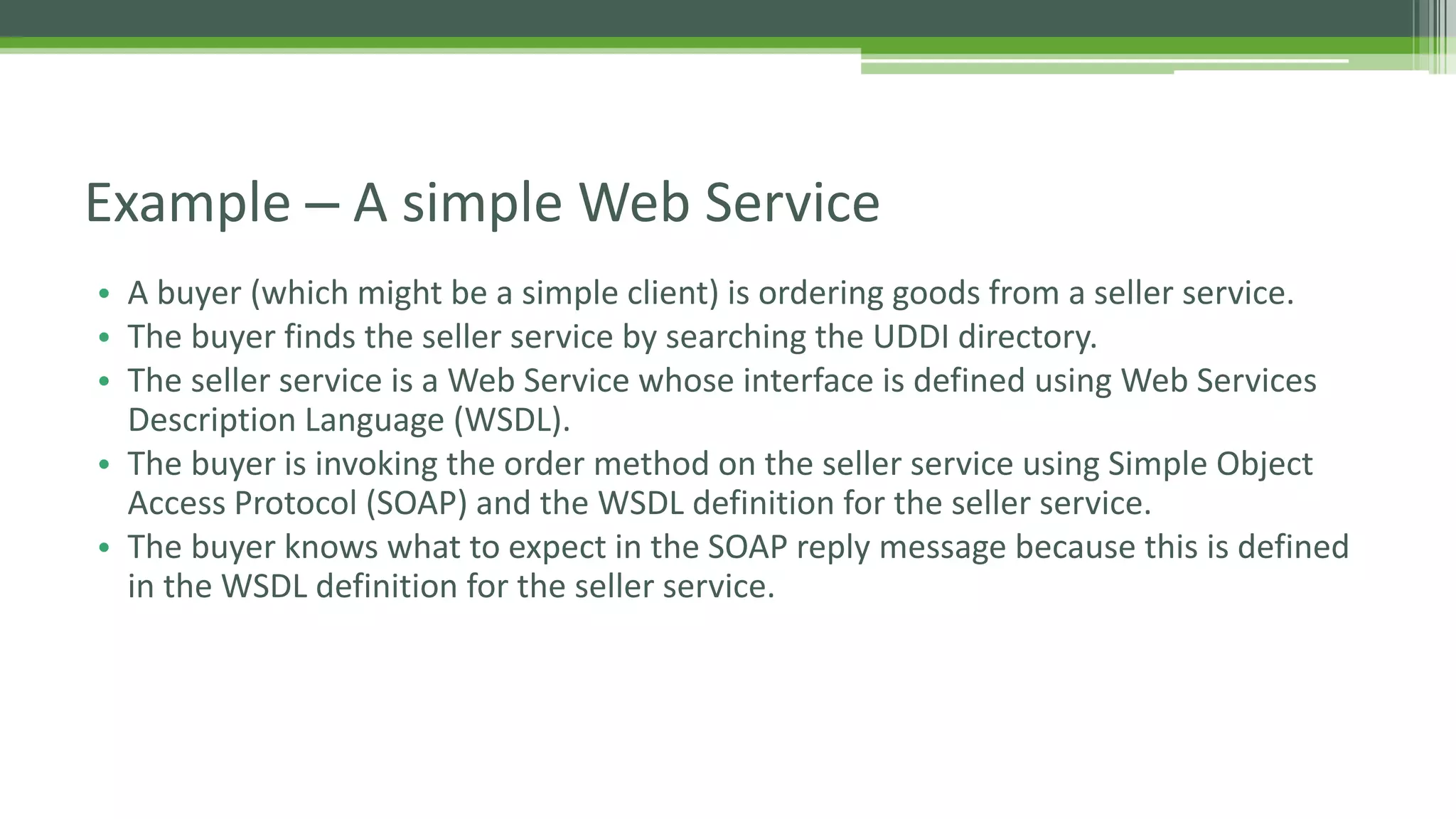


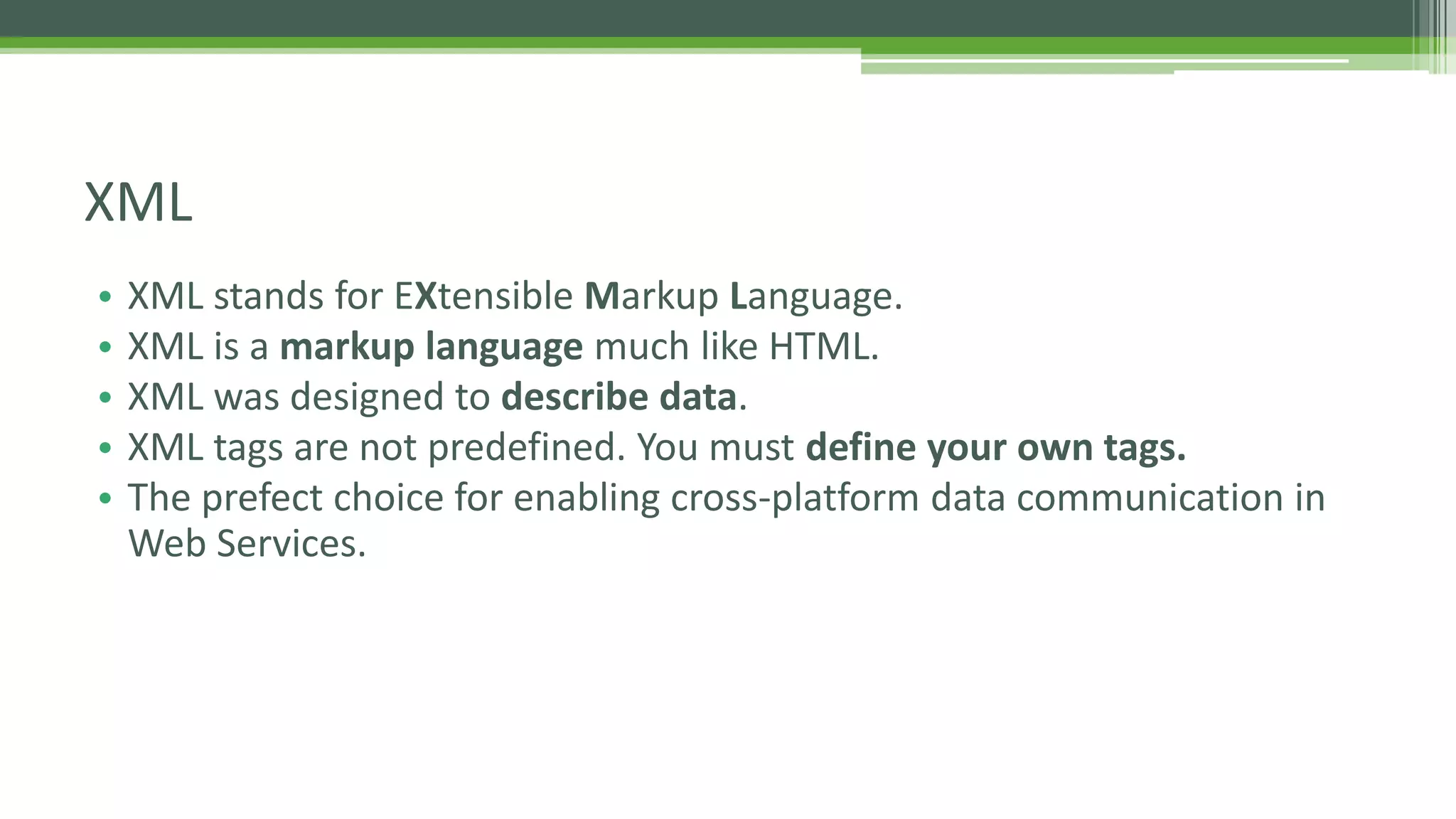


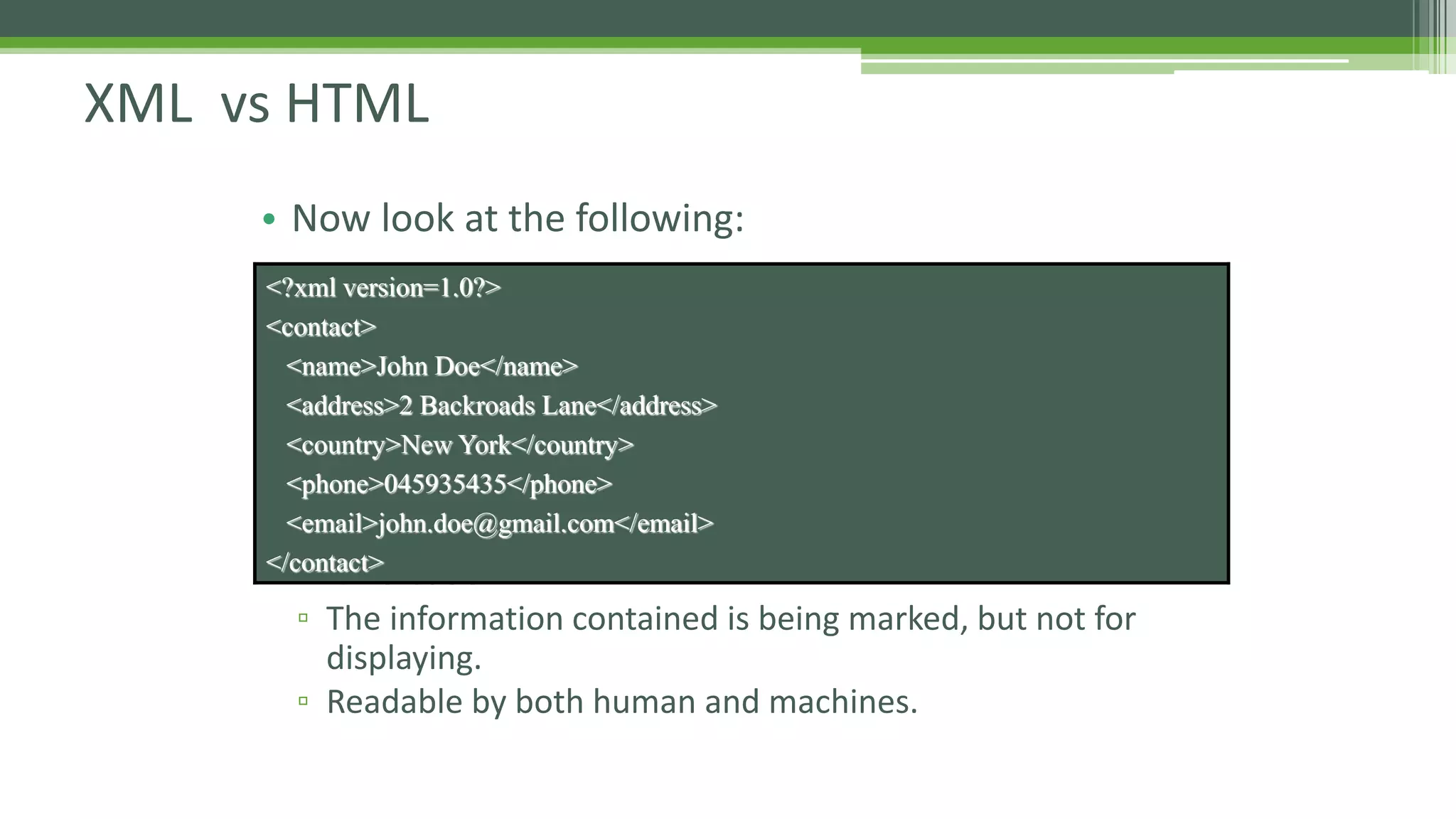
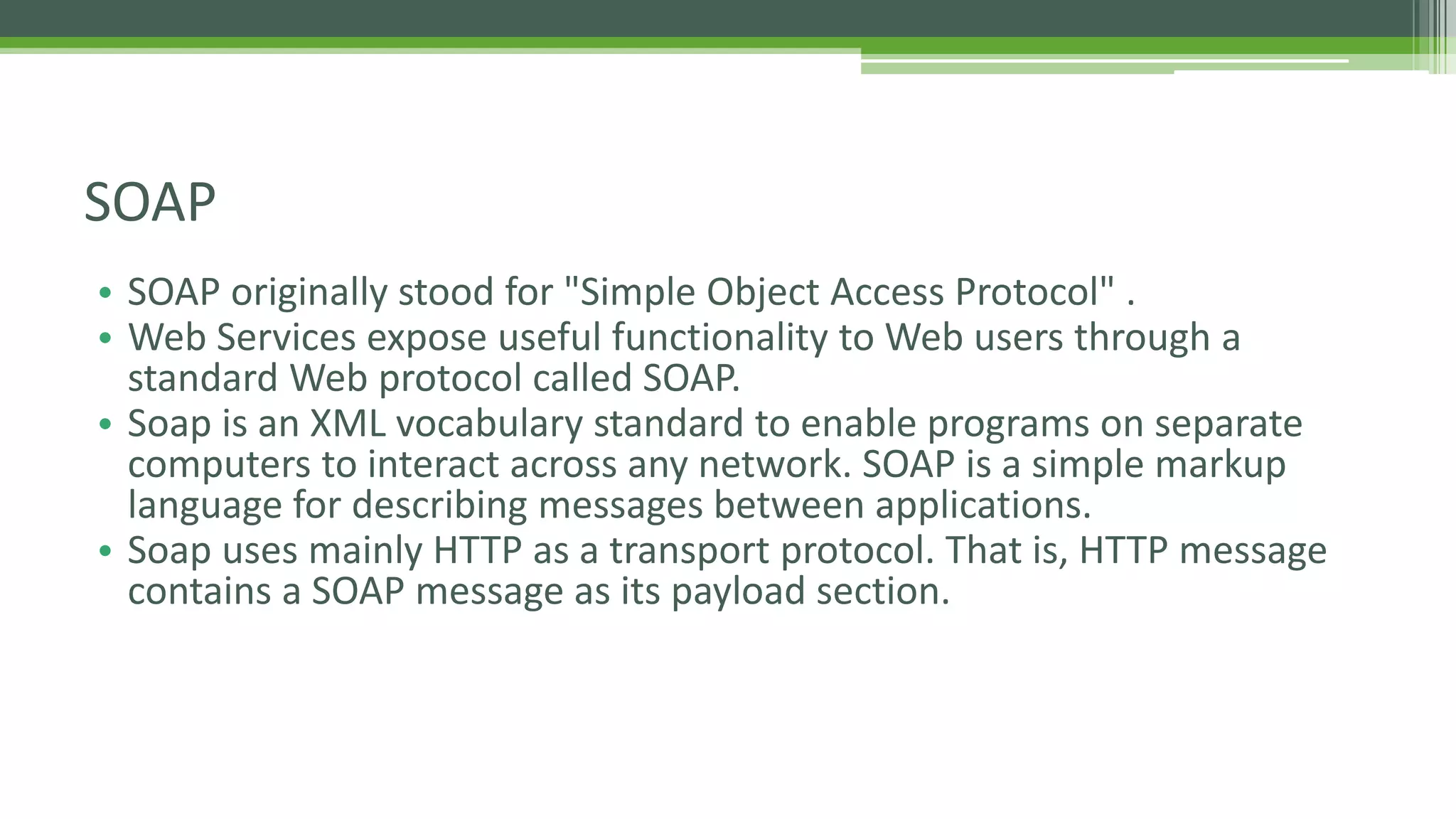


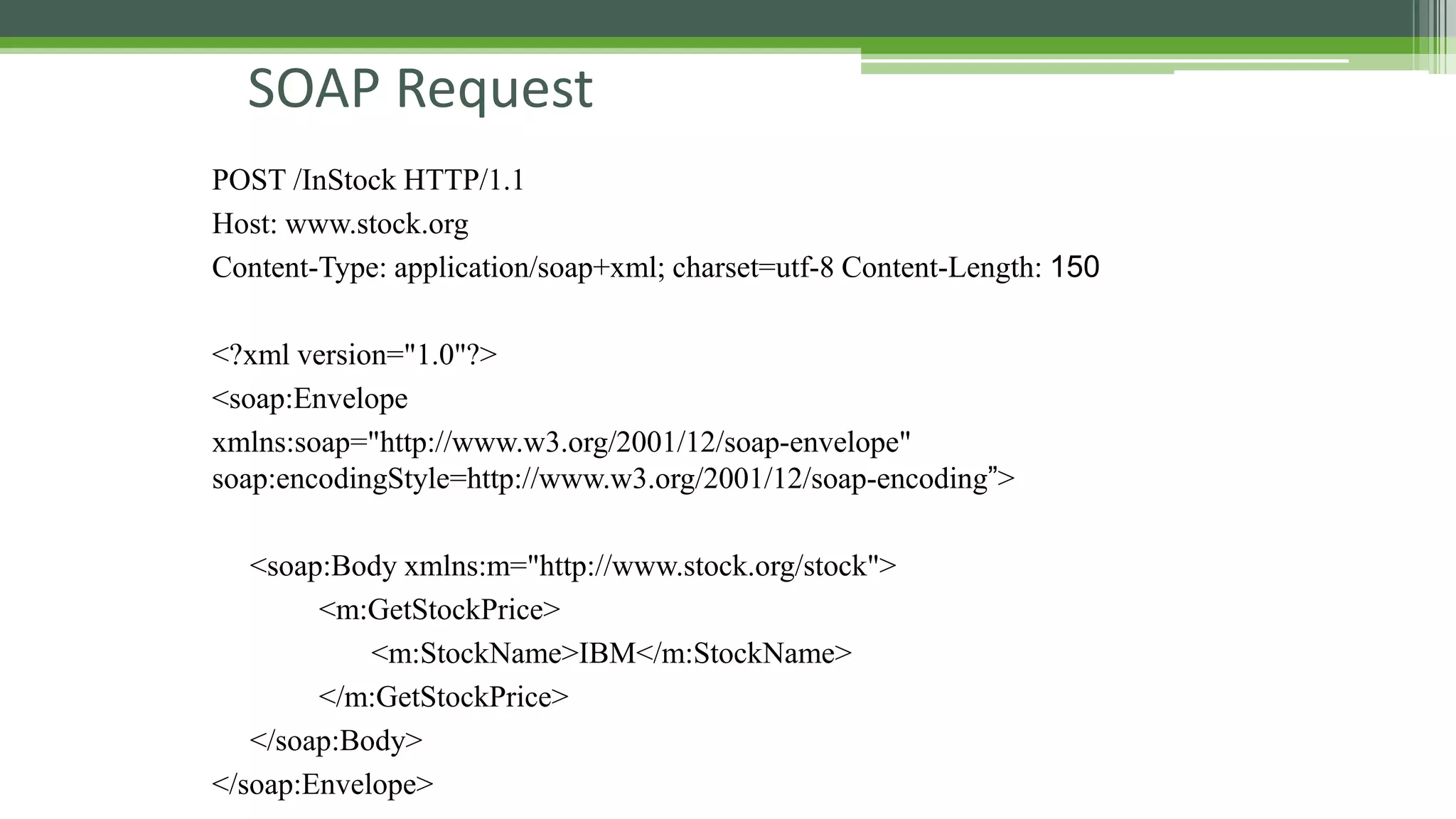

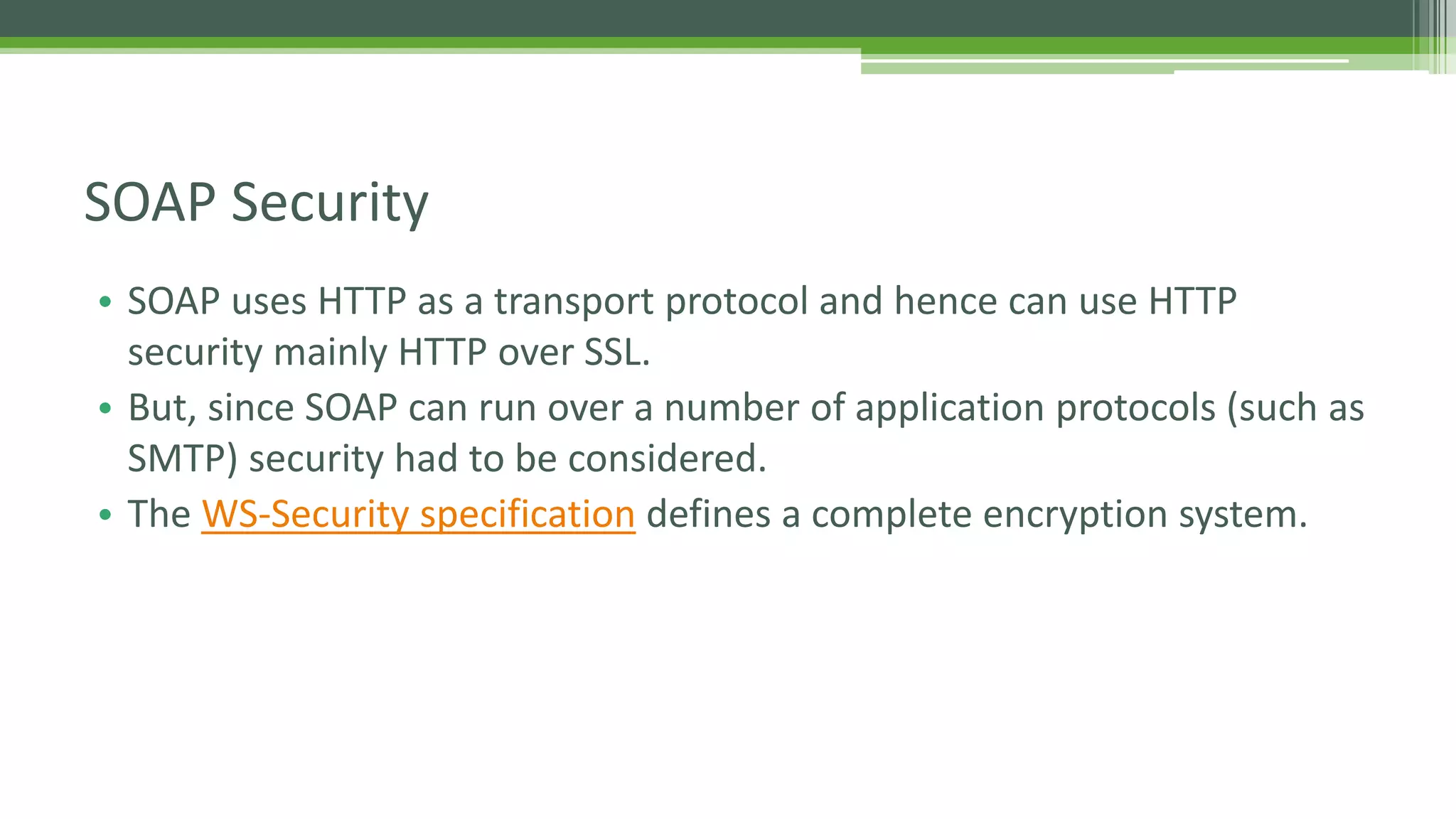
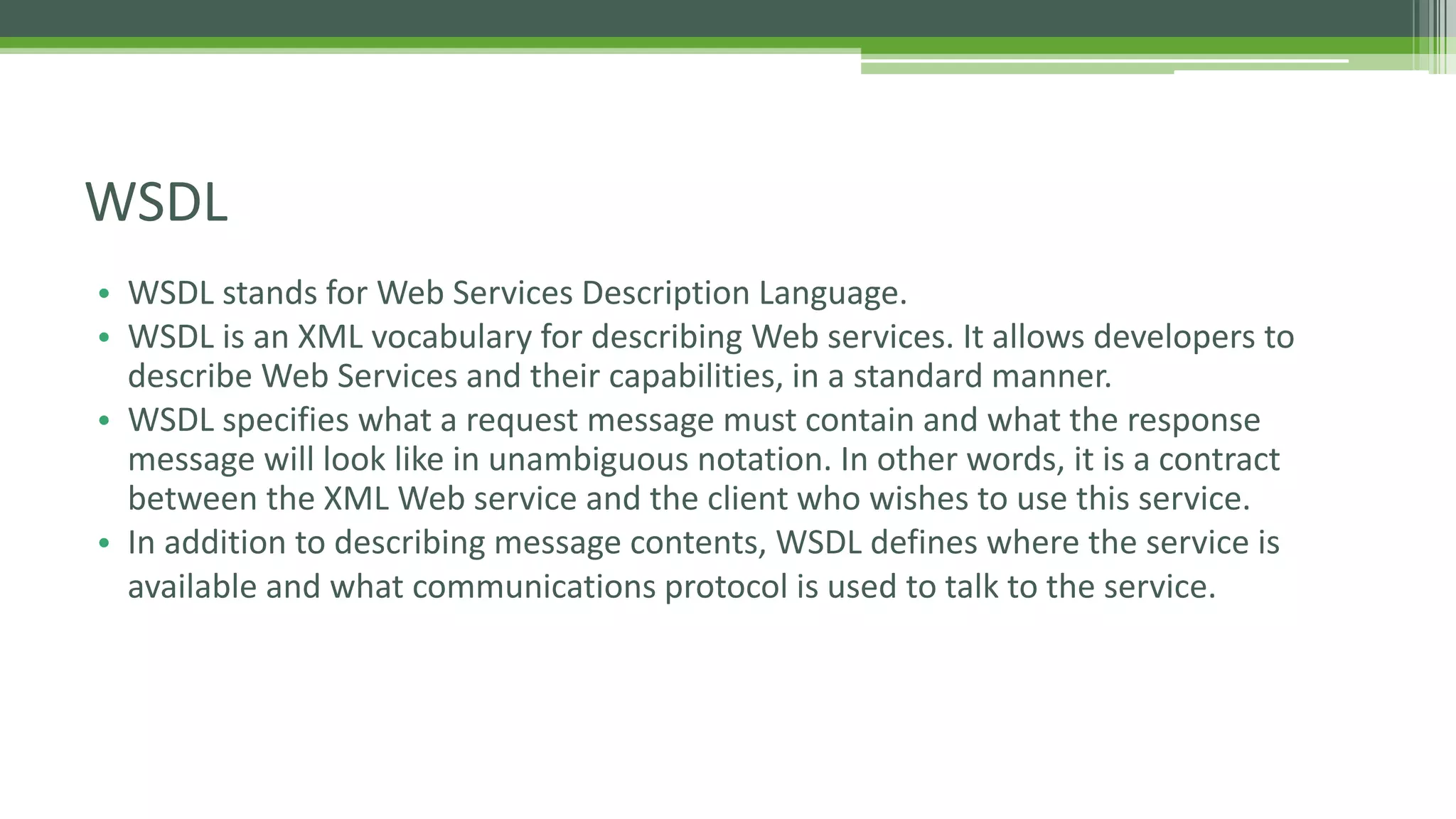
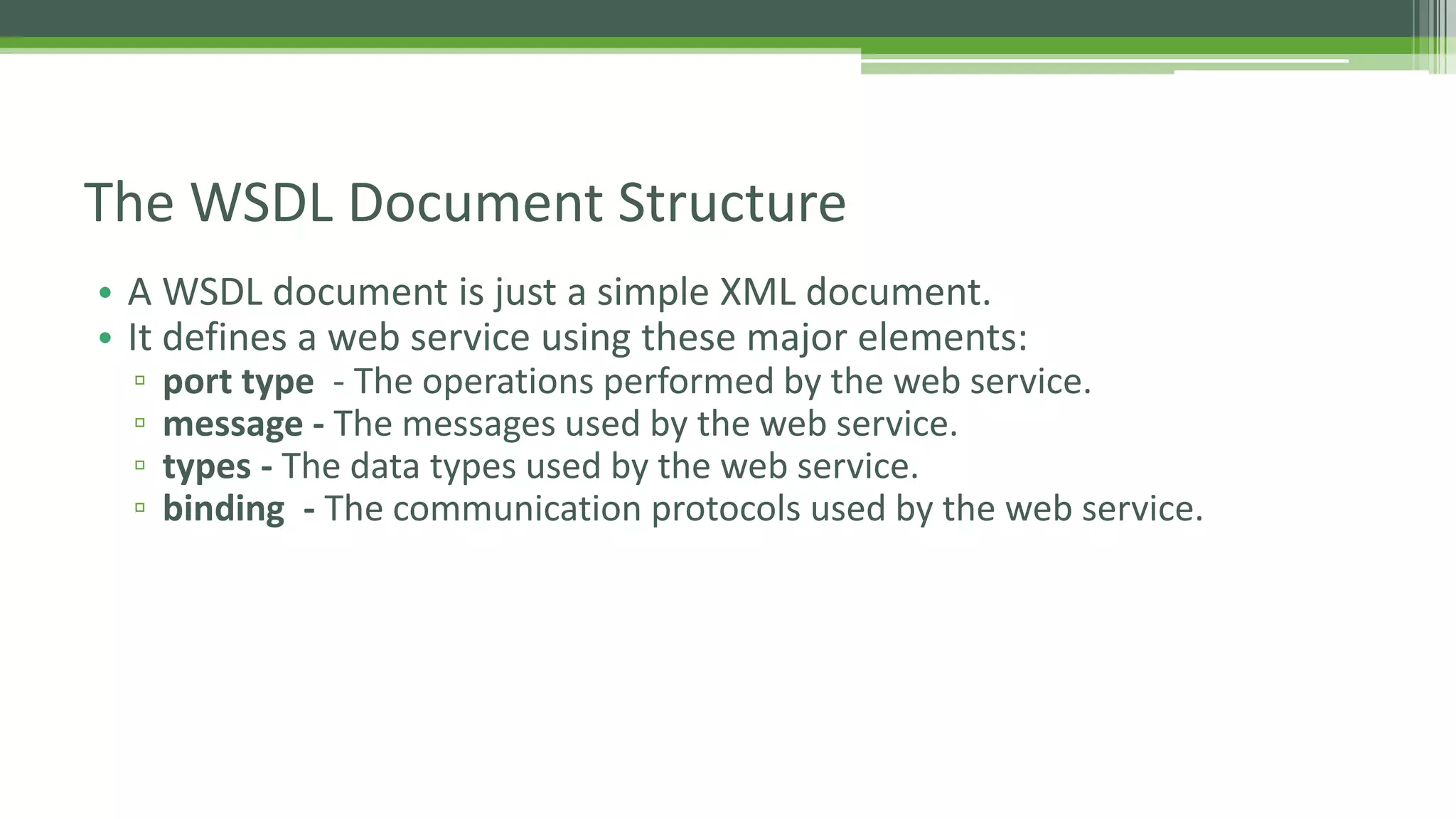


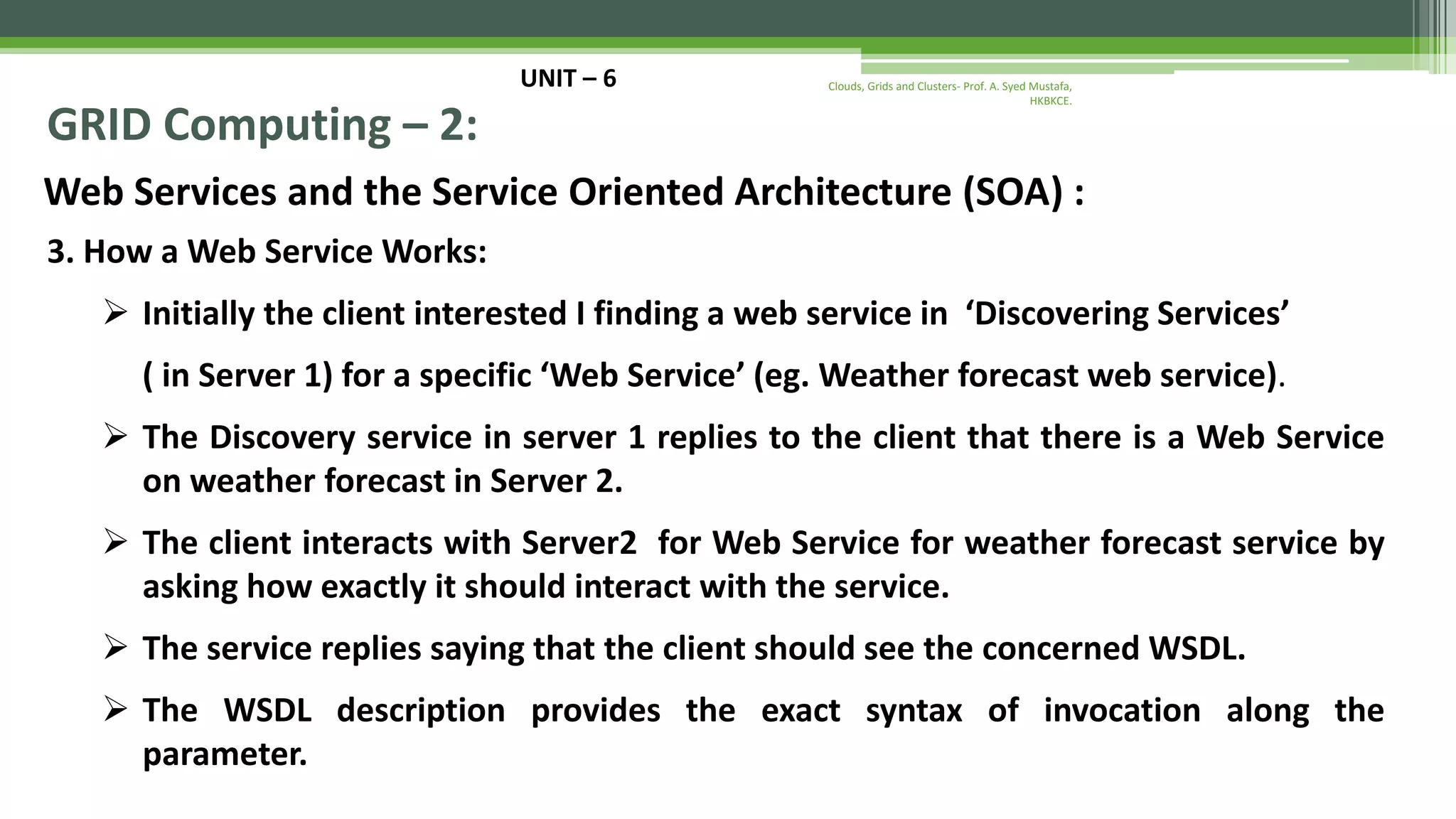

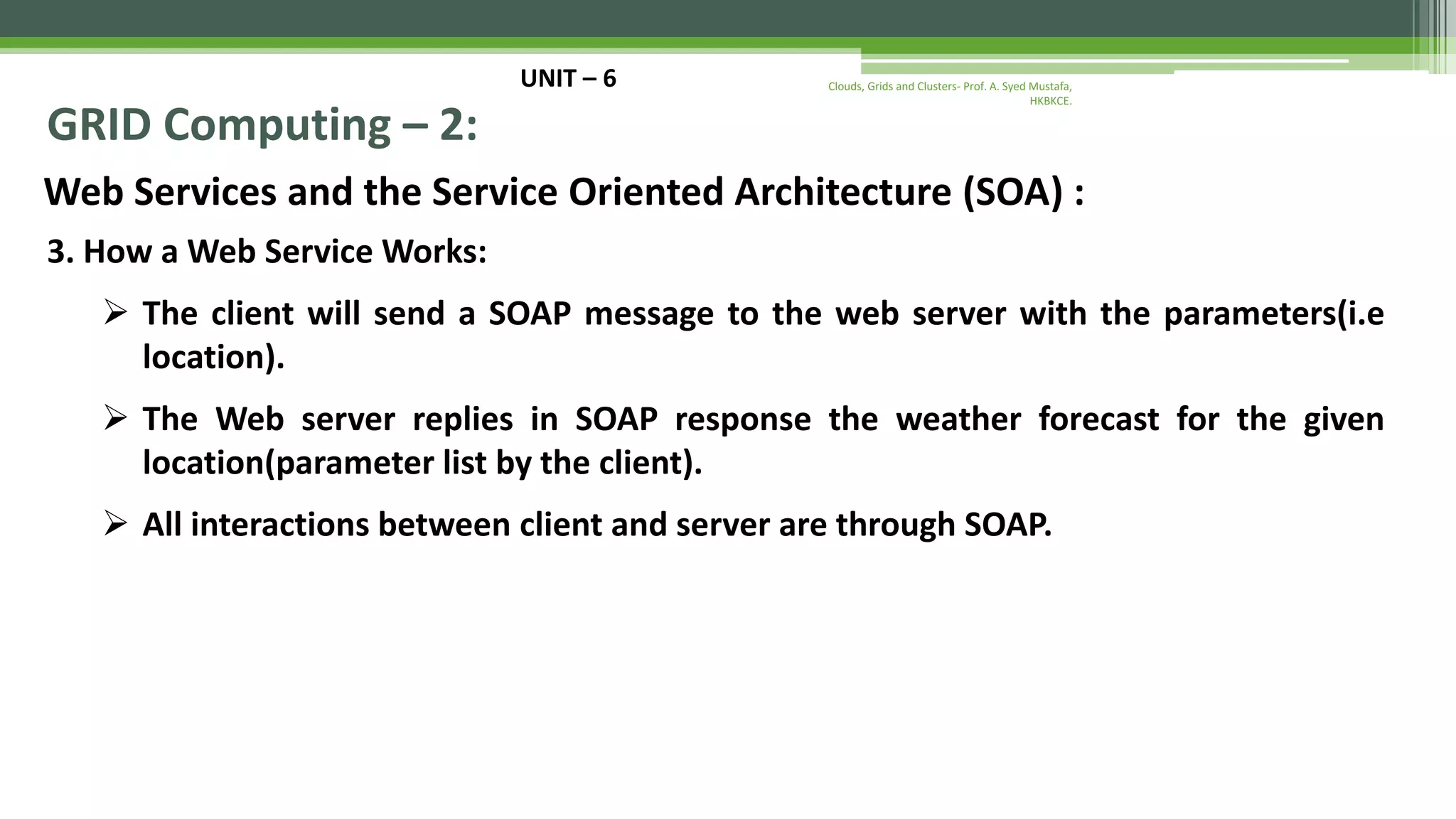



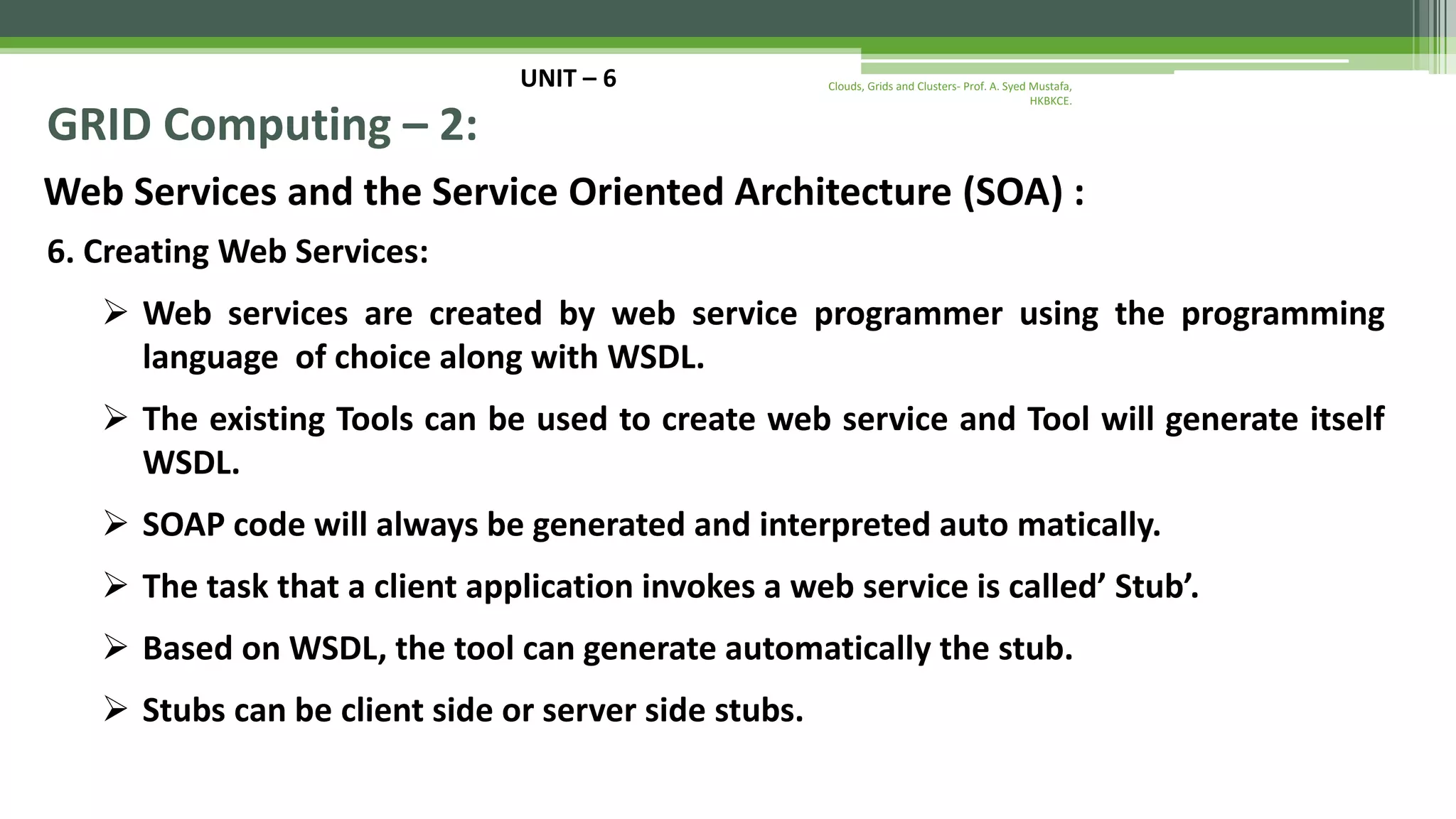
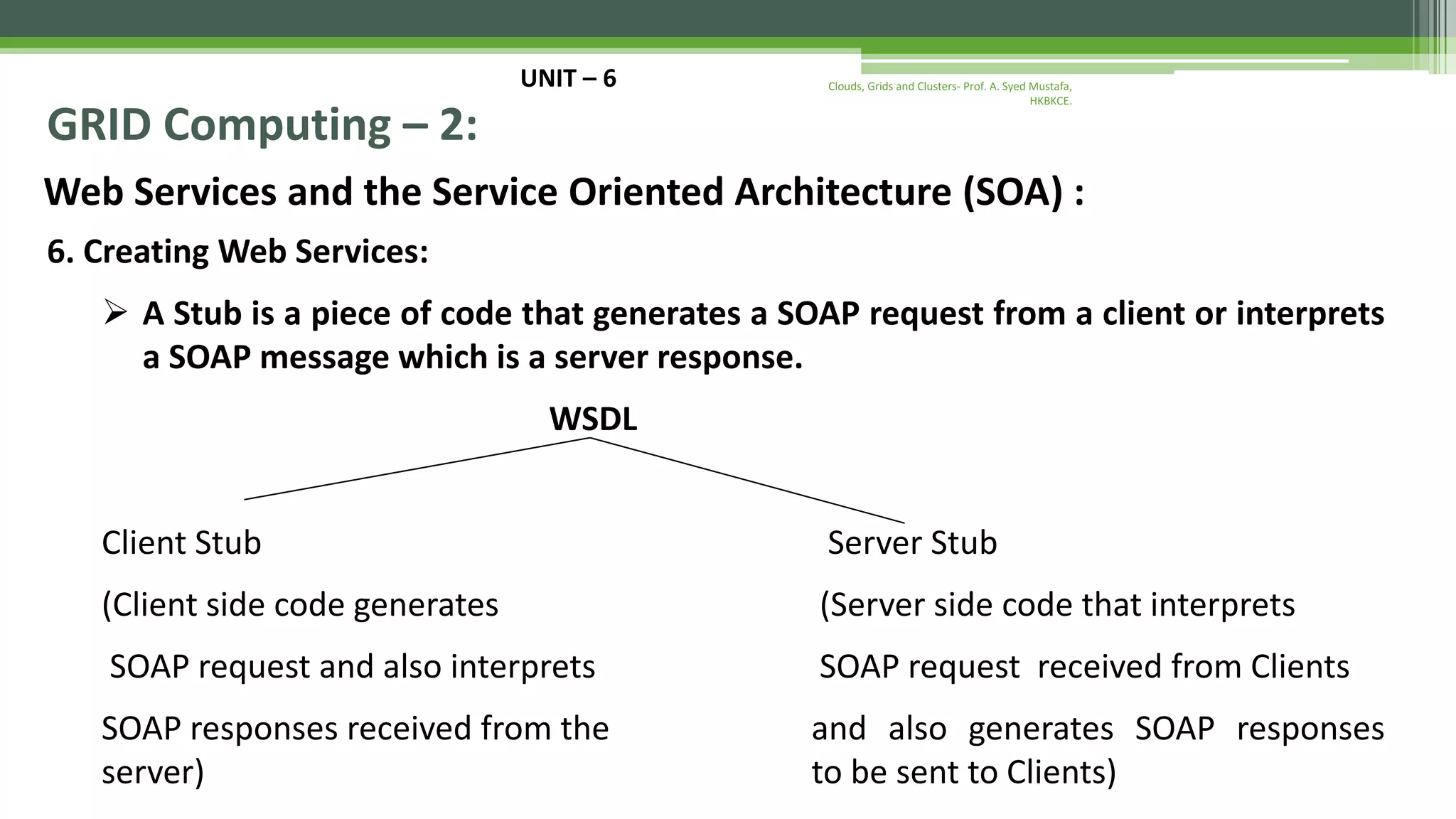

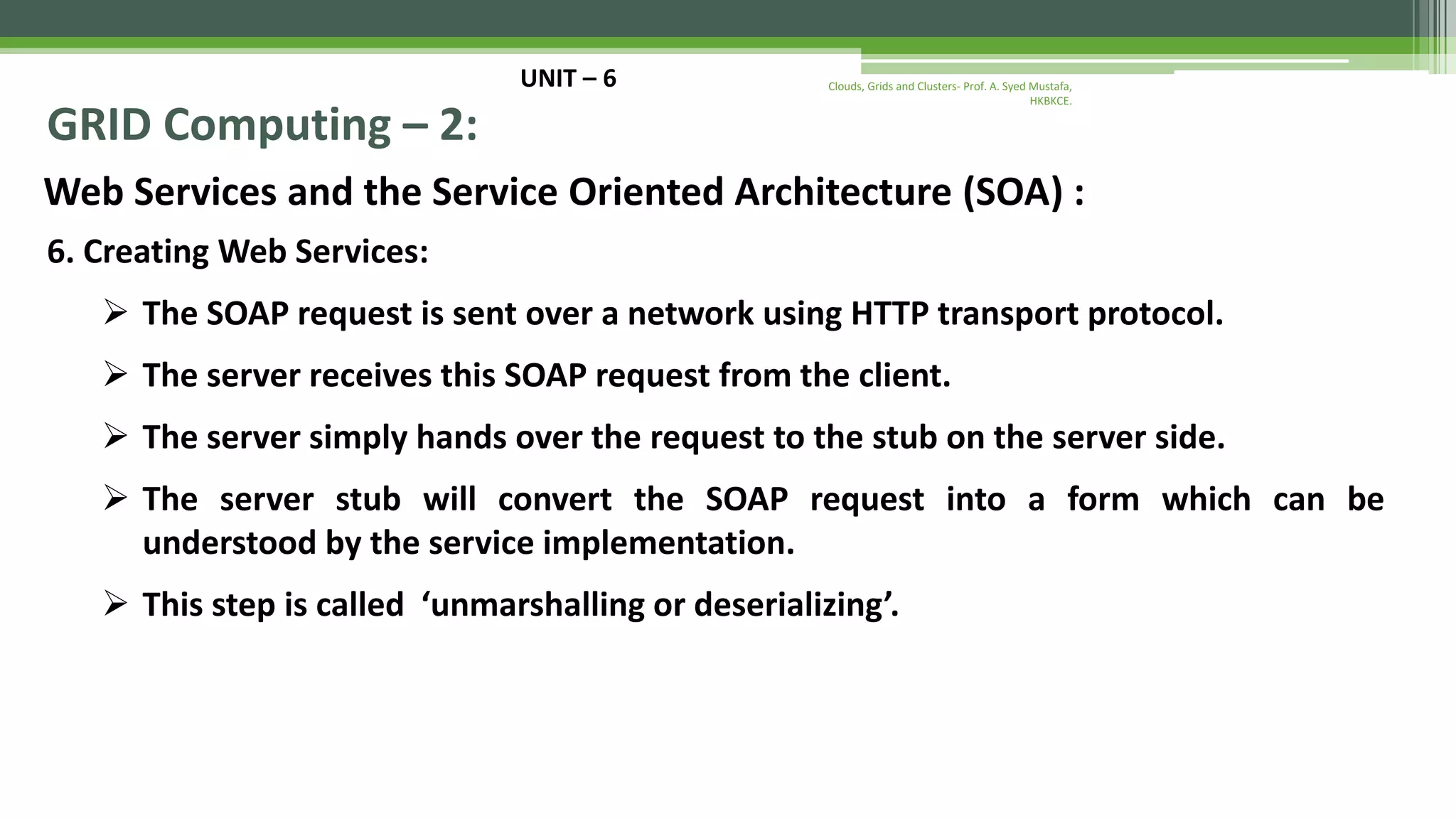

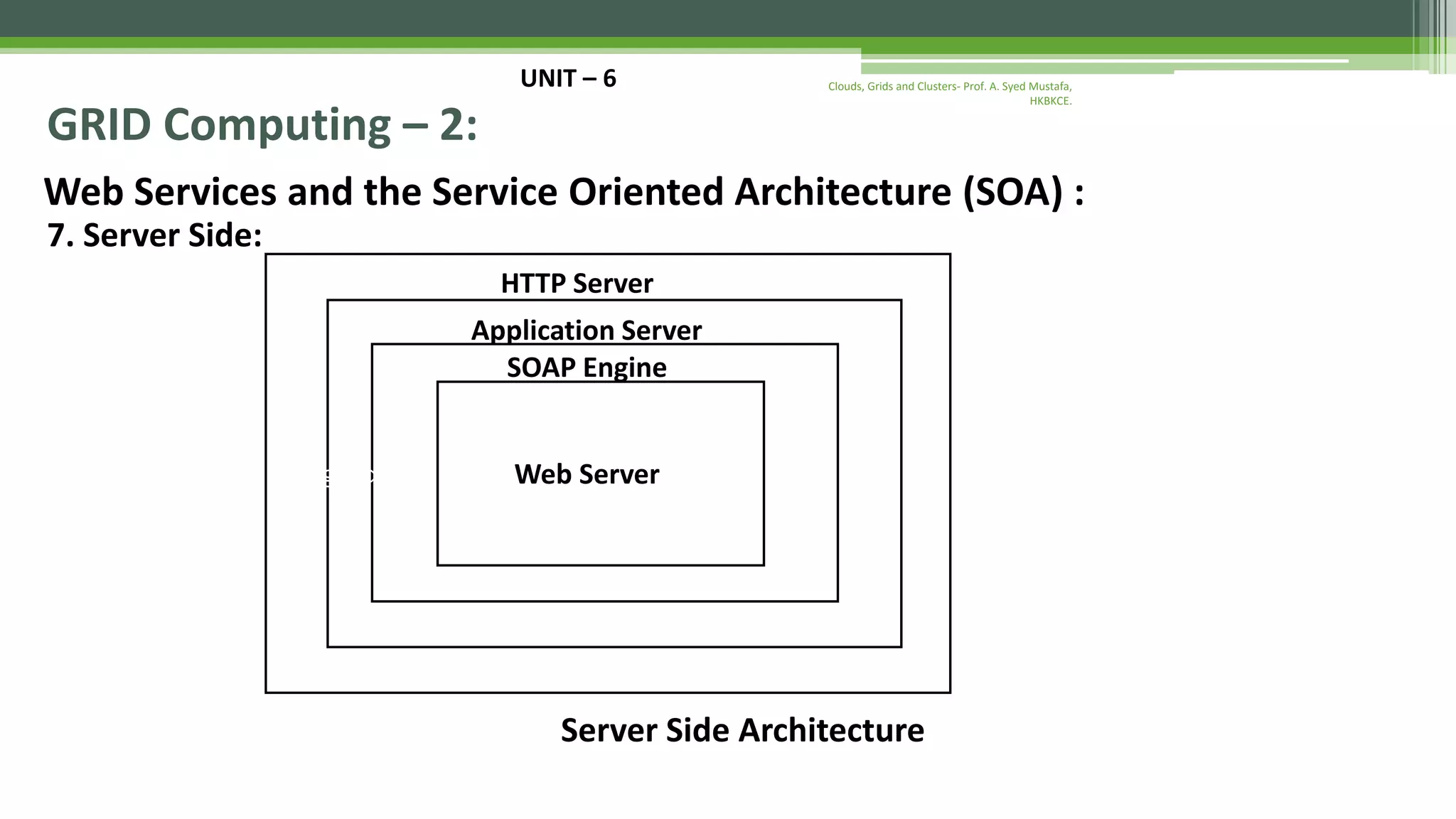
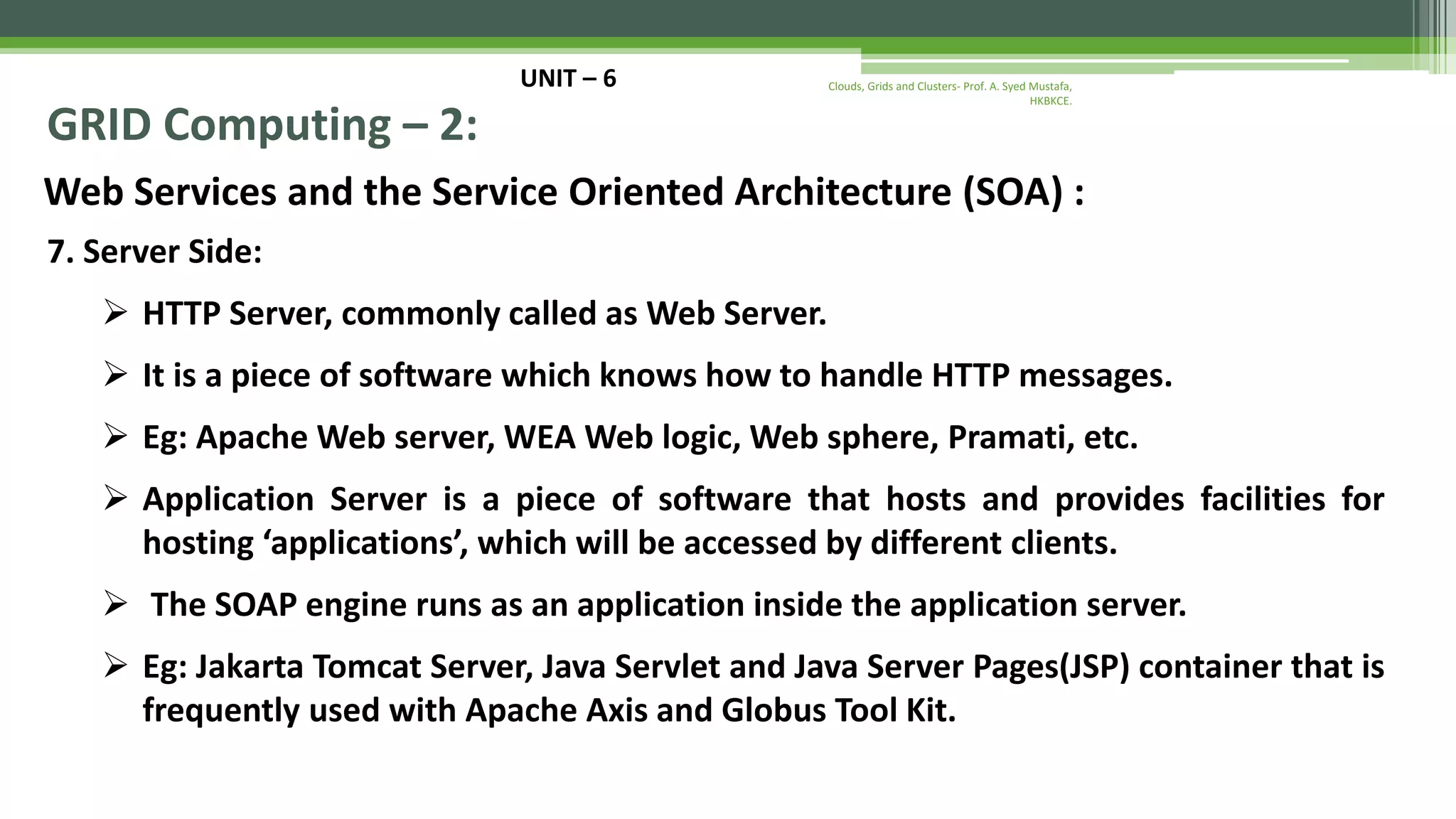
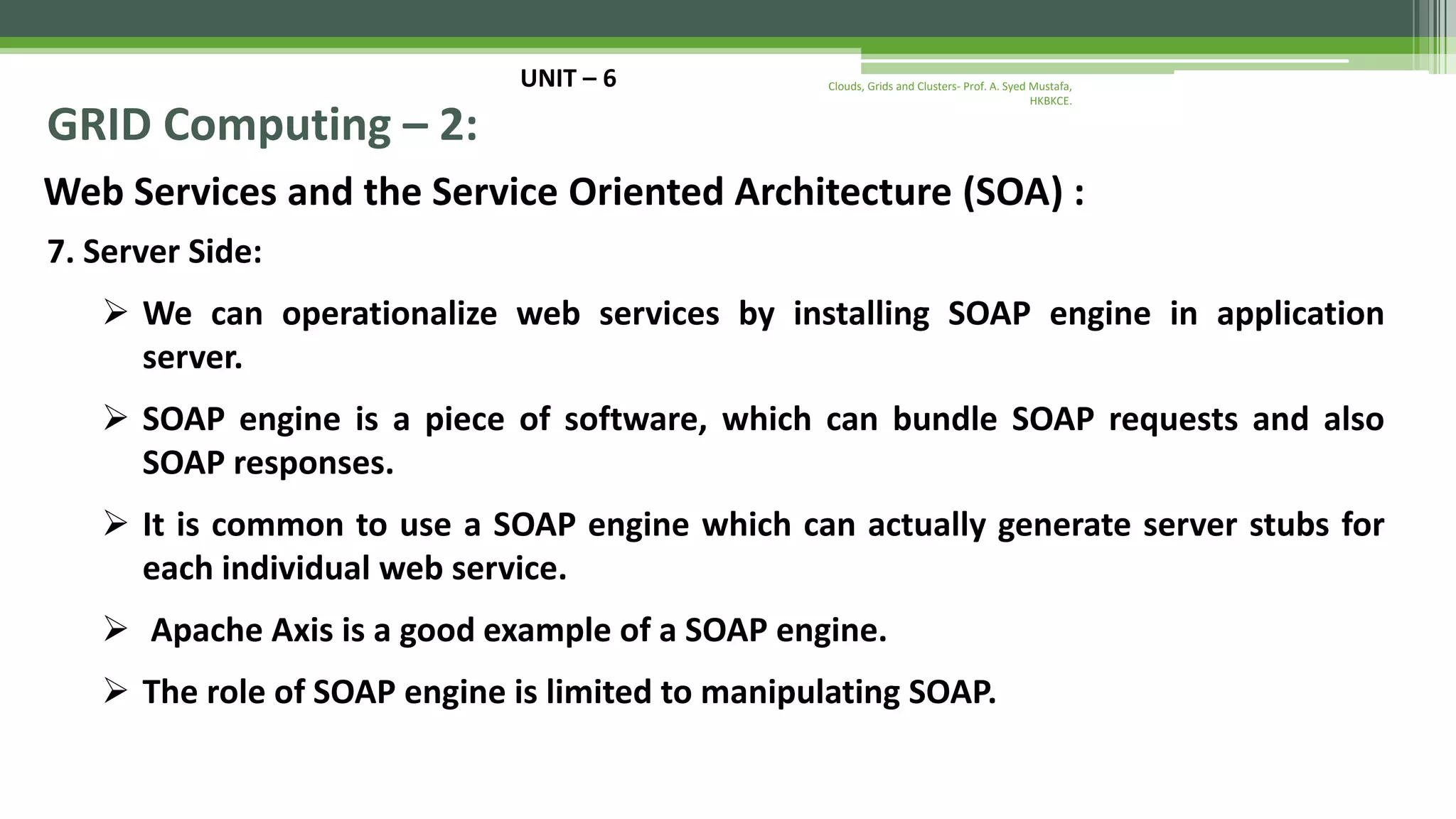
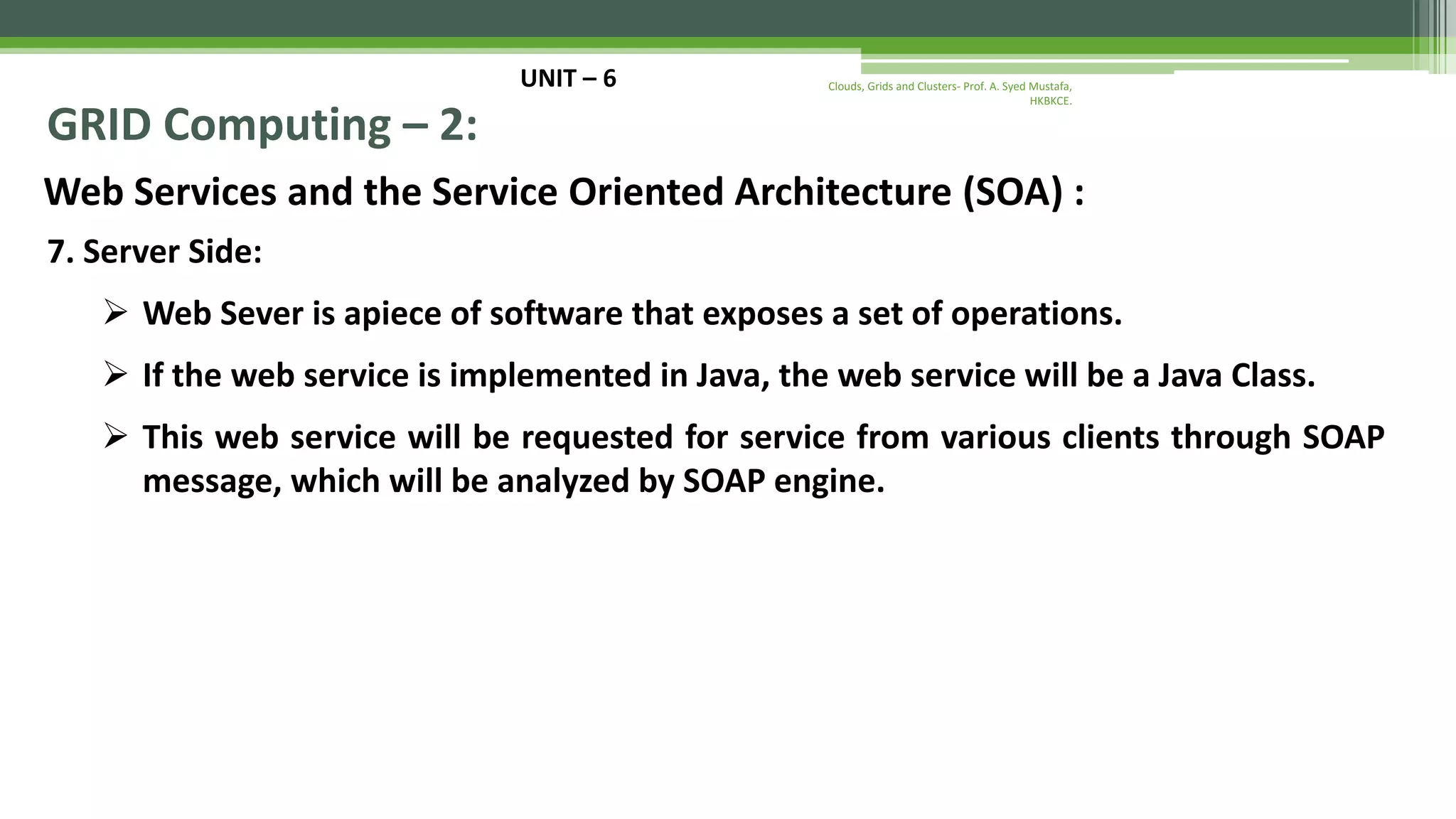
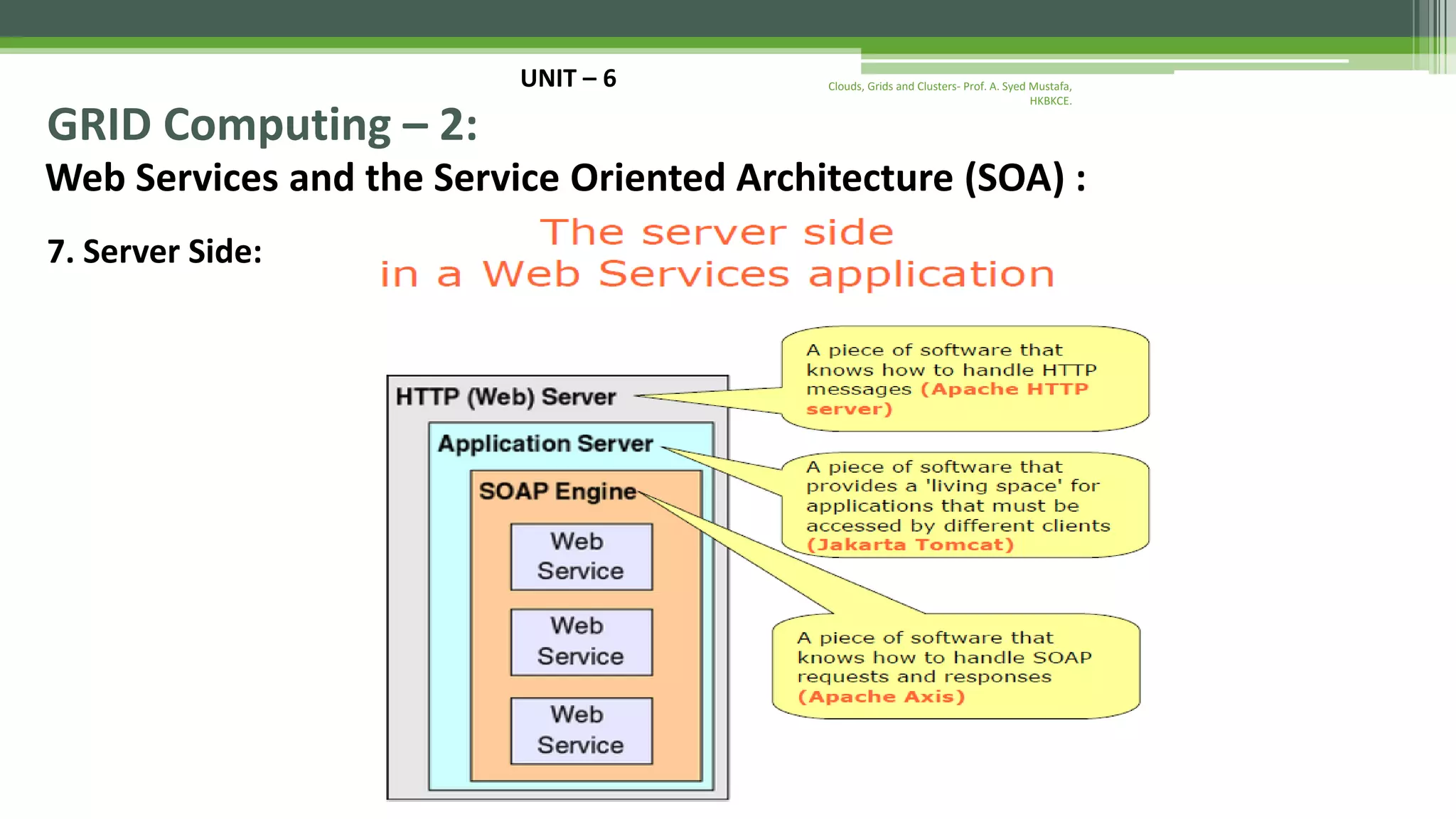
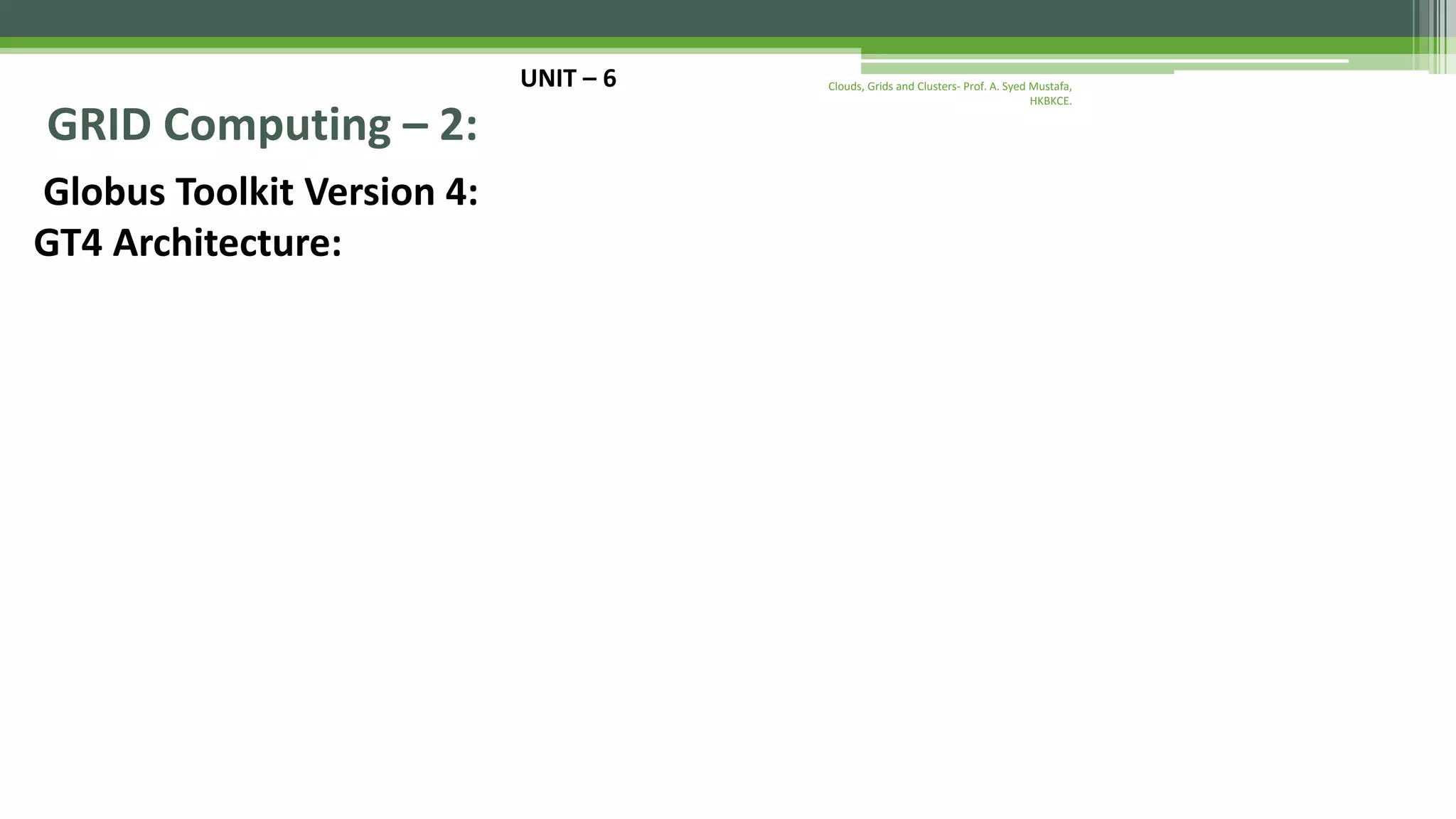

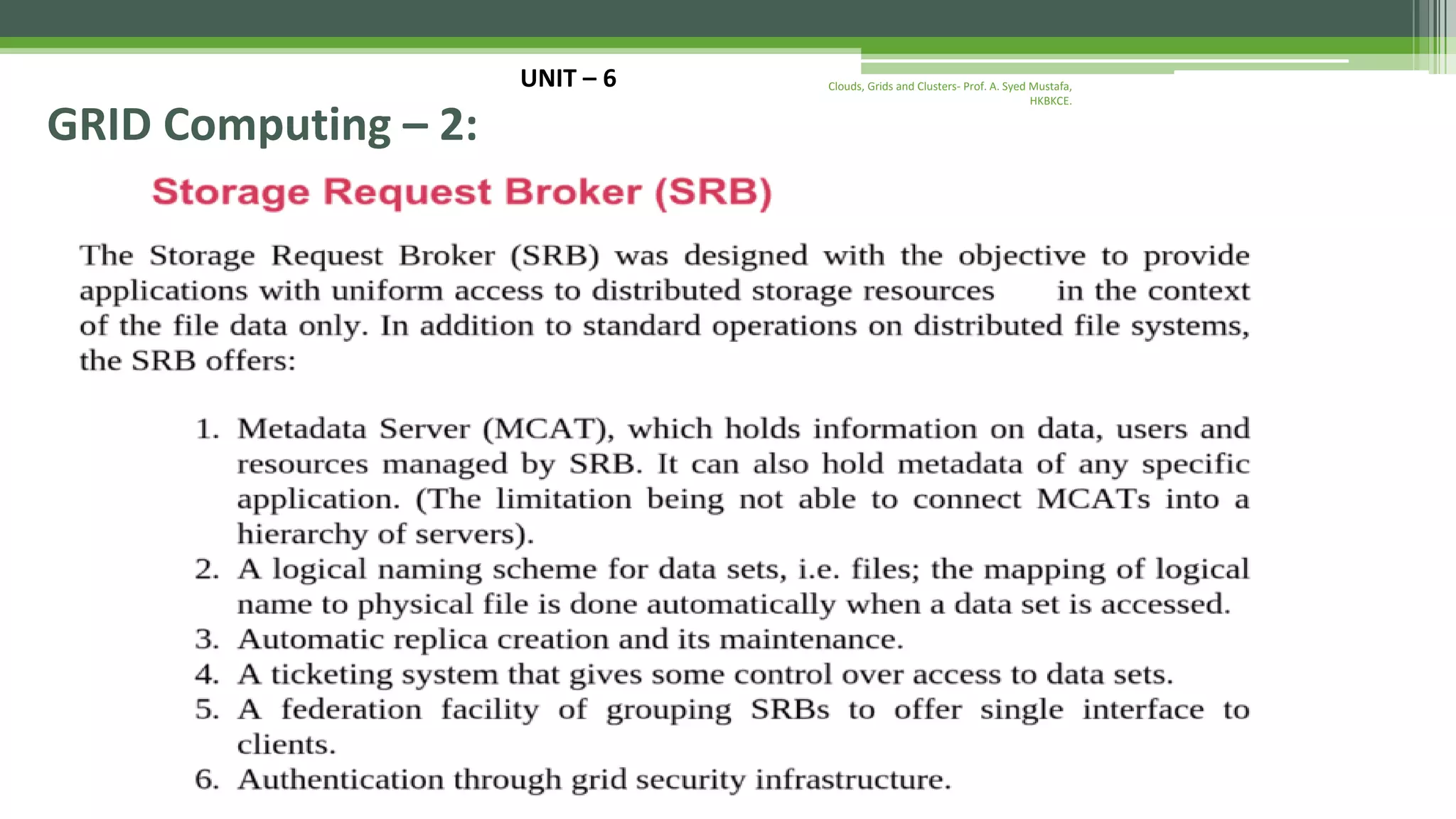
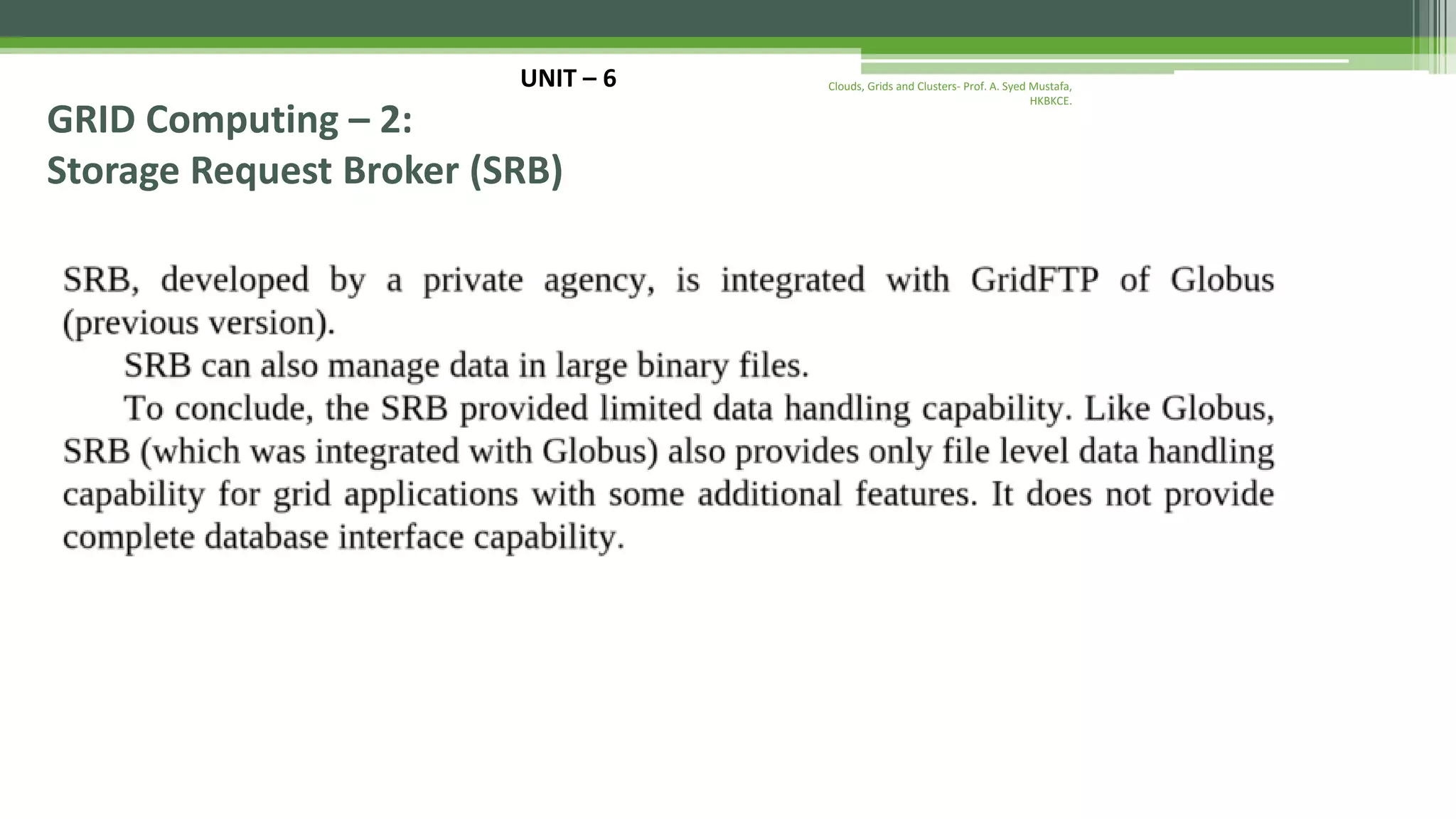

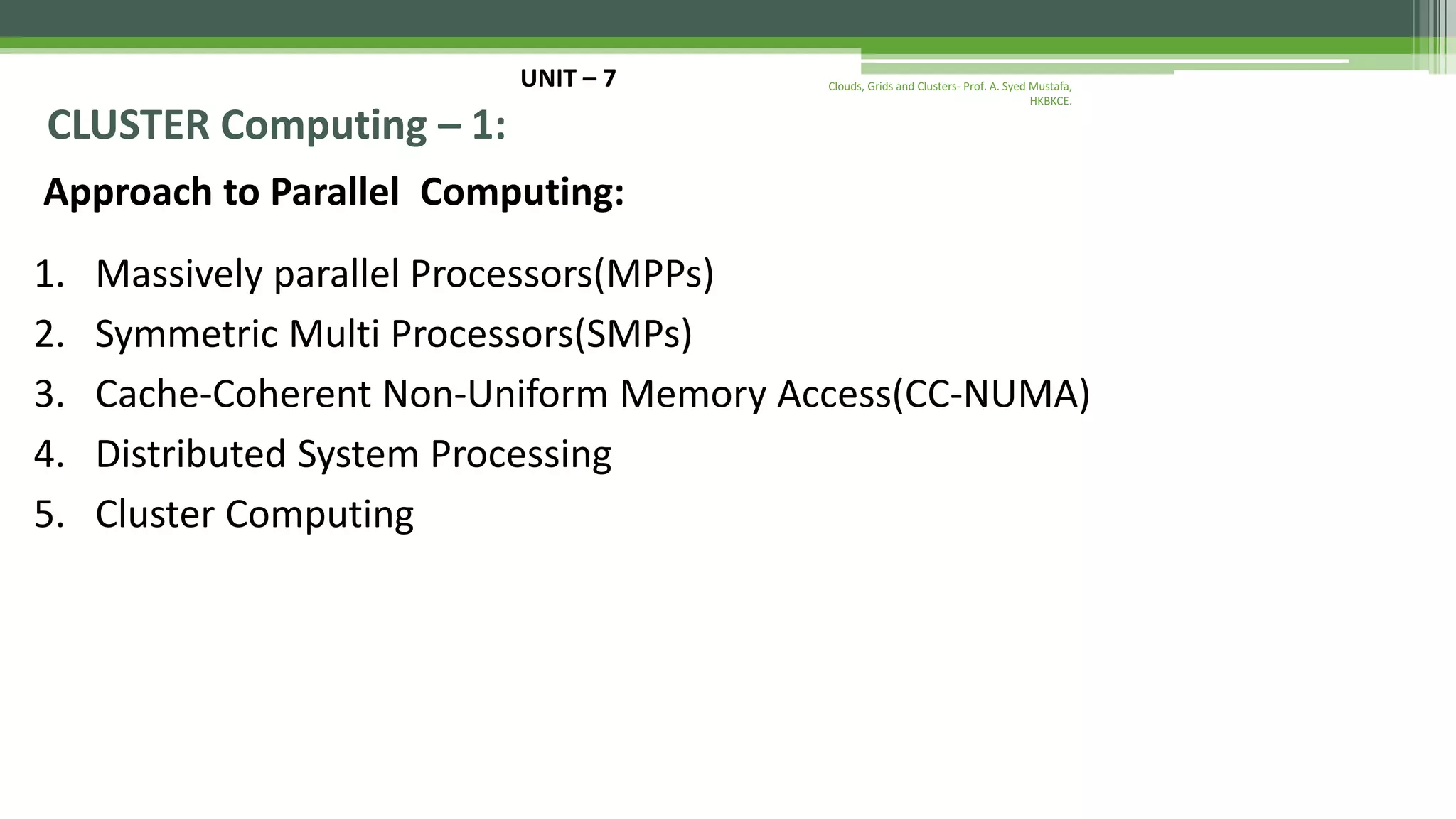
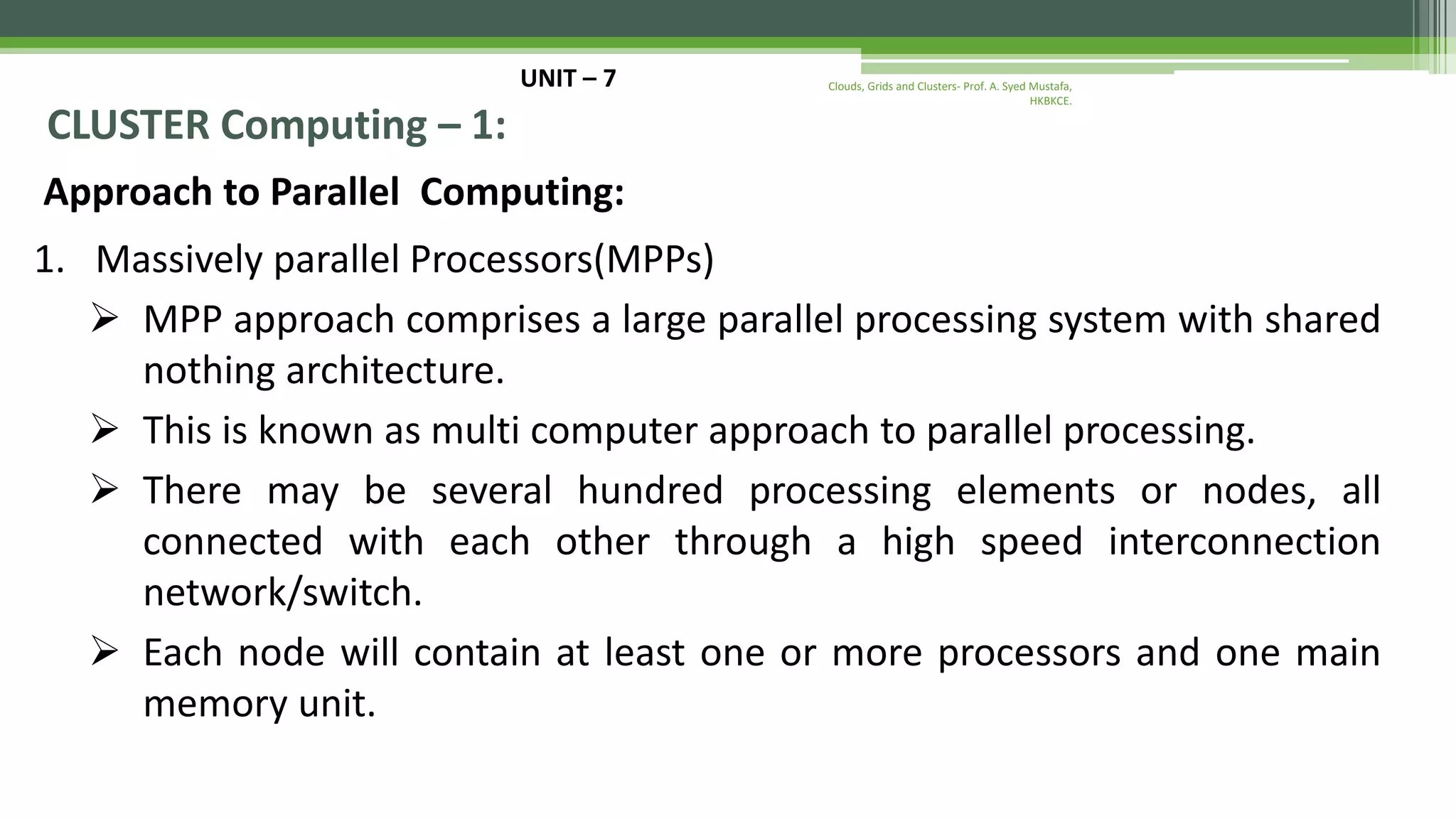
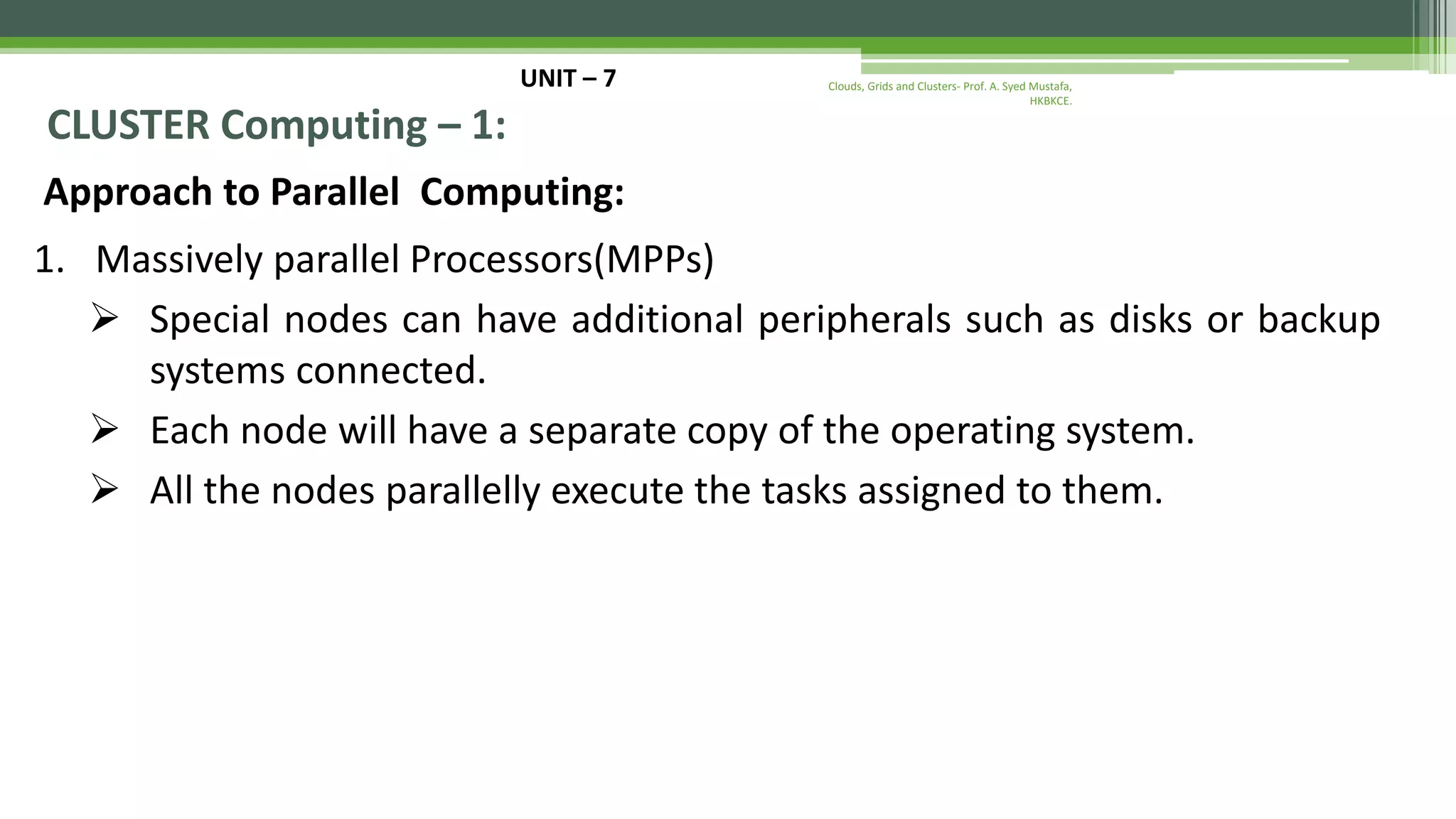
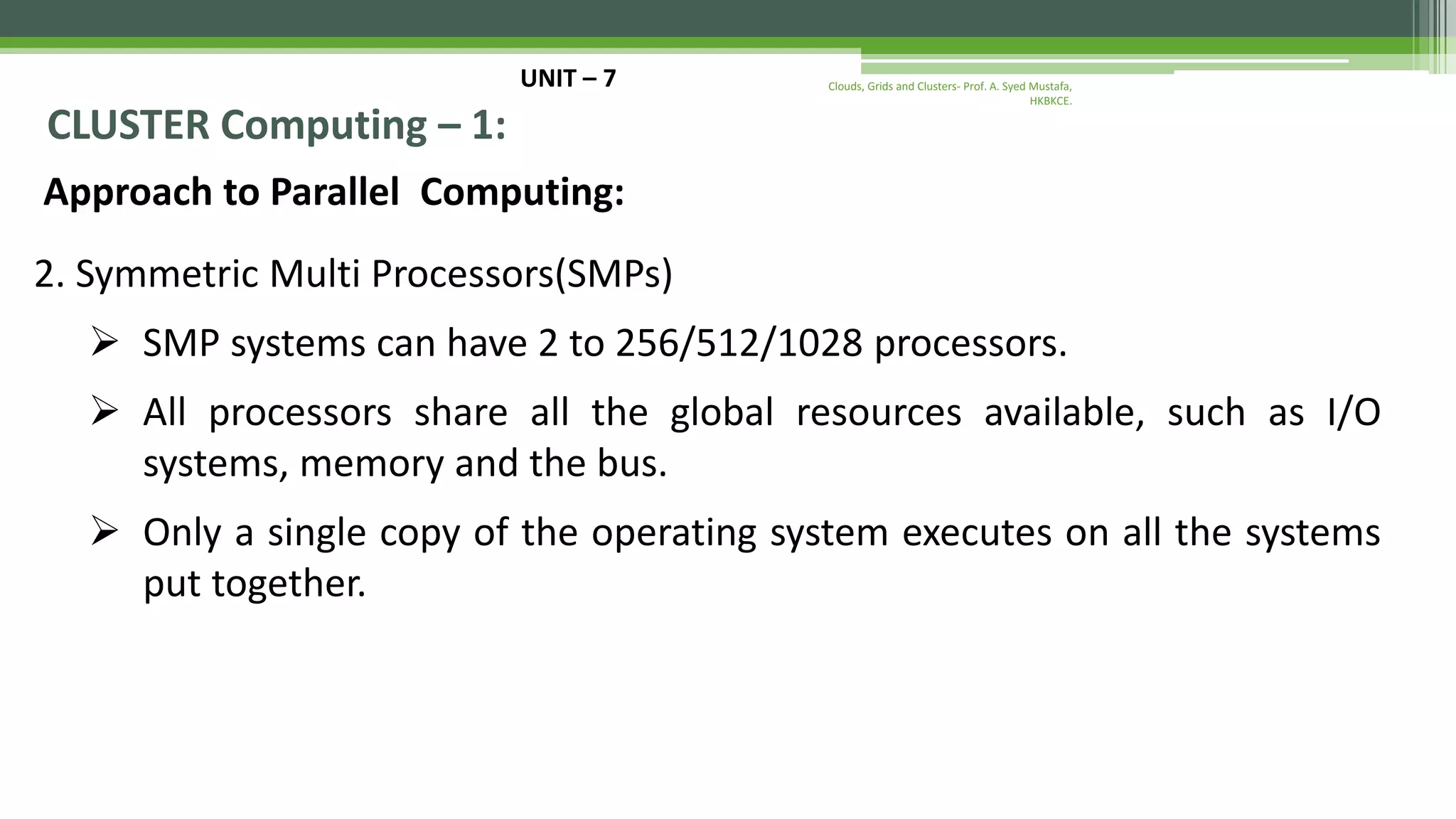
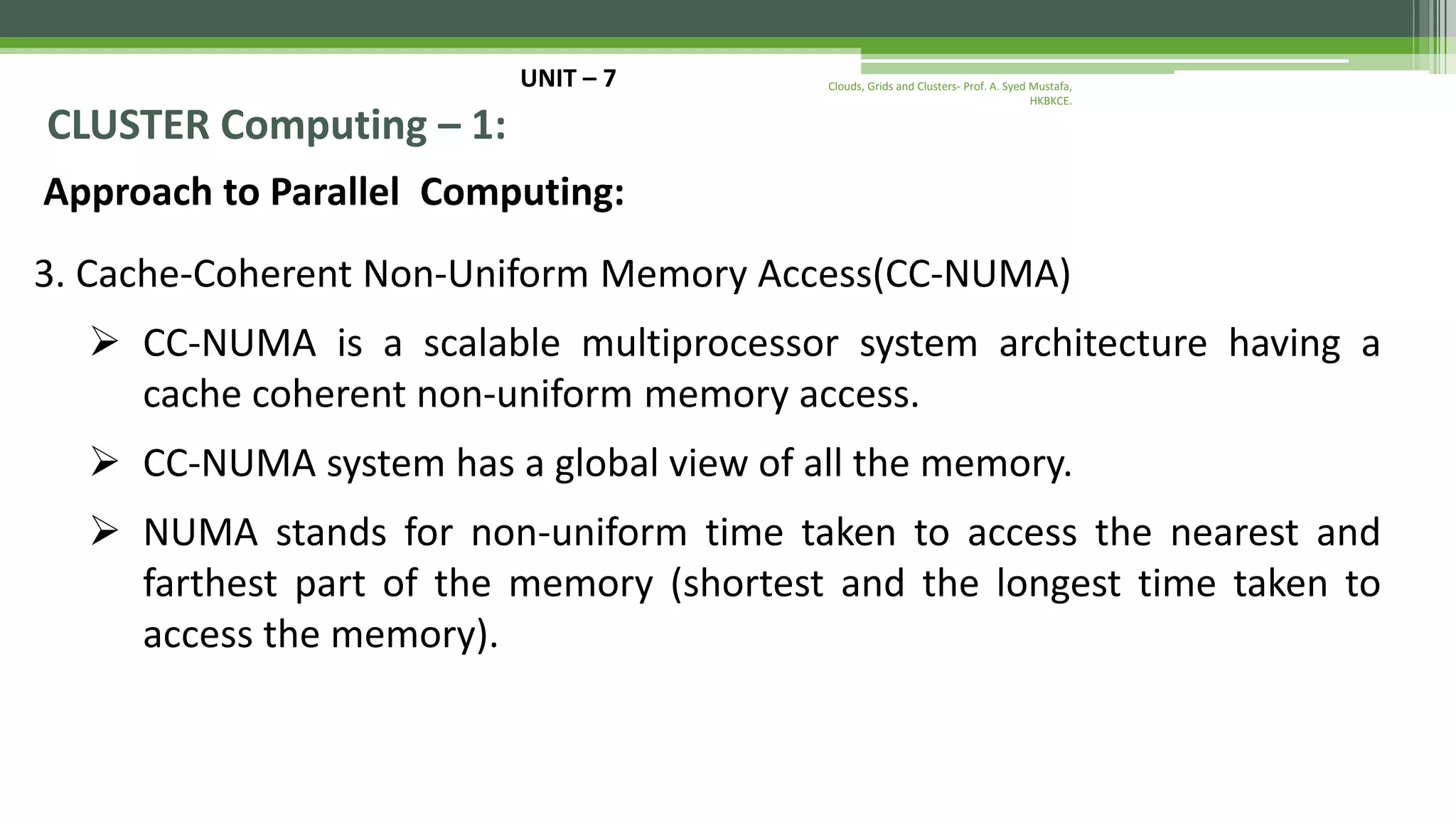


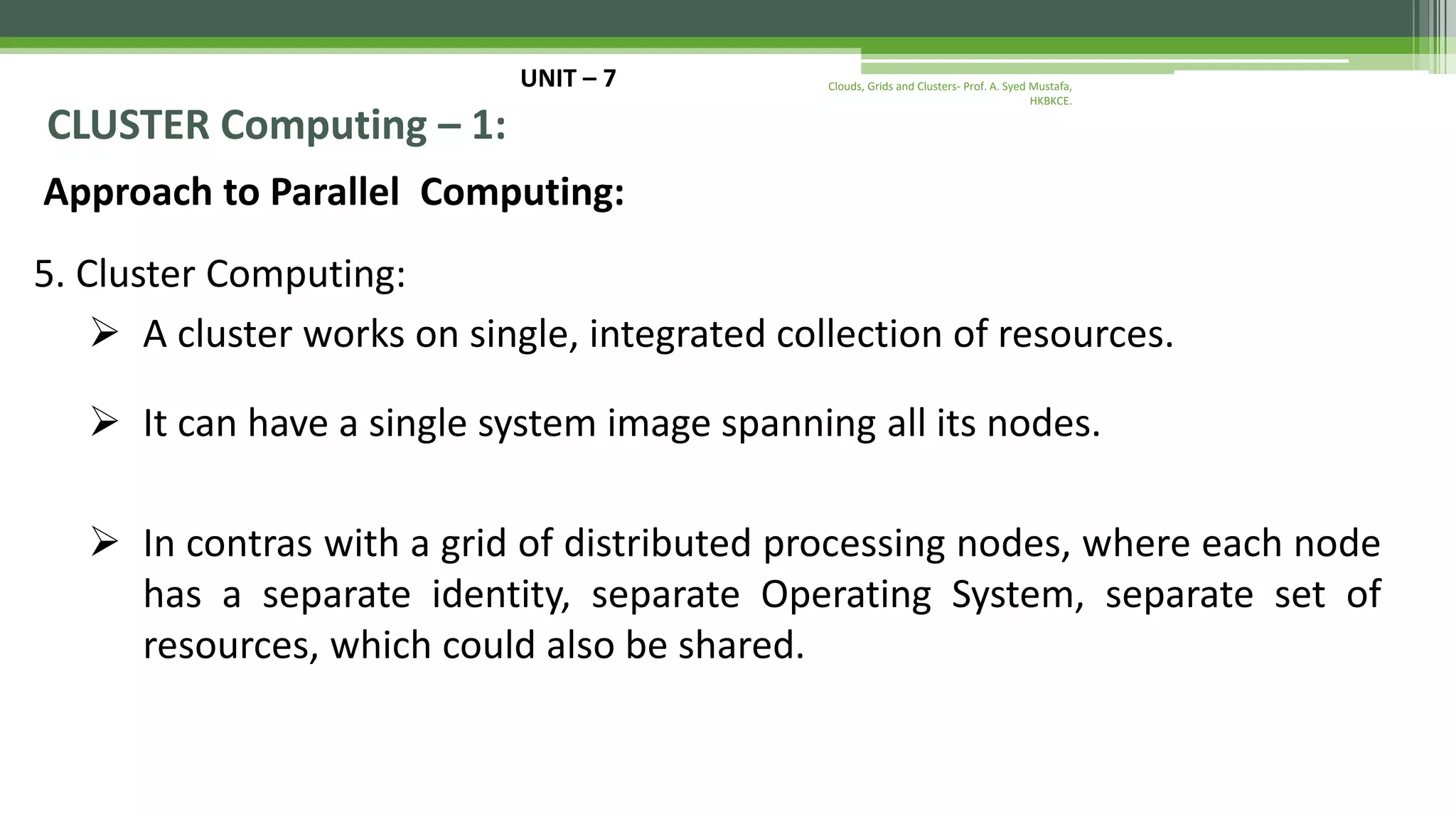
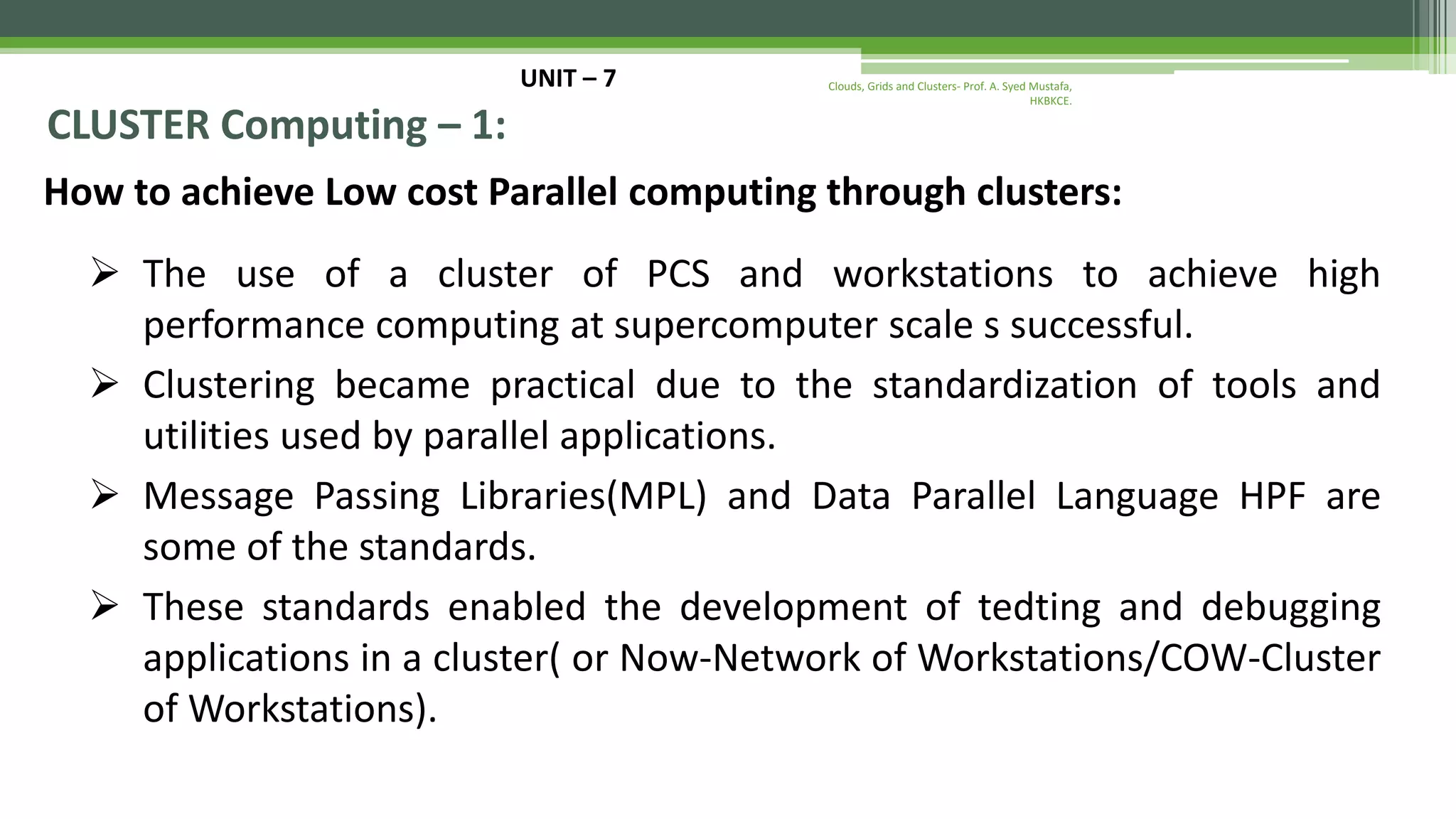

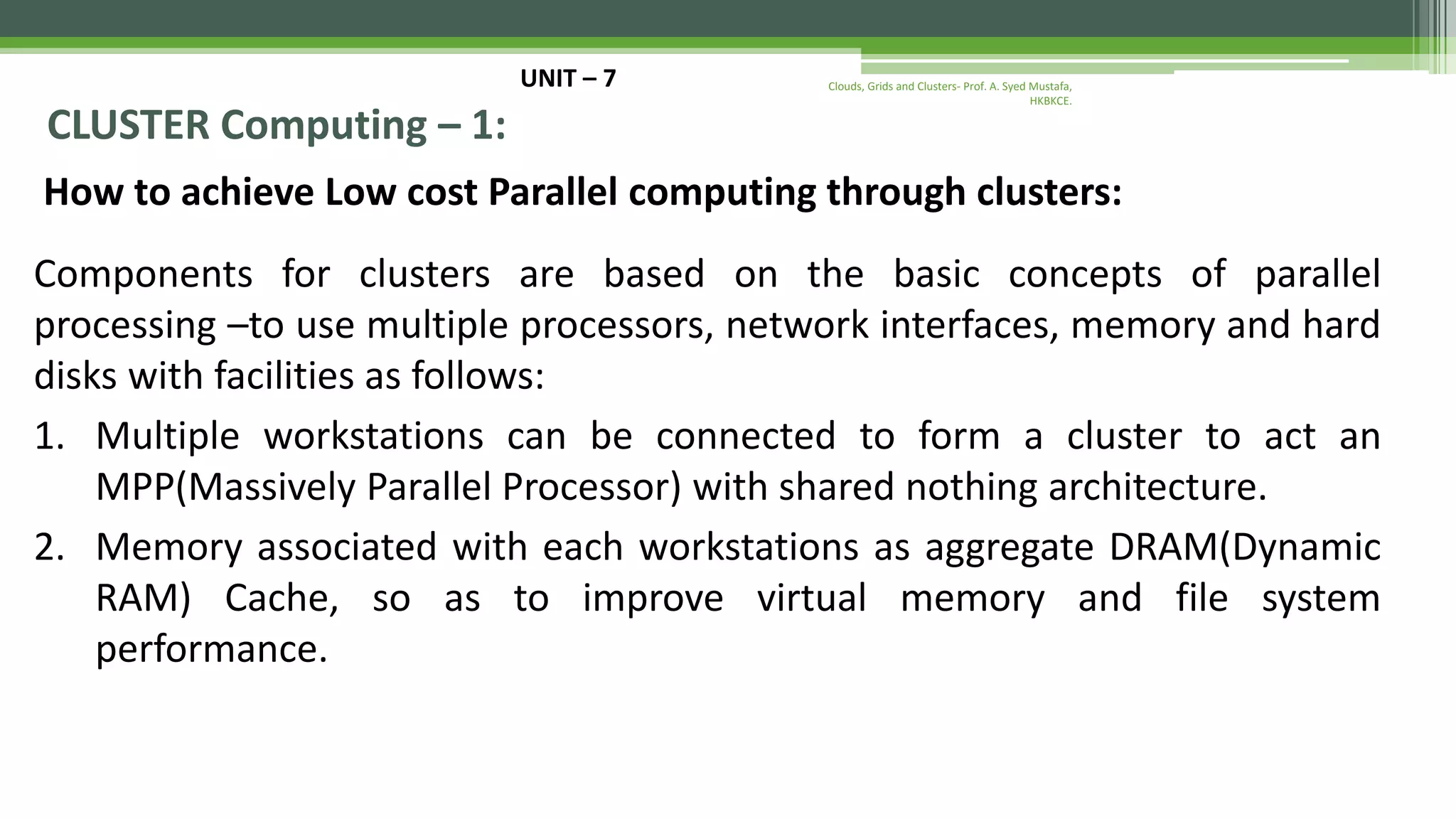
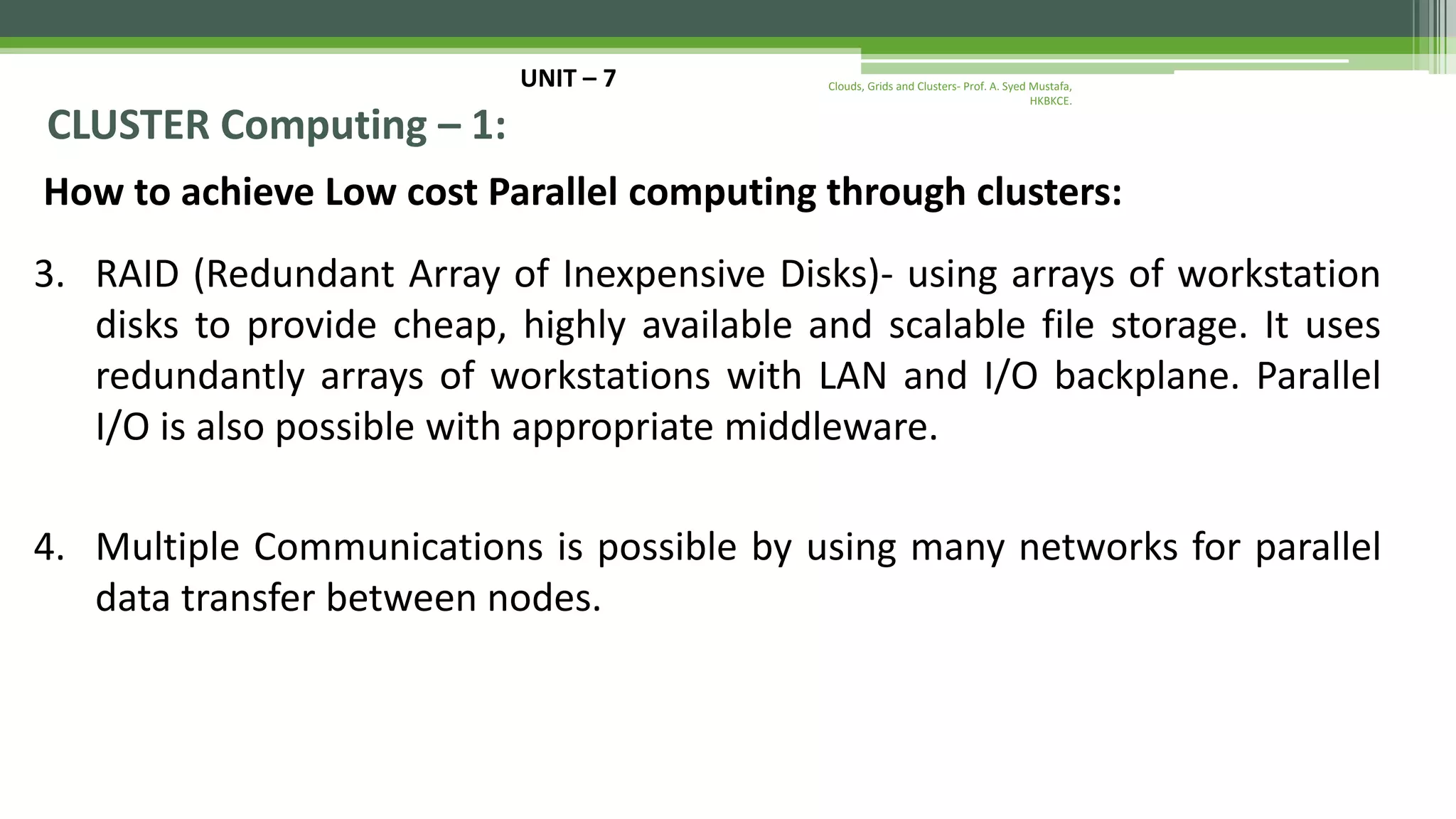
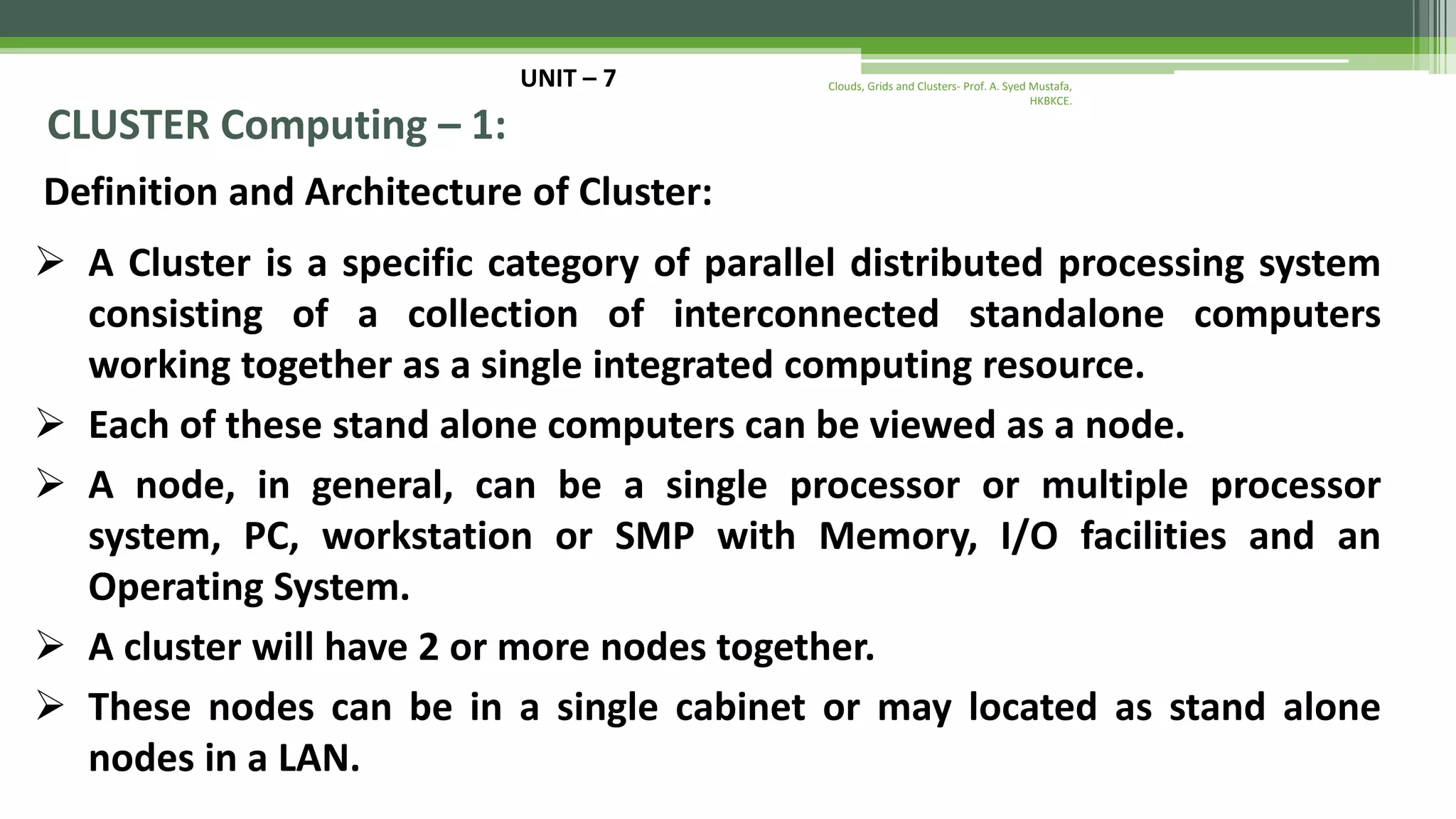
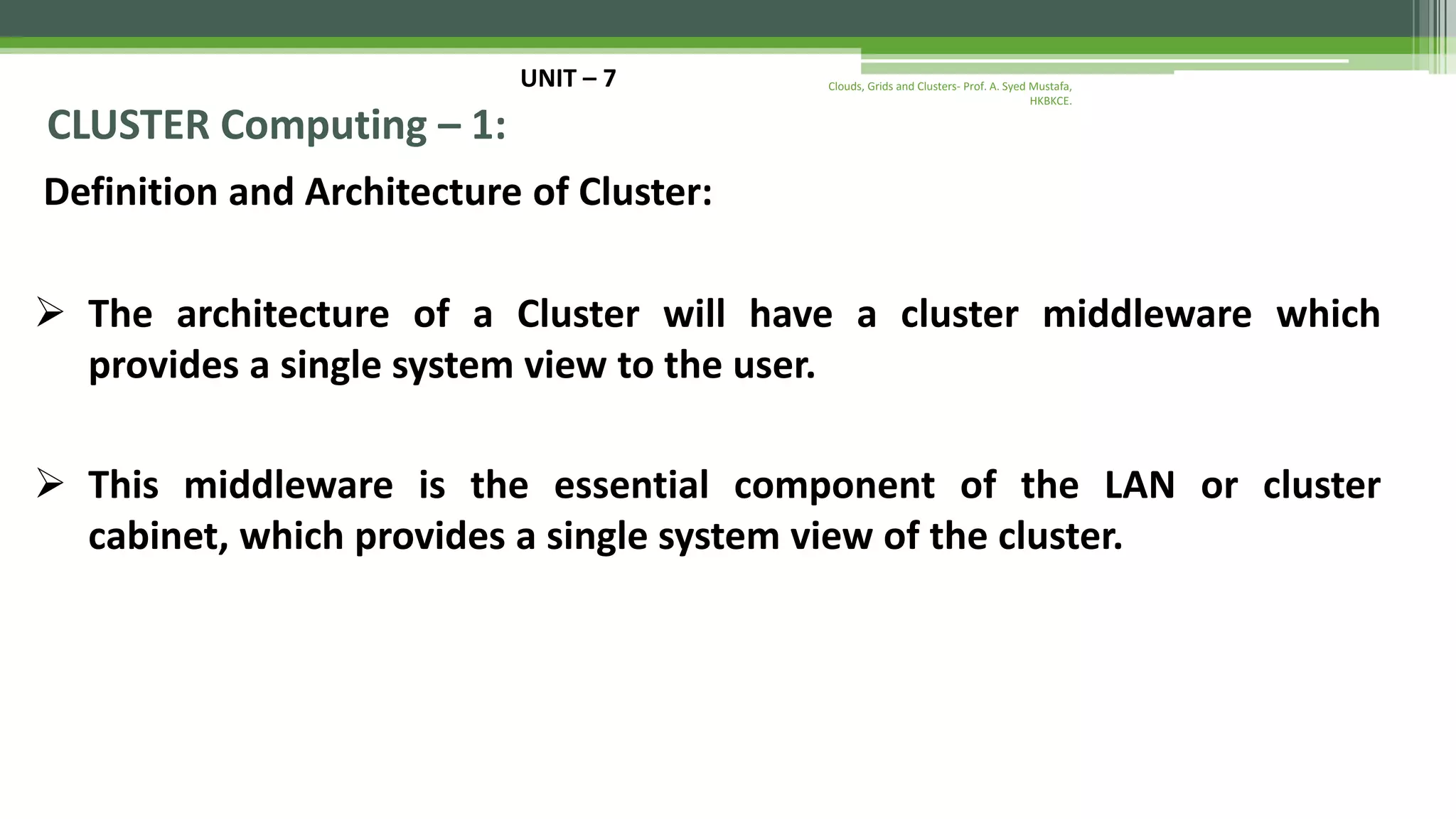
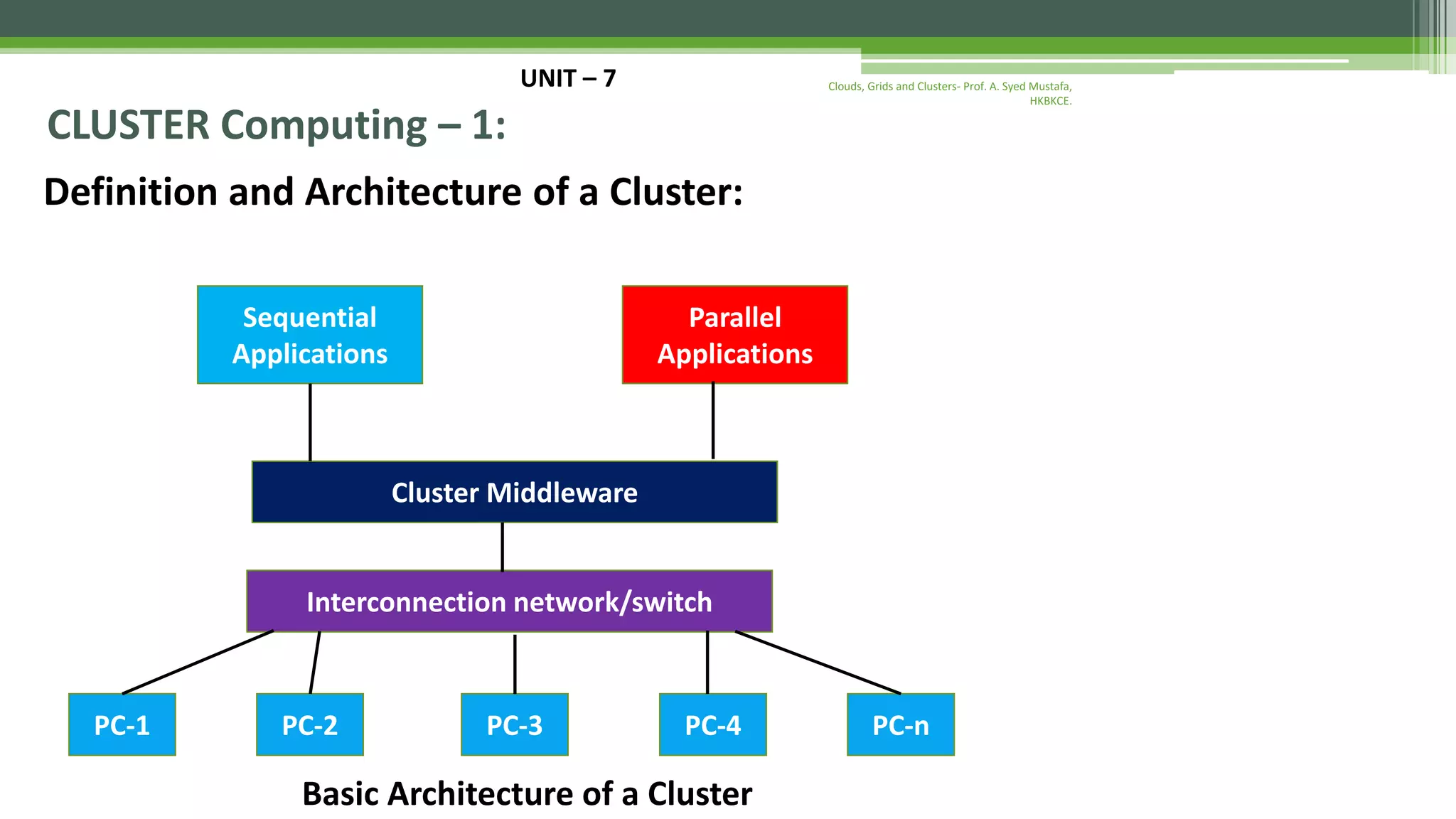
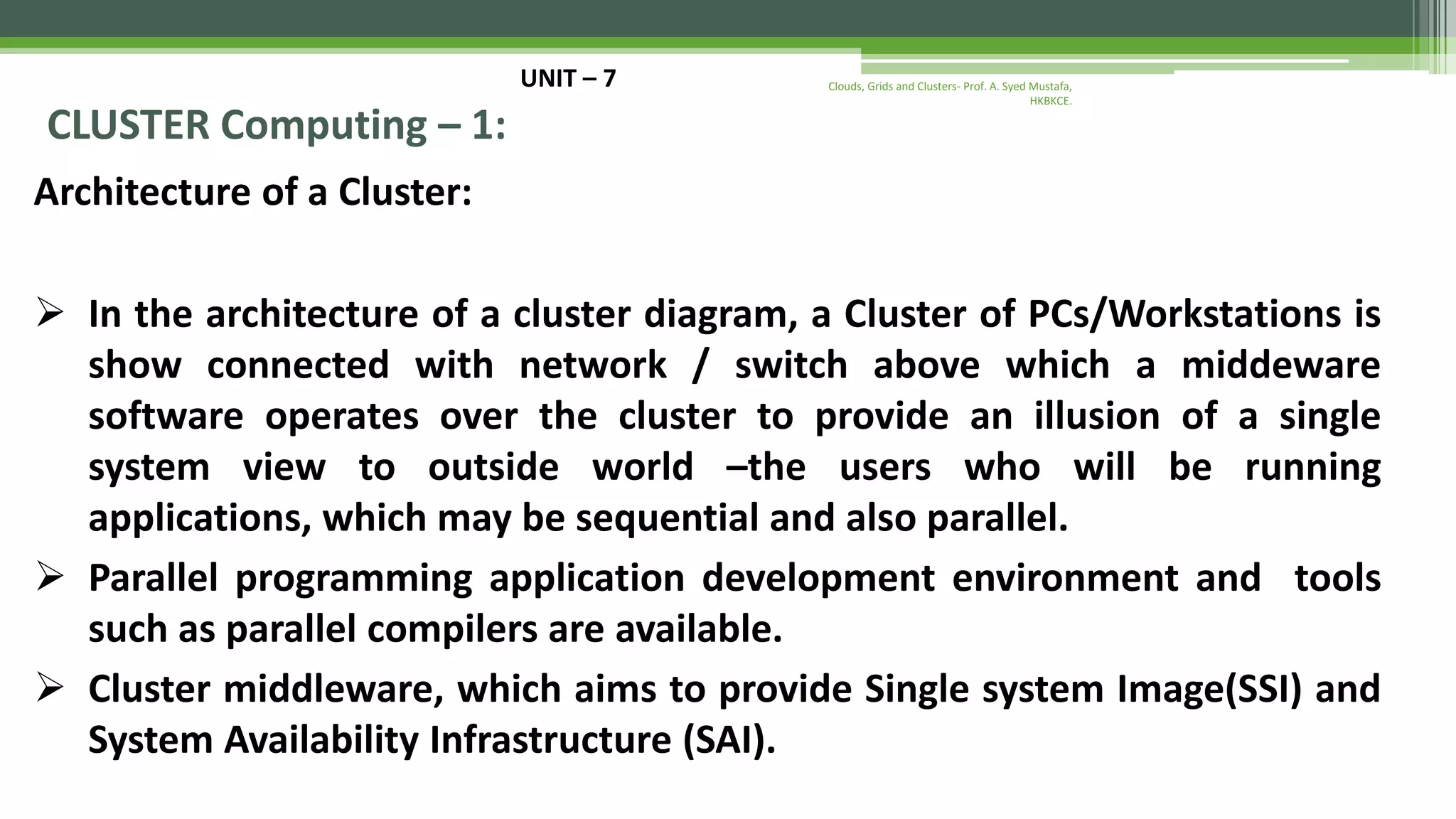

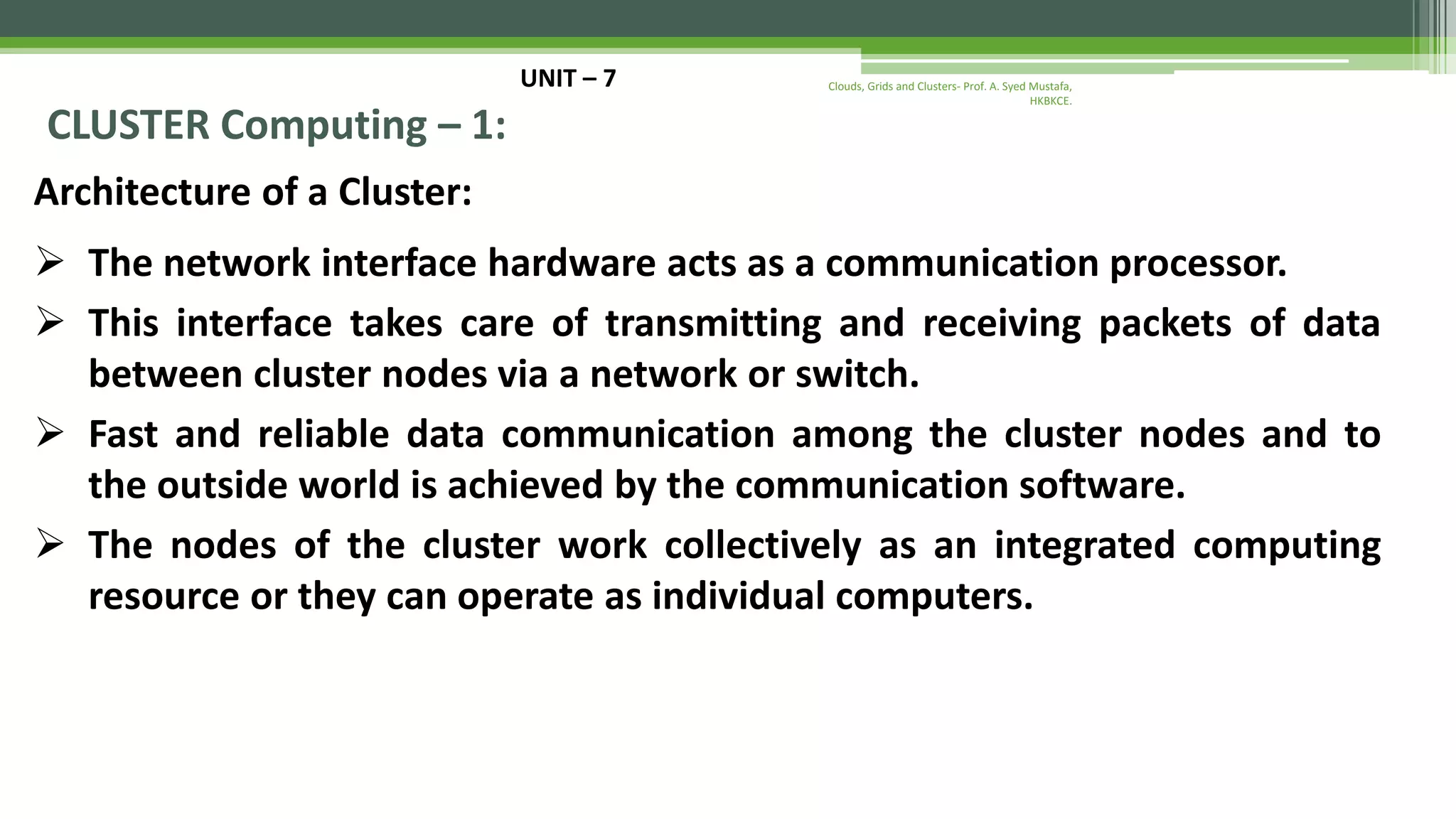
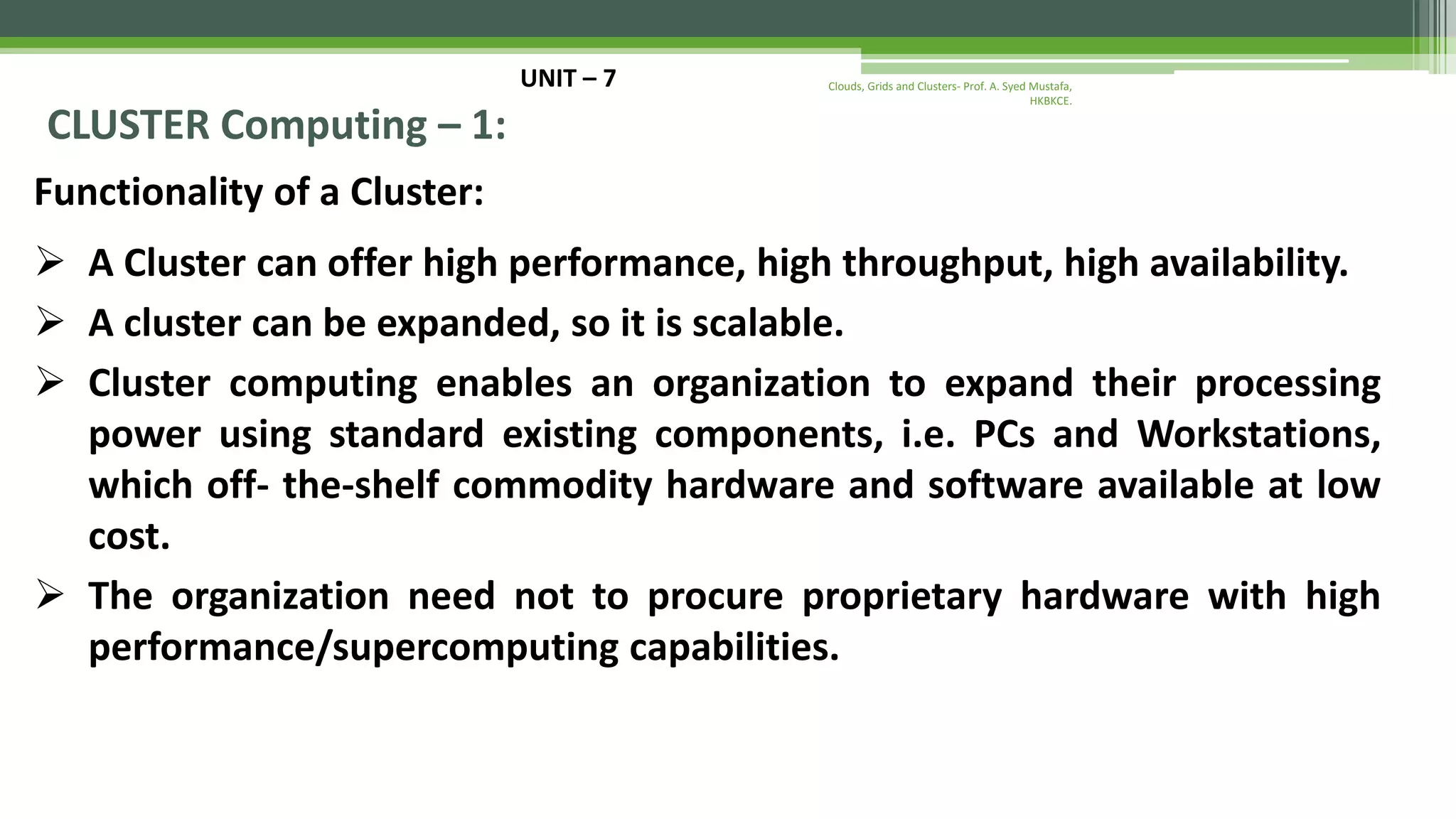
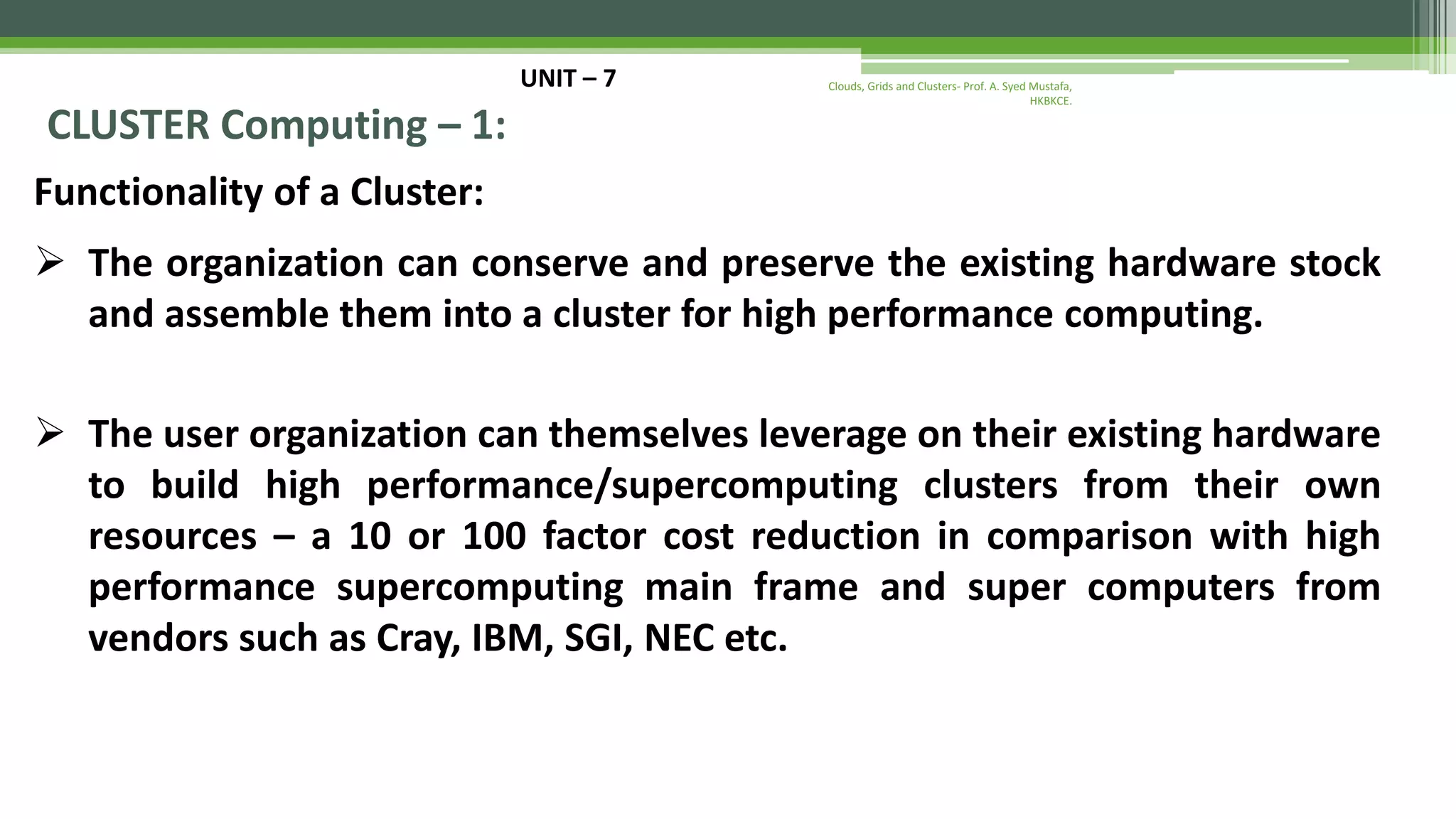
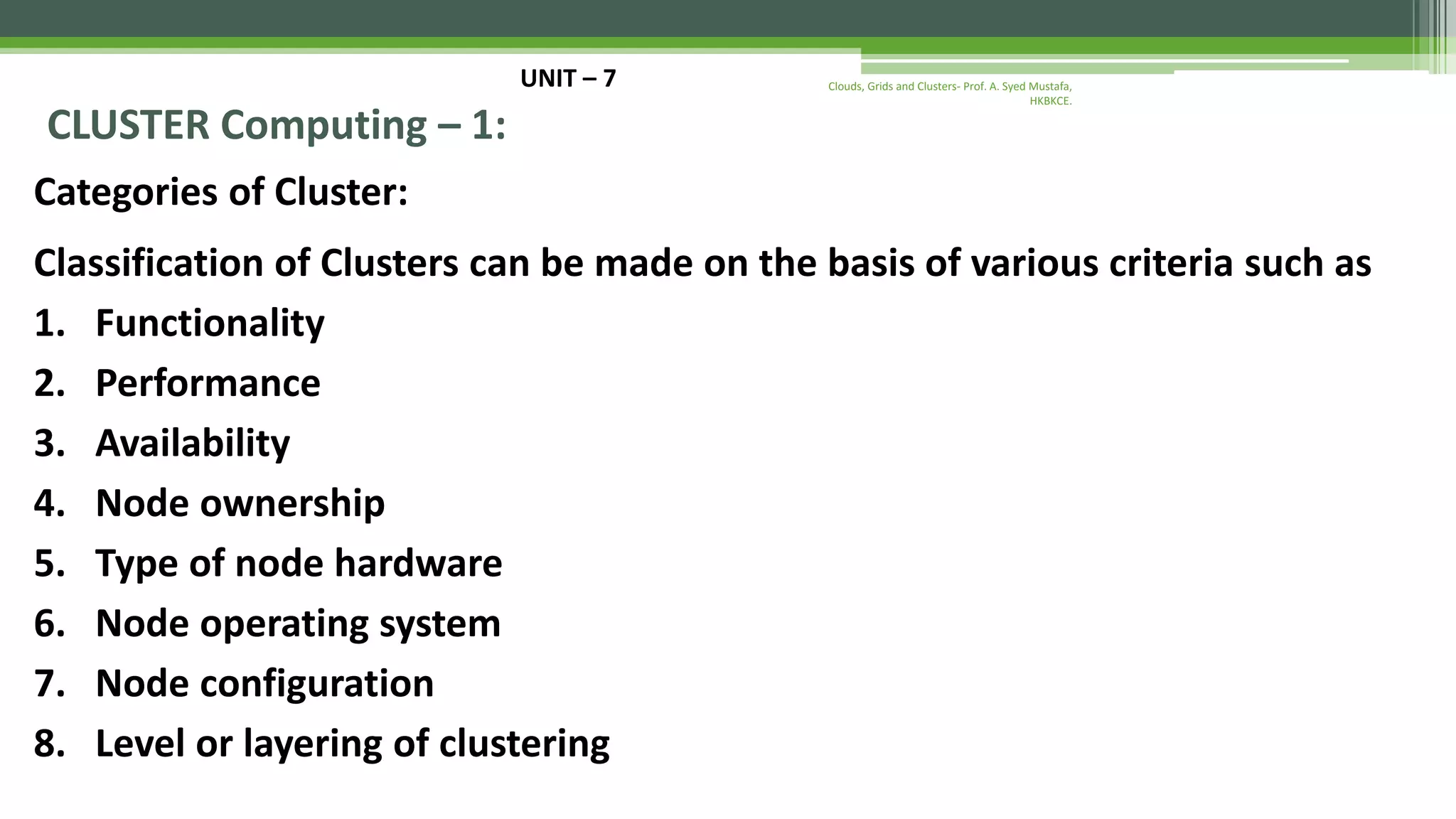
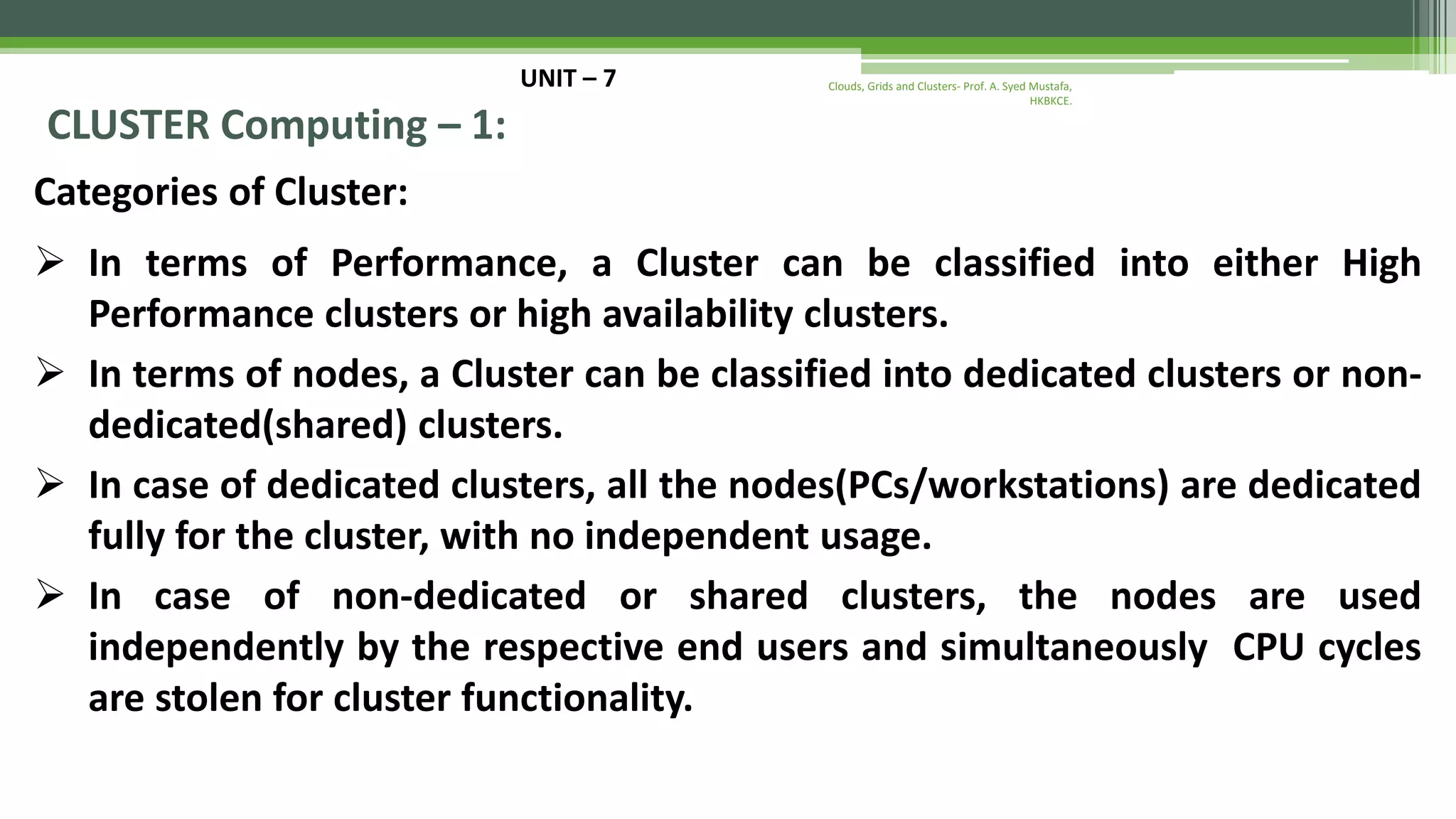
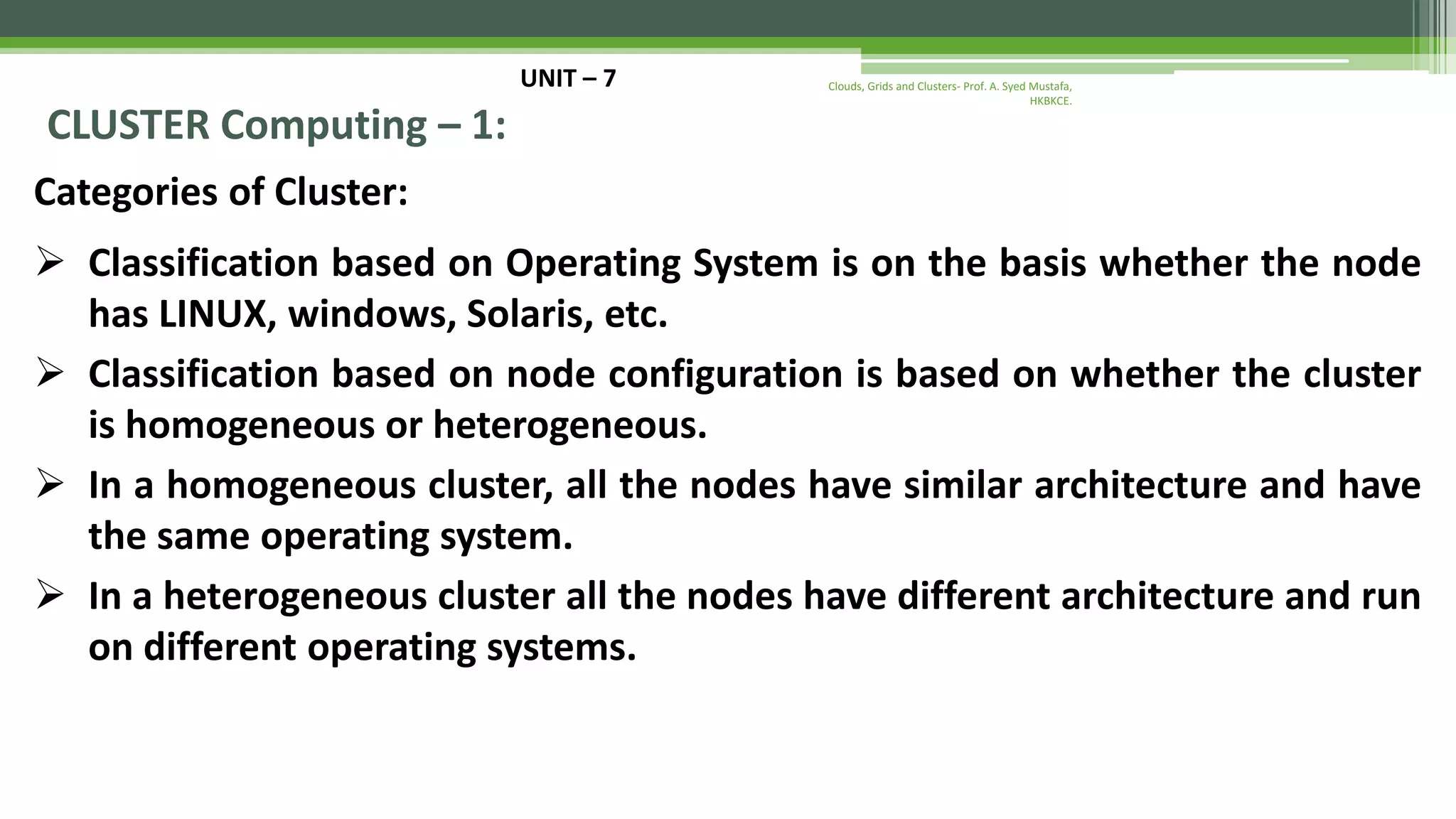
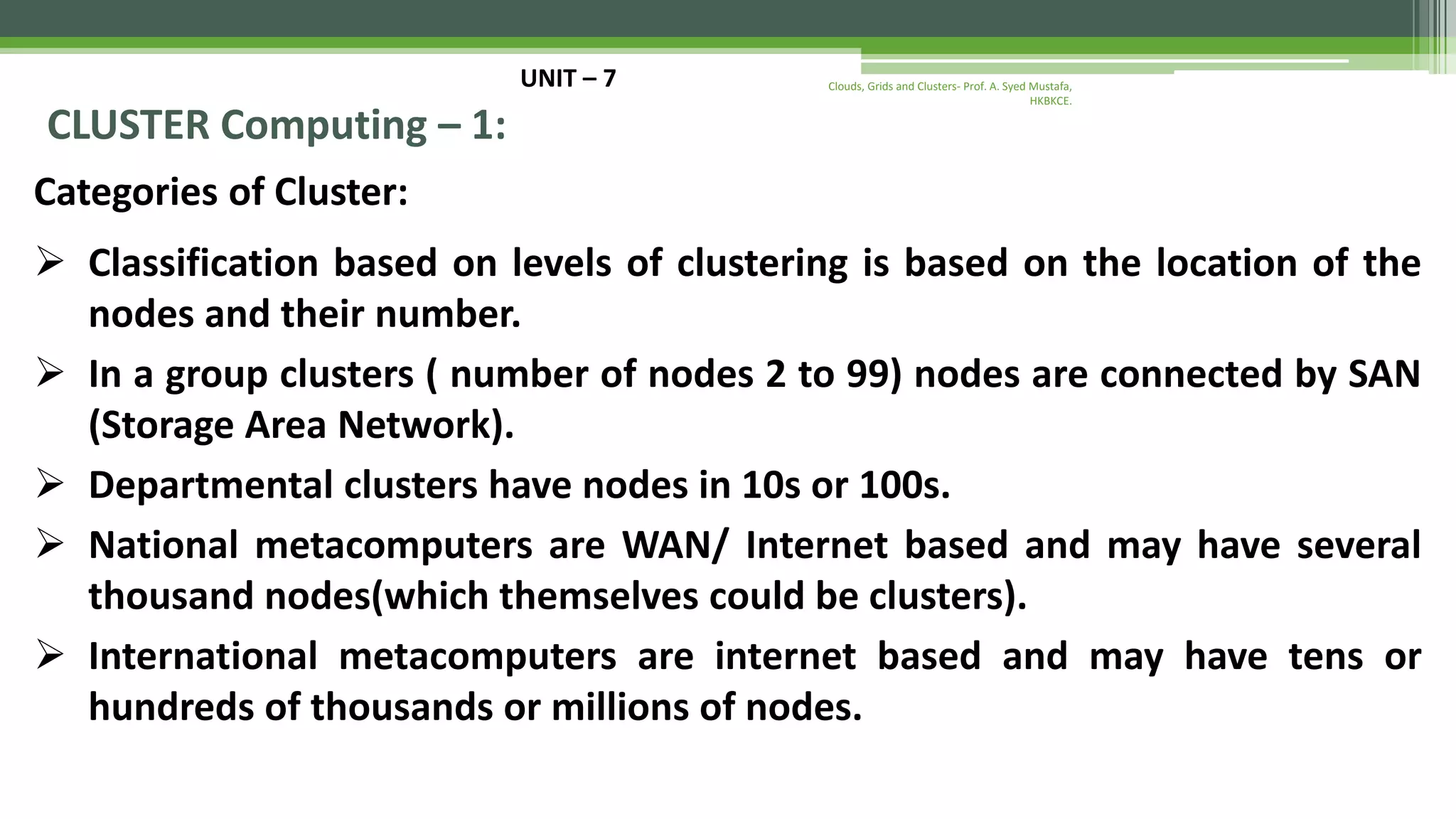
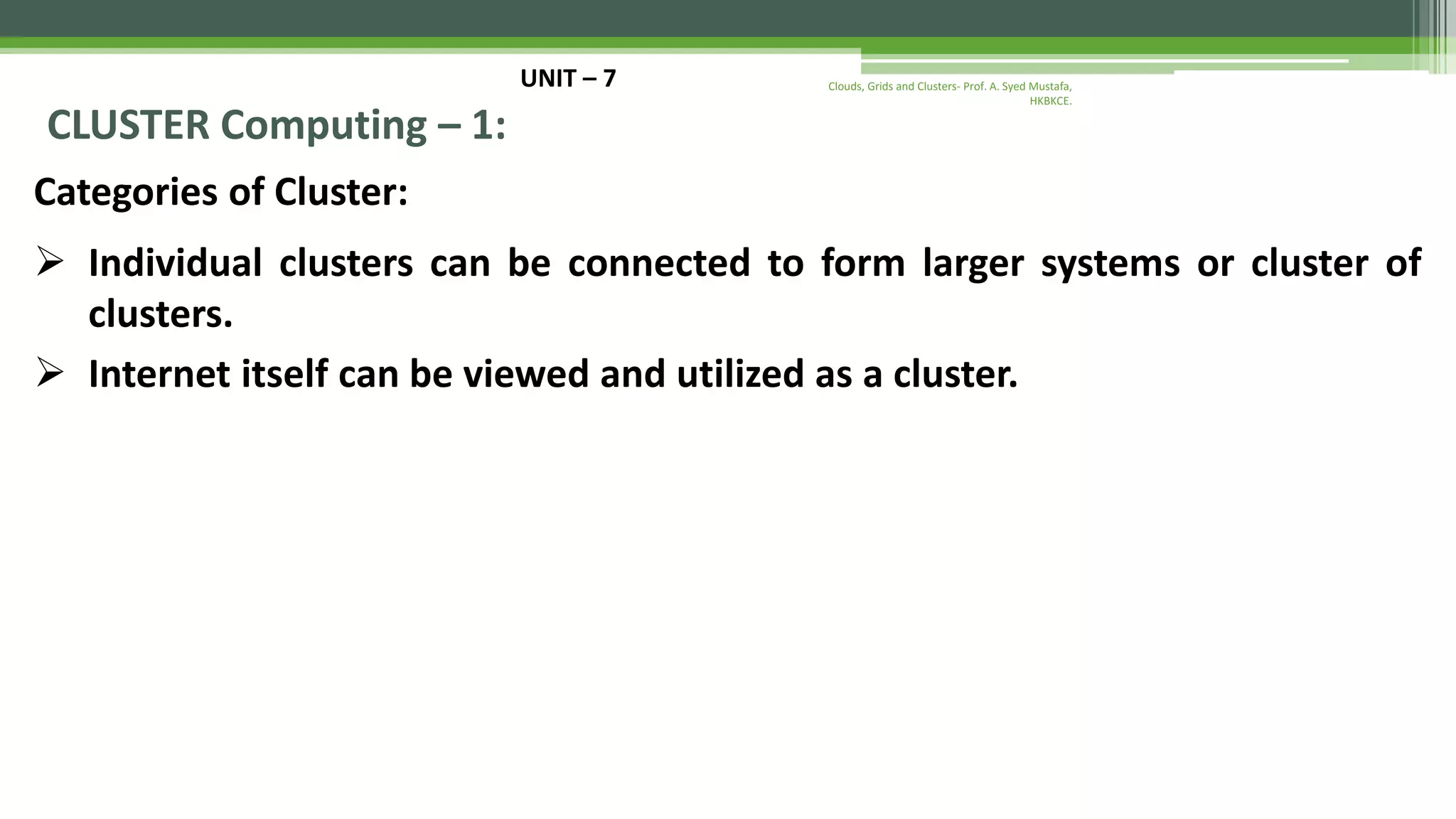
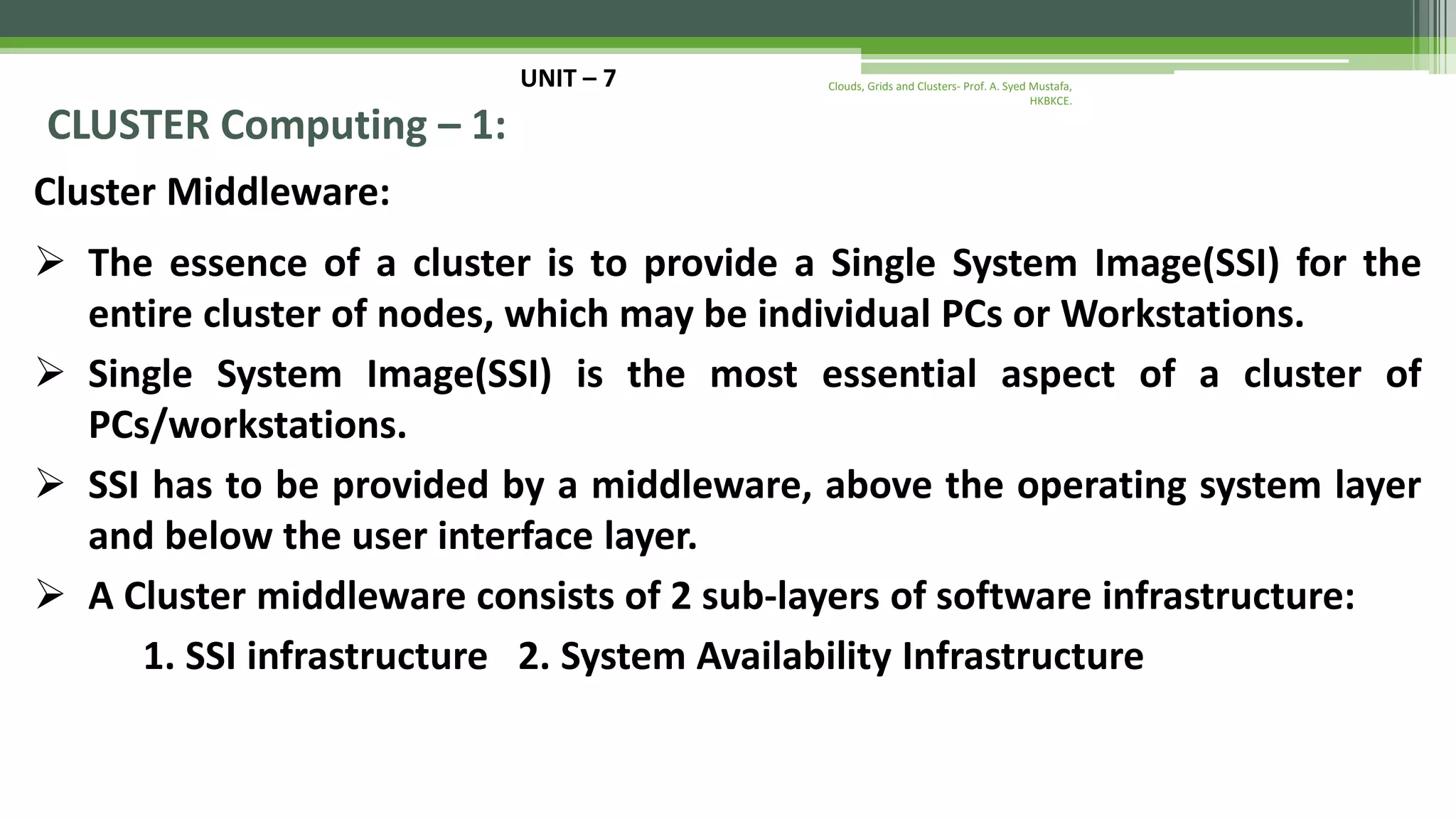
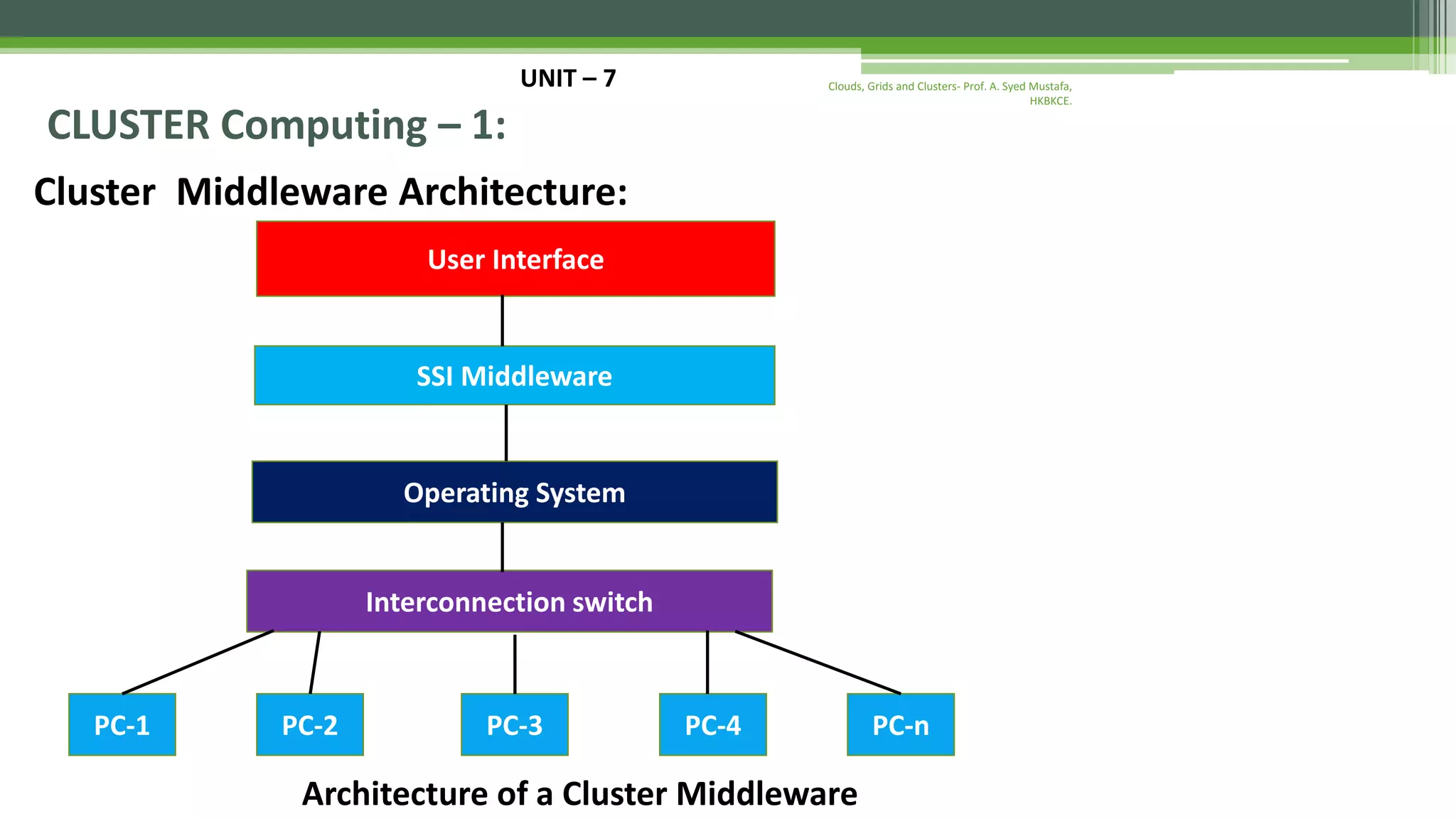
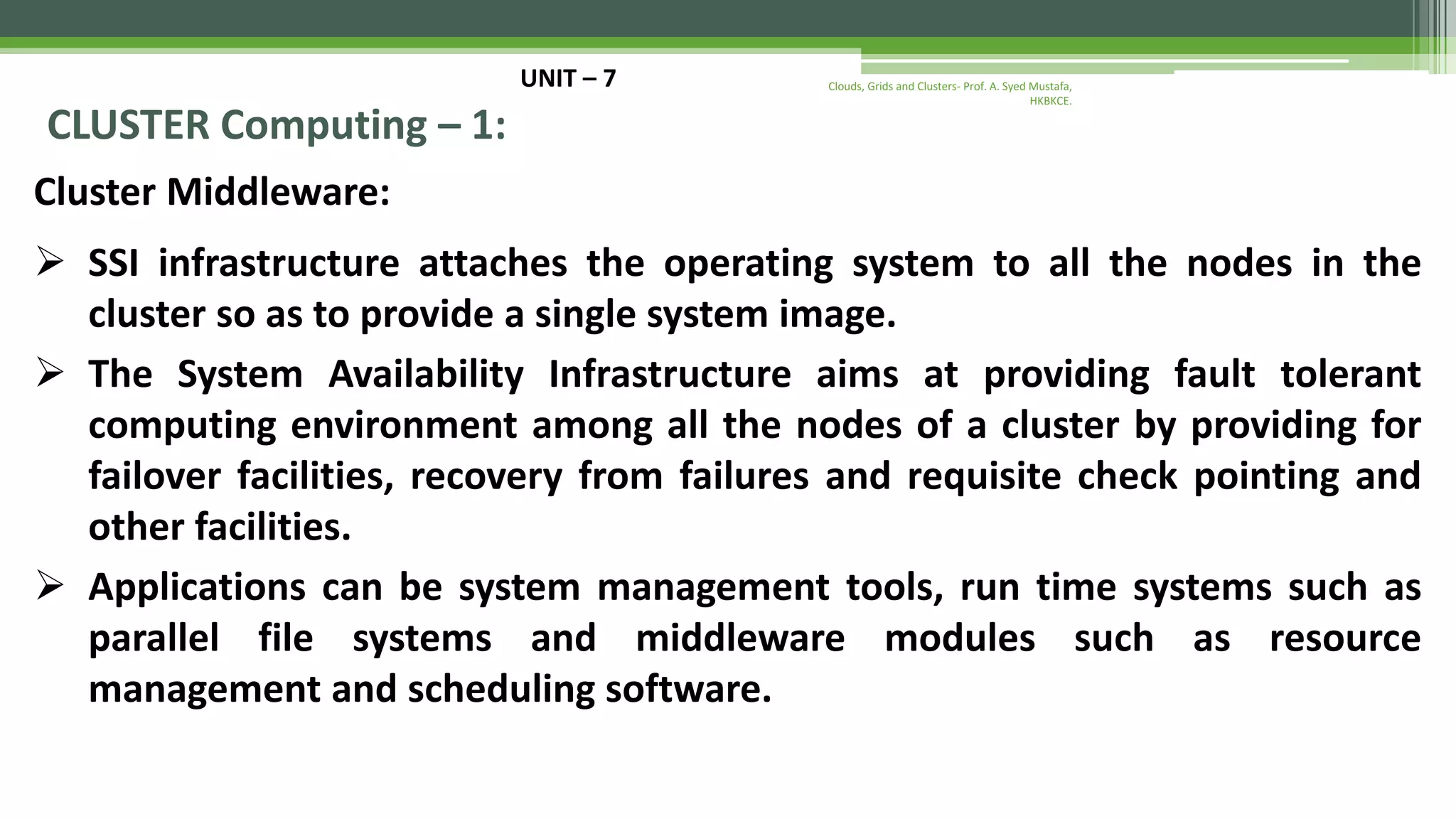
![UNIT – 7 CLUSTER Computing – 1: Levels and Layers of Single System Image[ Parts of SSI ]: 1. HARDWARE Layer: SSI at hardware level allows a user to view the cluster as a shared-memory system. A Memory Channel in a dedicated cluster environment provides virtual shared memory among nodes by means of intermodal space mapping. 2. OPERATING SYSTEM Kernel or ‘gluing layer’: A Cluster operating systems will have to support the execution of both parallel applications and sequential applications. The goal is to pool the resources of a cluster both parallel and sequential applications. For this purpse ‘gang scheduling’ of parallel programs has to be done by the OS. Clouds, Grids and Clusters- Prof. A. Syed Mustafa, HKBKCE.](https://image.slidesharecdn.com/gridcomputingnotes-160415161217/75/Grid-computing-notes-138-2048.jpg)
![UNIT – 7 CLUSTER Computing – 1: Levels and Layers of Single System Image[ Parts of SSI ]: 2. Operating System Kernel or ‘gluing layer’: The OS has to identify the idle resources such as processors, memory and network in the cluster system and offer globalized access to all these resources. It should achieve load balancing by supporting optimal process migration. It should also provide fast inter process communication for the application. OS which supports SSI are SCO UnixWare and SUN Solaris MC. A full scale cluster wide SSI enables all physical resources and kernel resources to be accessible from and usable by all nodes within cluster systems. Each node should see a uniform single system image. A full SSI at Kernel Level can be very economical, since the applications at each node will run directly without any modifications or code rewriting. Clouds, Grids and Clusters- Prof. A. Syed Mustafa, HKBKCE.](https://image.slidesharecdn.com/gridcomputingnotes-160415161217/75/Grid-computing-notes-139-2048.jpg)
![UNIT – 7 CLUSTER Computing – 1: Levels and Layers of Single System Image[ Parts of SSI ]: 3. Application Layer and middle/sub-system Layer: Multiple cooperating components can be presented as a Single System Image to the user or administrator as a single application. Single system Image can be at all levels. A cluster administration tool offers a single point of management and control of SSI services. Sub-systems of cluster offer single means to create easy-to-use GUI tools. File System SSI ensures that every node in the cluster has the same view of the data. Global Scheduling of jobs is done by the scheduling modules in an efficient manner, offering high availability. Clouds, Grids and Clusters- Prof. A. Syed Mustafa, HKBKCE.](https://image.slidesharecdn.com/gridcomputingnotes-160415161217/75/Grid-computing-notes-140-2048.jpg)
![UNIT – 7 CLUSTER Computing – 1: Levels and Layers of Single System Image[ Parts of SSI ]: 3. Application Layer and middle/sub-system Layer: The benefits of SSI are well identifiable. From any node a single image of all the resources is offered without any node for the end user, and also the operators, to know where a particular application will run, or where a particular resource exists. SSI enables the system administrator to control the entire cluster as one system, with single familiar interface and commands, with central system management capability. It improves the system reliability and operational manageability. Clouds, Grids and Clusters- Prof. A. Syed Mustafa, HKBKCE.](https://image.slidesharecdn.com/gridcomputingnotes-160415161217/75/Grid-computing-notes-141-2048.jpg)
![UNIT – 7 CLUSTER Computing – 1: Resource Management and Scheduling [ RMS ]: RMS is the act of distributing the application load among the individual computer systems in a cluster, so as to maximize the utilization throughput by maximizing the resource utilization. RMS is a software function and has two parts, namely resource manager and resource scheduler. Resource manager is responsible for all aspects of locating and allocating computational resources, authentication and also issues relating to process creation and migration. The resource scheduler is responsible for scheduling and queuing. RMS is based on client-server architecture. RMS functionality is based on Server Daemons. Clouds, Grids and Clusters- Prof. A. Syed Mustafa, HKBKCE.](https://image.slidesharecdn.com/gridcomputingnotes-160415161217/75/Grid-computing-notes-142-2048.jpg)
![UNIT – 7 CLUSTER Computing – 1: Resource Management and Scheduling [ RMS ]: Users can interact RMS through a client program or web Browser. Applications can be online or batch mode. The batch job is submitted after submitting its details such as location of the executable module and input datasets, the location where the output should be placed, system type, maximum length of the run, the nature of resources required-sequential or parallel. RMS will execute the submitted job, based on the details submitted. Clouds, Grids and Clusters- Prof. A. Syed Mustafa, HKBKCE.](https://image.slidesharecdn.com/gridcomputingnotes-160415161217/75/Grid-computing-notes-143-2048.jpg)
![UNIT – 7 CLUSTER Computing – 1: Resource Management and Scheduling [ RMS ]: RMS will also have to enable heterogeneous environments of PCs/workstations, and SMP and other dedicated parallel platforms to be easily and efficiently utilized with the following services: 1. Load Balancing by distributing application load across all the nodes in the cluster to achieve efficient and effective use of all the resources-this may involve process migration from one node to another. 2. Process migration involving termination/succession, moving and restarting processes in another node. 3. Resource scheduling involving setting up job queues to easily manage the resources of a given organization. Each Queue can be configured with certain attributes such as the priority of the short jobs against the priority of the long jobs or based on specialized resources such as parallel computing platforms. Clouds, Grids and Clusters- Prof. A. Syed Mustafa, HKBKCE.](https://image.slidesharecdn.com/gridcomputingnotes-160415161217/75/Grid-computing-notes-144-2048.jpg)
![UNIT – 7 CLUSTER Computing – 1: Resource Management and Scheduling [ RMS ]: 4. Check pointing is required for managing abrupt abortions or job terminations, so that restart/ recovery can be easily achieved. Thus improving the system availability and reliability. 5. Better CPU utilization is achieved by RMS by engaging idle CPU cycles with jobs. In case of idling CPUs, jobs can be assigned to them by RMS. Clouds, Grids and Clusters- Prof. A. Syed Mustafa, HKBKCE.](https://image.slidesharecdn.com/gridcomputingnotes-160415161217/75/Grid-computing-notes-145-2048.jpg)



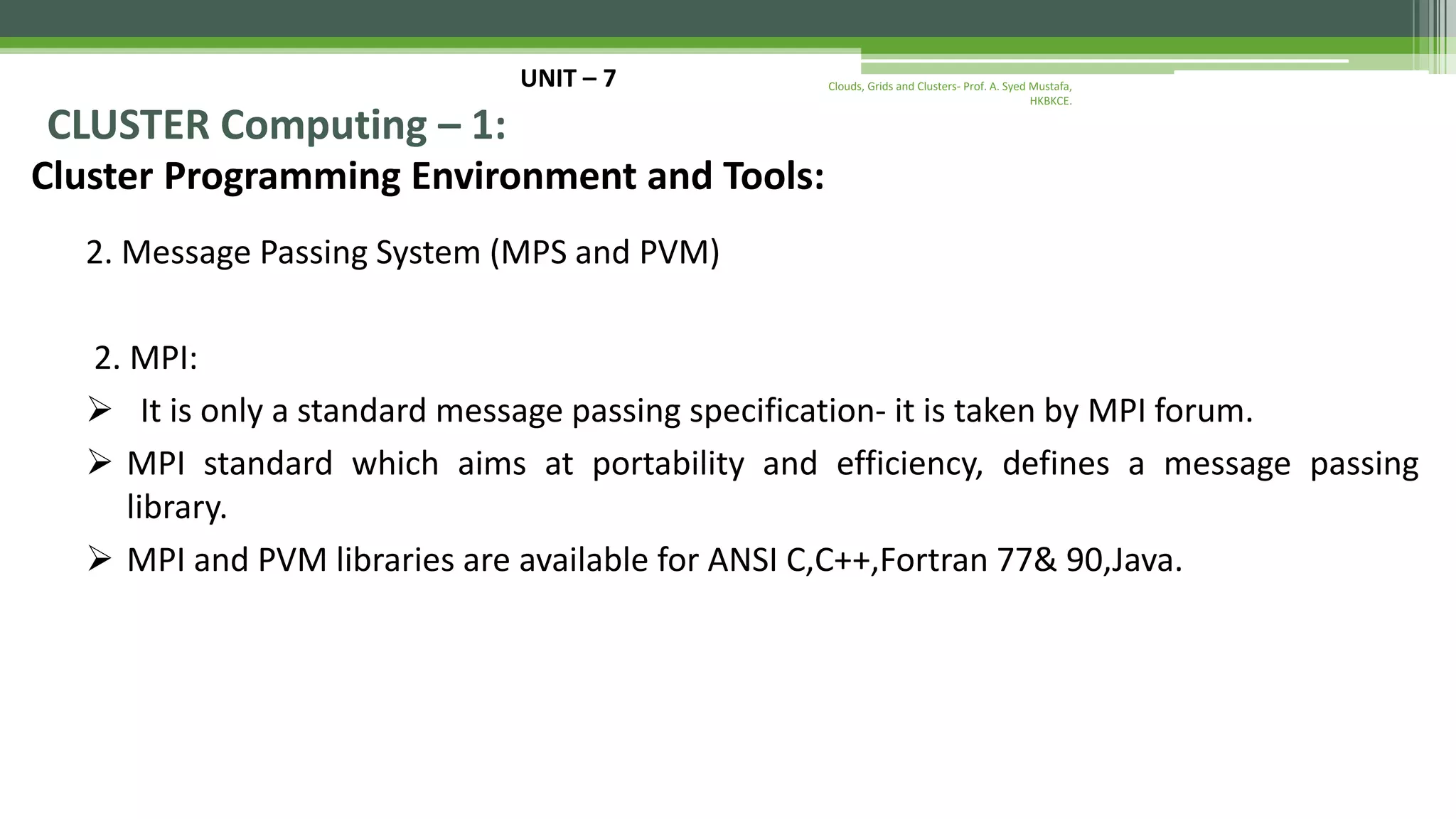

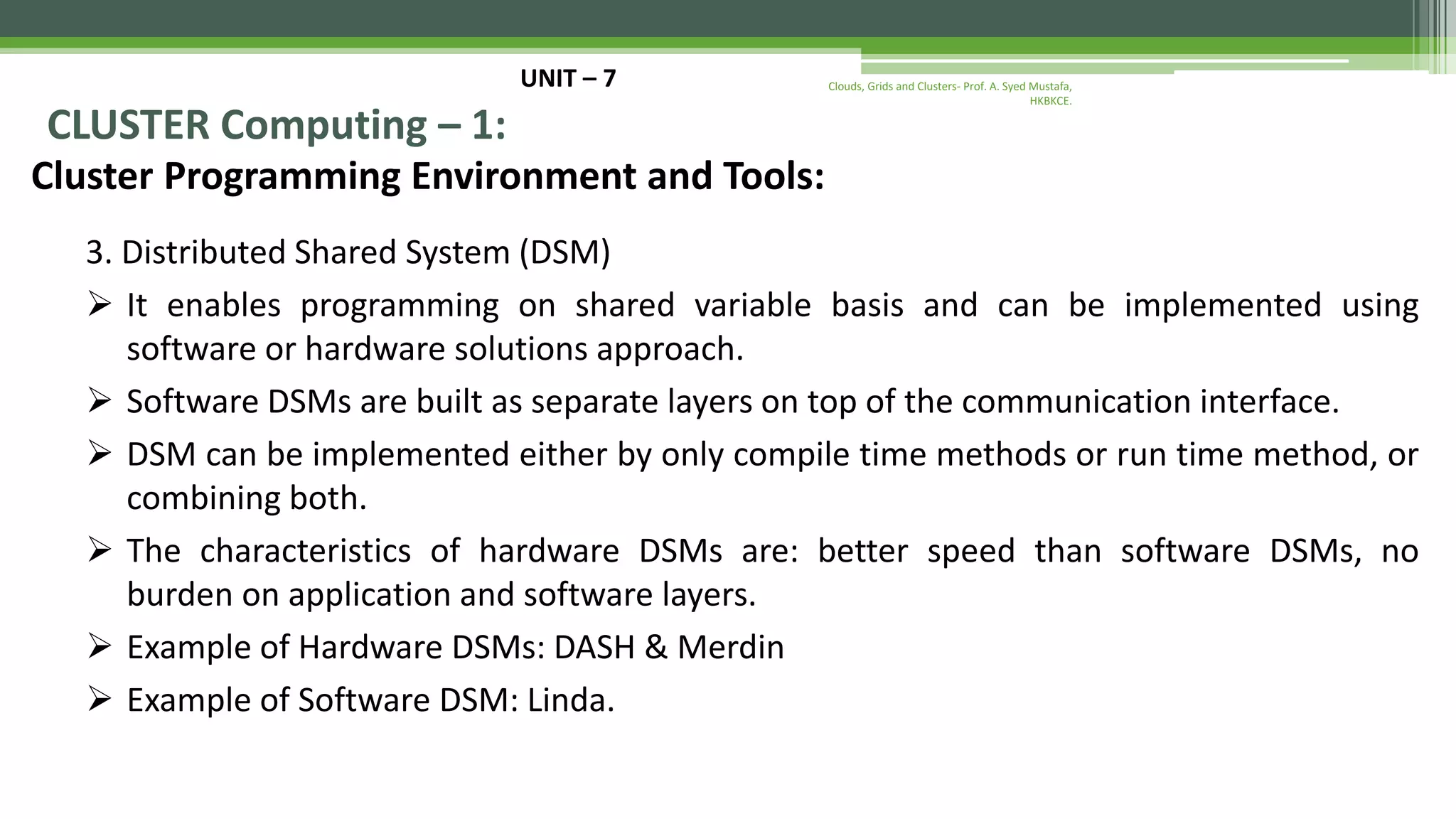
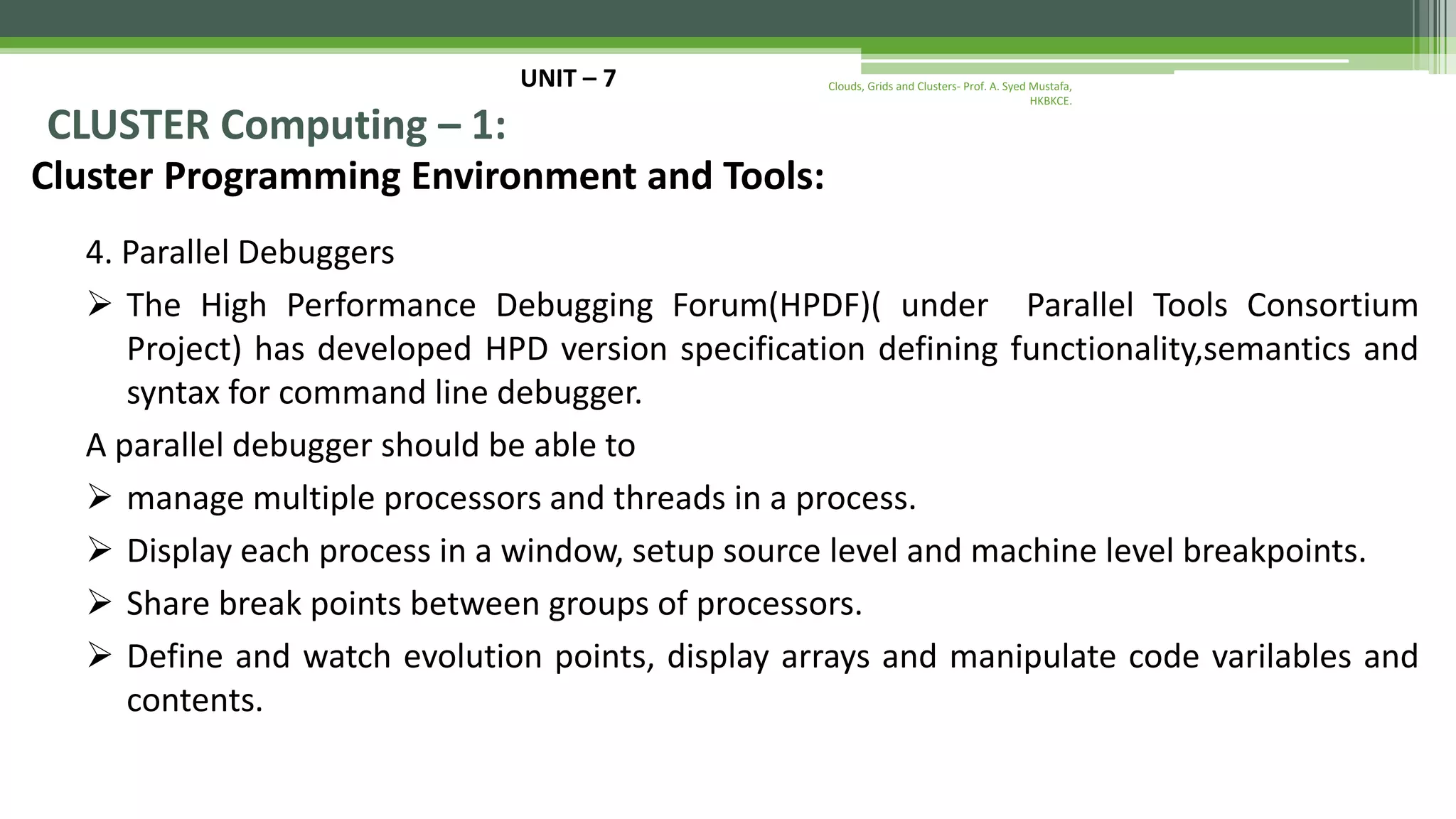
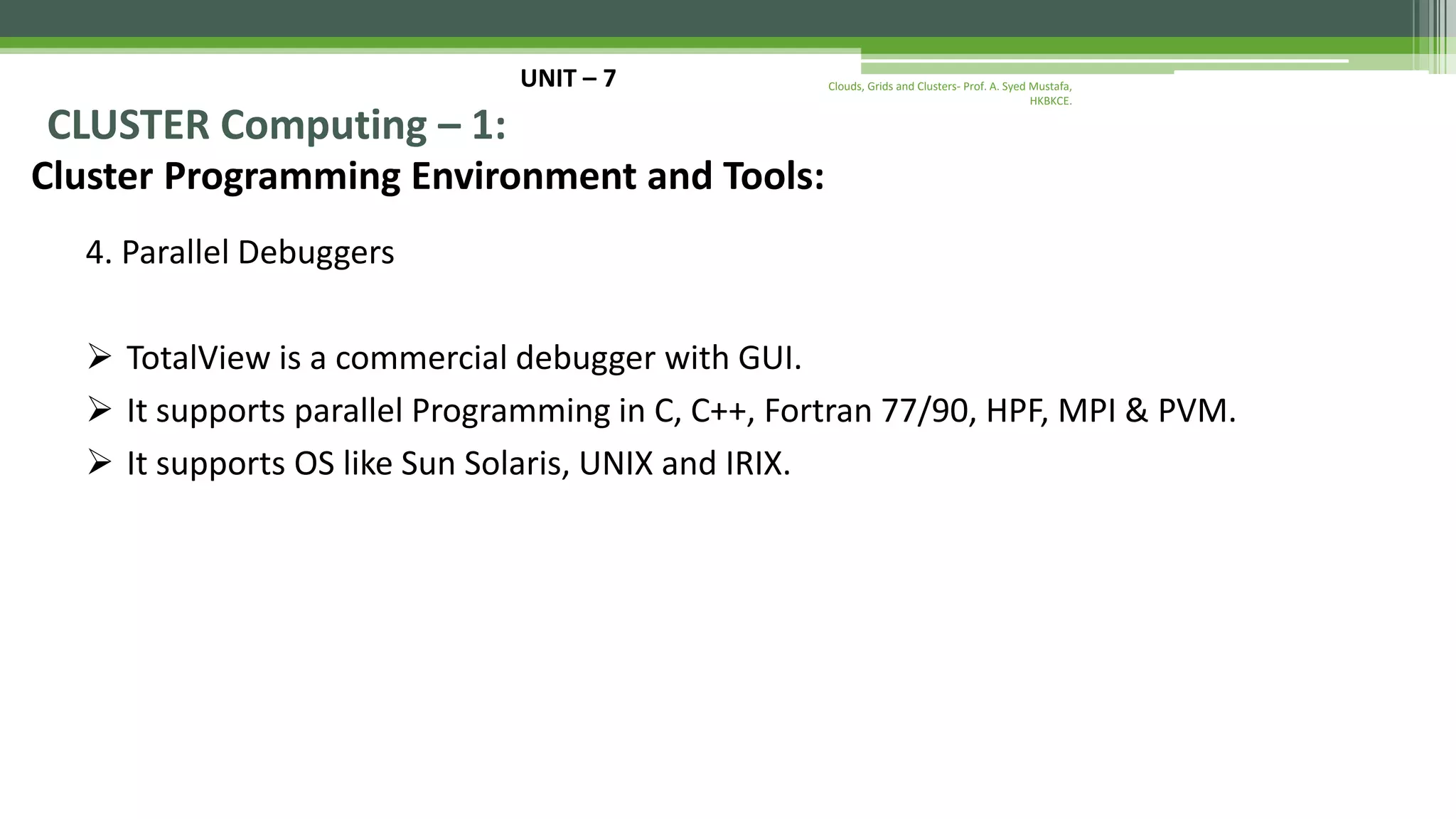


![UNIT – 7 CLUSTER Computing – 1: High Throughput Computing Cluster [ HTC ]: HTC is an environment which provides large amounts of processing capacity to consumers over long periods of time, by fully harnessing the existing computational resources available on the cluster network. Fro achieving high throughput computing over long periods of time, the clustering environment should be robust, reliable and maintainable- surviving software and hardware failures –by appropriate failover, failback mechanisms, allowing resources to join and leave the cluster easily, and enabling system upgradation and reconfiguration without any significant down time, with very high MTBF( Mean Time Between Failure ). Clouds, Grids and Clusters- Prof. A. Syed Mustafa, HKBKCE.](https://image.slidesharecdn.com/gridcomputingnotes-160415161217/75/Grid-computing-notes-156-2048.jpg)


